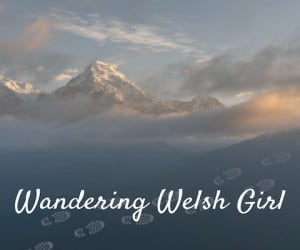

The Best Things To Do In Northern Greece
Greece has been the inspiration for travellers , philosophers and writers for centuries. Most people imagine Greece as being paradise islands with white sand beaches, or whitewashed villages overlooking crystal clear blue waters.
And whilst these destinations are incredibly beautiful, Greece is so much more than just its seaside locations. The country is rich in culture, tradition and history, all of which can be seen wherever you go.
Northern Greece is not a region tourists often think to visit, but it’s just as, if not more, beautiful than the south with its Ottoman architecture, areas of natural beauty and specialised cuisine.
So, for more information on the best places to visit in Northern Greece, read on below.
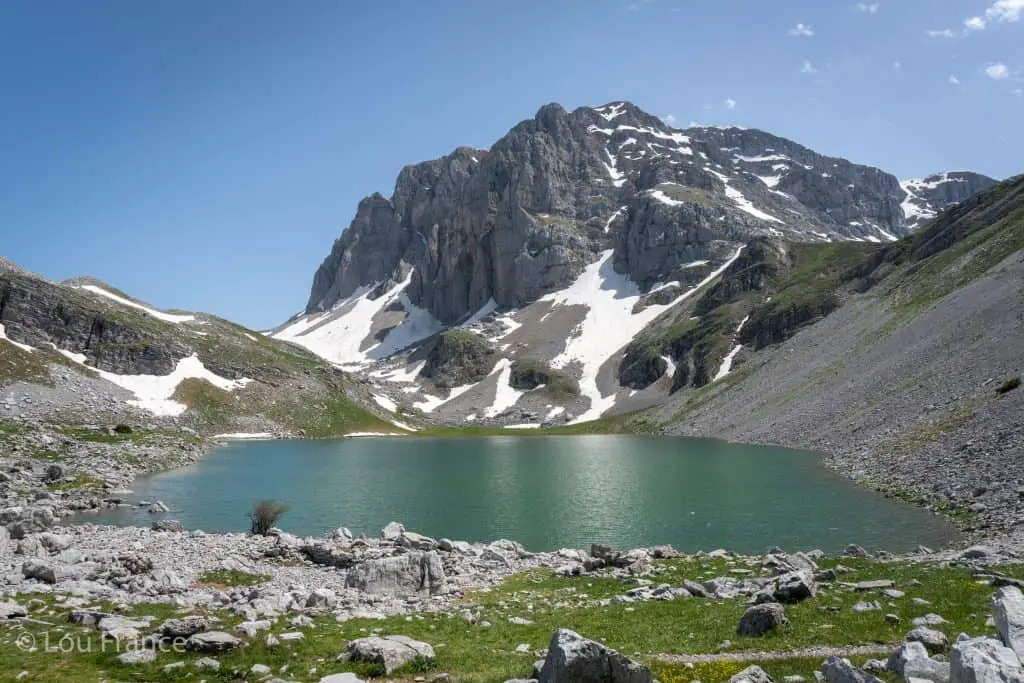
Disclaimer: Some links in this article are affiliate links, which means that if you purchase through them I receive a small commission, at no extra cost to you. This helps cover the cost of running this blog. Thanks for your support!
17 Top-Rated Things To Do In Northern Greece
In late spring this year we spent a month exploring Northern Greece as part of our European road trip from the UK to Turkey . We had no expectations and ended up being blown away by the places we visited. These are our top rated things to do in Northern Greece.
1. Become Mesmerised by Monasteries at Meteora
Meteora is a highlight not only of Greece but of Europe , and a place in northern Greece to dedicate at least a day or two for exploring. Meteora is a unique landscape where large rock pillars dominate the surrounding plains.
Atop the rounded pillars of Meteora, you can find one of the largest complexes of Eastern Orthodox monasteries. Originally there were 24 monasteries, each own their own pillar, boulder or cave, but today there remains only six, all of which are open to public visits.
Each of the monasteries is closed one day of the week so if you have a particular monastery in mind, you’ll have to plan your visit accordingly. The complexes vary in size and impressiveness. Most require a basic level of fitness to enter as access is usually via a steep set of stairs.
Dotted around the scenic valley drive there are also several jaw-dropping view points which make for beautiful photos and a lovely place to enjoy sunset. The quaint village of Kastraki is a good base from which to explore the valley and is home to several good tavernas and guesthouses .
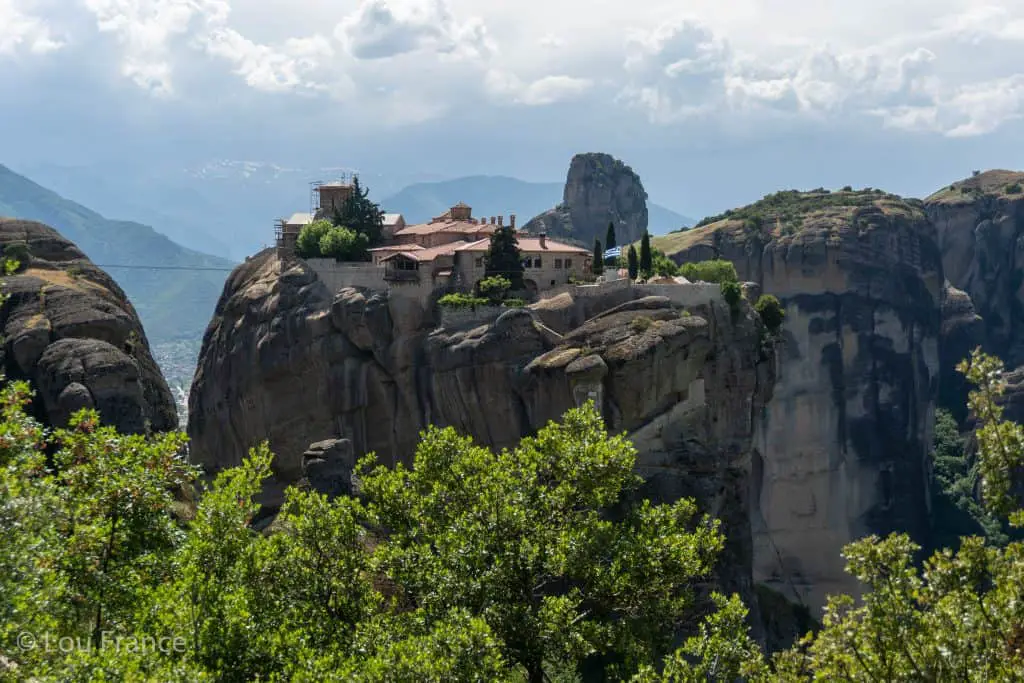
2. Relax by the Crystal Clear Waters of Halkidiki
Halkidiki is an area of Northern Greece known for its three, finger-like peninsulas. The peninsulas have a winning combination of clear turquoise water, white sandy beaches and rocky coves, backed by forests of Mediterranean trees. For this reason, it is the most popular summer destination in Northern Greece.
The eastern most peninsula is home to Mount Athos, which is sacred area and requires permits to visit. Sithonia is the peninsula with the most beaches whilst Kassandra is the most developed for tourism. During your visit to these beautiful peninsulas you can enjoy a cycle ride, tour the vineyards or simply relax on one of the many beautiful beaches.
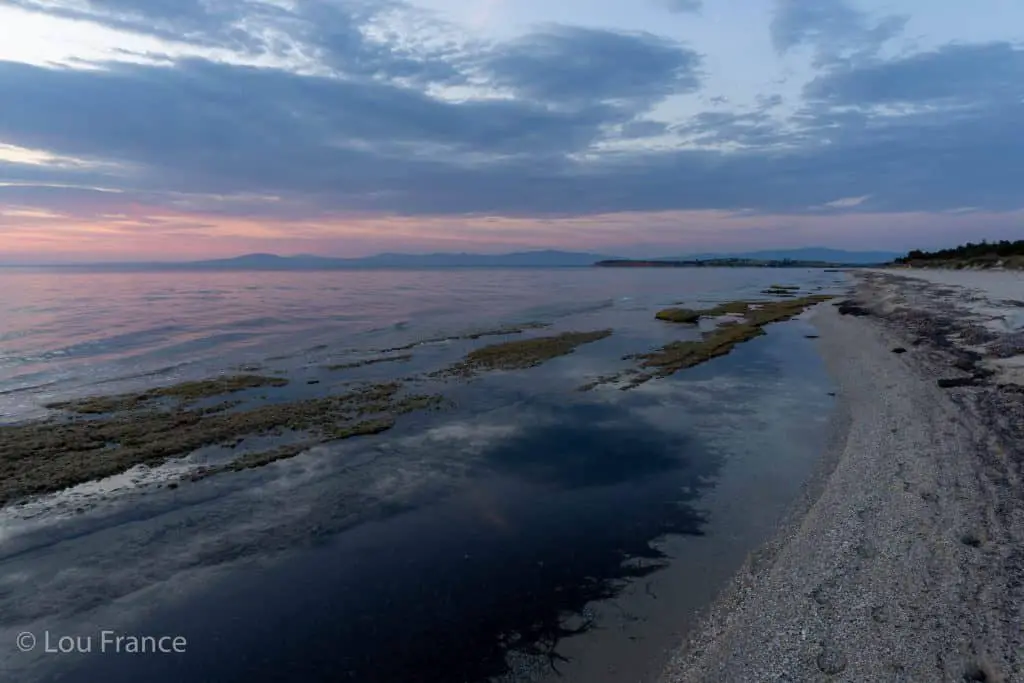
3. Explore Greece’s Second Largest City, Thessaloniki
I may not be a huge city fan but Thessaloniki is certainly an exception to the rule. This perfectly placed port city is packed with things to do.
Whilst Athens may get the historic limelight, Thessaloniki is home to its own rich history, most of which can be seen scattered throughout the city. Top ancient sights include the Roman Agora, Rotonda and Arch of Galerius in the centre of town and the Byzantine era Baths and Agios Demetrios Church. You can visit all the top sites on this hop-on hop-off bus tour .
Depending on your interest, there is a wide choice of museums to visit in Thessaloniki and it’s also a paradise for shoppers and foodies alike. Delve deeper into Thessaloniki’s culinary scene on this walking food tour .
Once evening rolls around, head to the promenade where you can enjoy a sunset stroll or climb up the Ottoman-era White Tower. Alternatively, venture to Eptapyrgio Castle to catch the last rays of sunshine glimmering over the Agean sea.
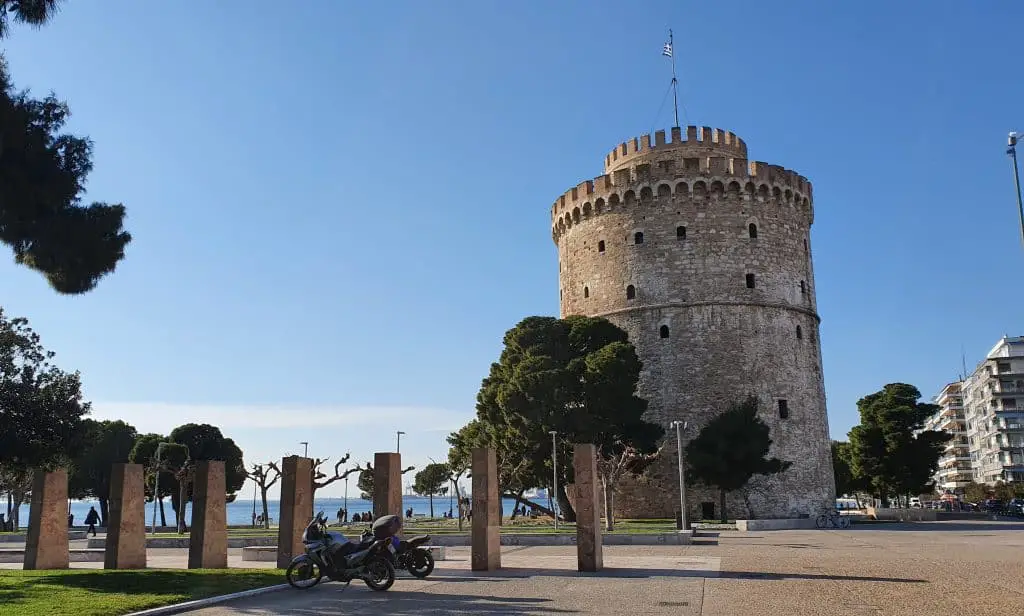
4. Enjoy a Hike in Pindos National Park
Pindos National Park is a true delight for hikers and a real hidden gem of Greece. Spread across 2000 km2, the park is a mix of lush green forests and steep craggy peaks. Covering a section of the Pindus mountain range, the park contains several peaks over 2000m and a collection of black stone villages, all linked through well-marked trails.
Two of the best hikes to enjoy in Pindos are Vikos Gorge and Dragon Lake (Drakolimni). Sitting at the foot of Mount Tymfi, Vikos Gorge is actually the deepest canyon in the world but at only 20km in length, it’s possible to walk the gorge in just one day. Since the gorge is covered in trees, the hike is sheltered from the blazing sun for most of the route which can be a huge benefit in the summer months.
For those that want to experience the finest alpine views Greece has to offer, don’t miss a hike to Dragon Lake. Climbing over 1000m and taking around 4 hours one-way, this hike is no stroll in the park but is achievable in one (big) day. If you’d prefer to break up the hike you could opt to spend a night at the Astraka refuge. Either way, the hike hike to Dragon Lake is extremely special and was a big highlight of our trip through Northern Greece.
Climbers should head to the village of Kipoi to tackle the range of climbing routes on offer nearby.

5. Wonder at the Stone Houses and Bridges of Zagori
You don’t need to be a hiker to enjoy the wonders of Pindos National Park. Scattered around this vast national park are the 46 villages of Zagori. These traditional mountain villages are known for their stone houses which are very different in appearance to the whitewashed houses found near the coast. Some notable villages include Papingo, Mikro Papingo and Monodendri.
The villages are linked by stone paths and bridges which date back to the Ottoman period. Many of the noteworthy bridges are located near the village of Kipoi. Some of the bridges that are particularly impressive include the 3-arched Bridge of Plakida or Kalogeriko, and the large single arched Bridge of Kokkori.
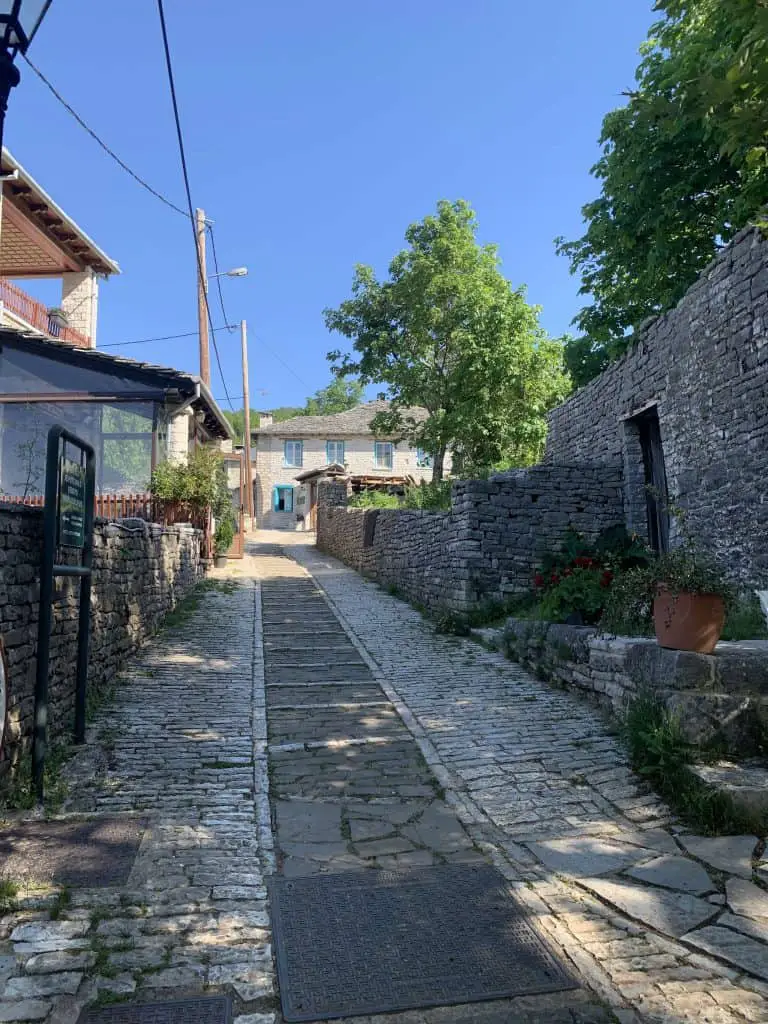
6. Learn About Alexander the Great at Pella
Ancient Pella was the capital of Macedon and the birthplace of Alexander the Great (as well as his father Philip). Today Pella is a small town located in the region of Central Macedonia.
There are two very big reasons to add Pella to your Northern Greece bucket list. One is the ancient archaeological site of Pella and the other is the archaeological museum of Pella. The ancient site is a large complex and takes several hours to walk around, however the majority of noteworthy points are centrally located. A few mosaics remain at the site, whilst the more intricate ones have been moved to the nearby museum.
If you buy a ticket at the archaeological site, the museum entry is included in the price and I certainly recommend a visit to this informative museum. As well as showcasing the mosaics, there are other artefacts which were found in the area such as pottery, coins, clothing and furniture. It also has a room dedicated to Alexander the Great, the Greek ruler who probably needs no introduction.
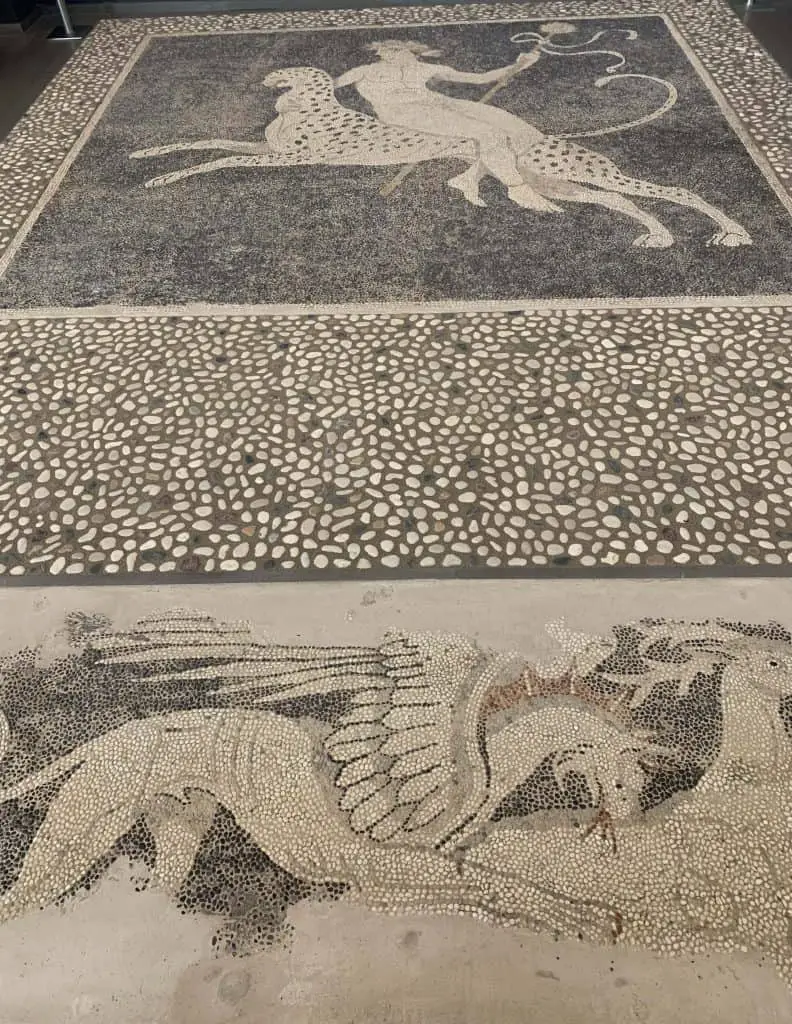
7. Walk With the Gods at Mount Olympus
As the tallest mountain in Greece, Mount Olympus rises from the Agean to a towering height of 2917m. The lower mountain is broken up into gorges which are packed with a huge range of flora and fauna The mountain, which is steeped in myth and supposedly home to Greek gods, is part of a larger area known as Mount Olympus National Park, the first of Greece’s national parks.
Whilst trekking to the top of Mount Olympus is possible, it takes at least 2 days and should not be underestimated. For an adventurous activity in Northern Greece, there are guiding operators available to lead inexperienced hikers up the mountain. For a less strenuous option, instead hike one of the scenic gorges where there are numerous waterfalls and caves to explore. For those interested in history there is also an archaeology site on Mount Olympus called Dion.
A good base for exploring Mount Olympus is the pretty town of Litochoro which has delightful tavernas and a selection of hotels . The visitor centre here provides good information about the geology, flora, fauna and monasteries on the mountain.
If you’d like to explore more of Greece by foot, check out this guide to hiking in Crete.
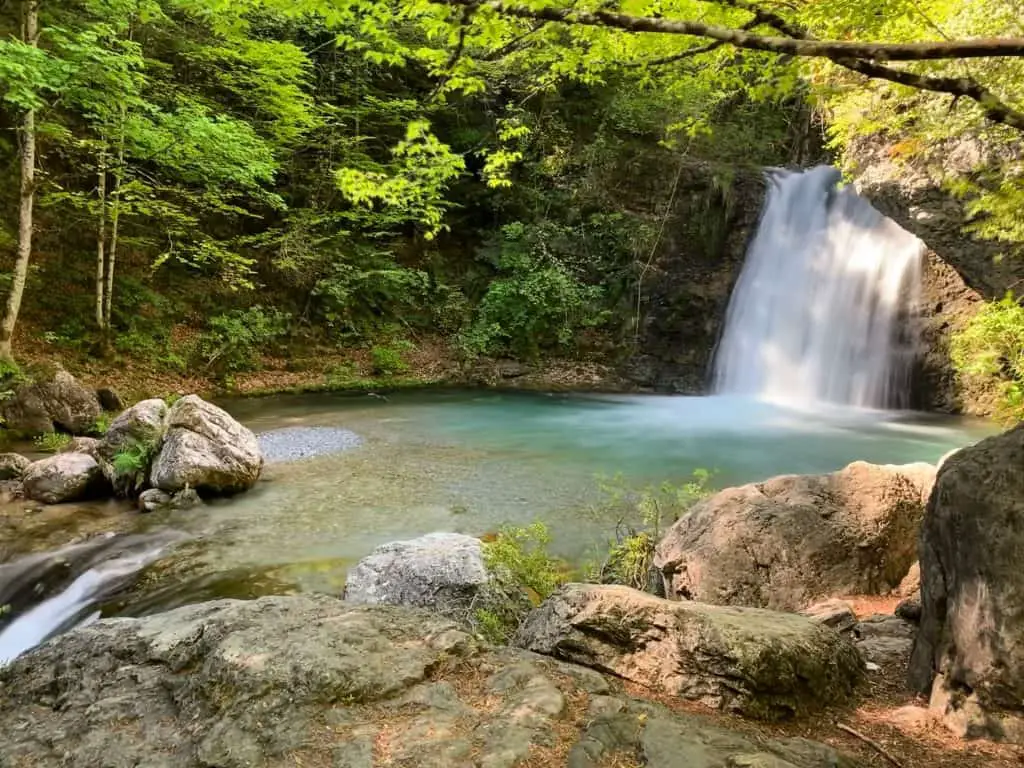
8. Relax at the Beach Town of Parga
Parga is located in the North-Western regions and is one of the best places to visit in Northern Greece if you’re on the hunt for those gorgeous sandy beaches. Not only is the area full of beautiful natural landscapes, but it also houses some of the most important monuments and landmarks of years gone by.
One of these vital pieces of architecture is the Venetian castle, which sits at the top of the mountain, overlooking the ocean. The castle is thought to have been built before the 15th century, but has had to be rebuilt four times since its first opening due to the attacks launched by various other empires. This doesn’t matter to the people of Parga though, as the castle was built to protect the city from the invasion of pirates and other civilisations in the first place. Today, it is one of Parga’s greatest tourist attractions and is open to the public most days of the year.
However, despite the historical importance of the castle, Parga’s main tourist attraction is the beaches. There are so many beautiful stretches of sand such as Sarakiniko beach, which is tucked away in a cove surrounded by luscious greenery. For the water-sports enthusiasts, Valtos beach offers lots of different activities such as surfing and water-skiing.
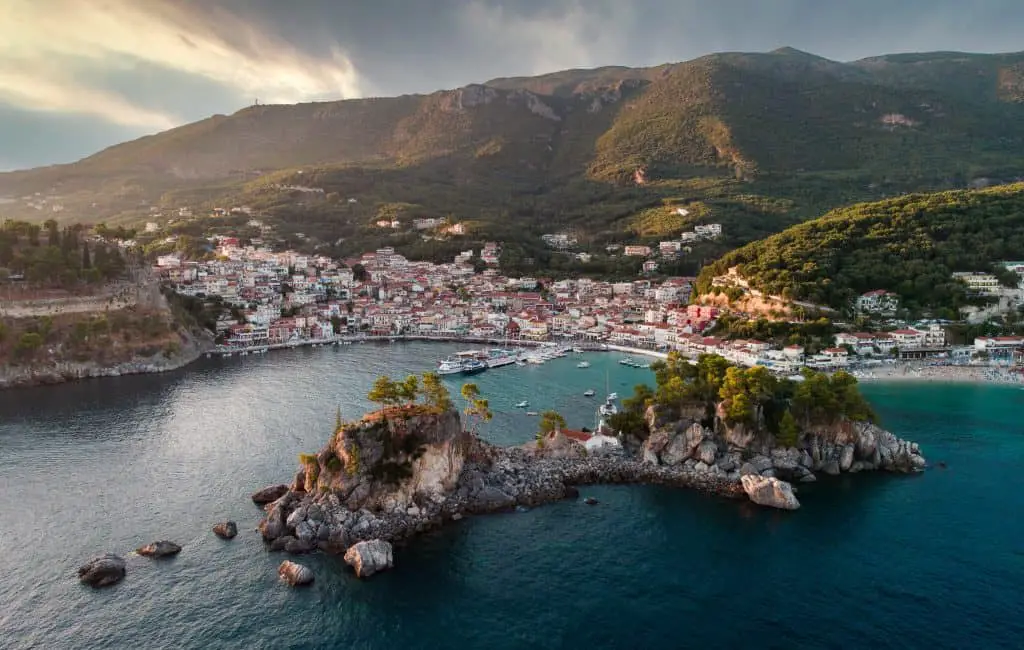
9. Explore the Architecture of Kavala
Greece is a country in which every town holds some kind of cultural gem. However, if you are looking for the full Greek experience, then Kavala is the city for you. Everything about this beautiful town is unique, whether that be the architecture, the cuisine or the natural landscapes.
The most prominent feature of the city is the fortress at the top of the hill, sat overlooking the houses in the city below. Similarly to the Venetian castle in Parga, this fortress gave the Venetians an excellent lookout point when it came to spotting oncoming attacks. Today, tourists and locals can hike to the top of the hill to enjoy the impressive view.
Another excellent piece of architecture in the city is its one of a kind water-pipe system. Whilst this may not sound like a particularly interesting feature, the city contains a large, Colosseum-like structure also known as the aqueduct, which houses the city’s main pipelines.
One of the best things to do in Northern Greece, and any European city for that matter, is to appreciate how history can be seen all around. Western cultures often tend to knock down historical buildings, replacing them with contemporary accommodation. Kavala is just one example of a Greek city which has managed to preserve its beautiful Ottoman cobbled streets and colourful housing.
Aside from the feats of engineering Kavala can offer, one of its most prominent events is the fish auction. The city is known for having a prominent fishing community, and both tourists and locals can enjoy the huge variety of freshly caught produce available for purchase.
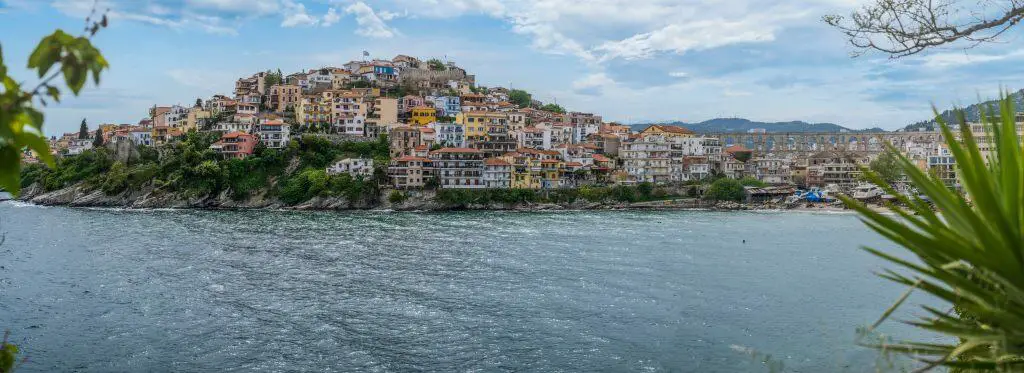
10. Take a Boat Trip at the Lakeside City, Kastoria
Kastoria isn’t as well-known as some of the other cities in Northern Greece, but it has such a wide variety of activities to do and places to visit. It’s surrounded by mountains, lakes and forests, all of which are excellent for hiking through. During the winter, many tourists like to take advantage of the mountainous terrain and practice their skiing skills, whilst those who prefer the summer months are able to take boat tours to explore the lakes surrounding the city on both sides.
Other than being full of historical buildings, excellent shopping opportunities and a few museums, the city has many hidden natural phenomena, like the Dragon’s Lair Cave. This gorgeous landmark contains no less than seven underground lakes and is nestled in the forestry surrounding the town.
One of the man-made landmarks in the area surrounding Kastoria is the ghost village of Gavros. The town was abandoned many years ago, which the locals suspected to be due to a snake and bear problem, and so visiting the empty village can be pretty eerie.
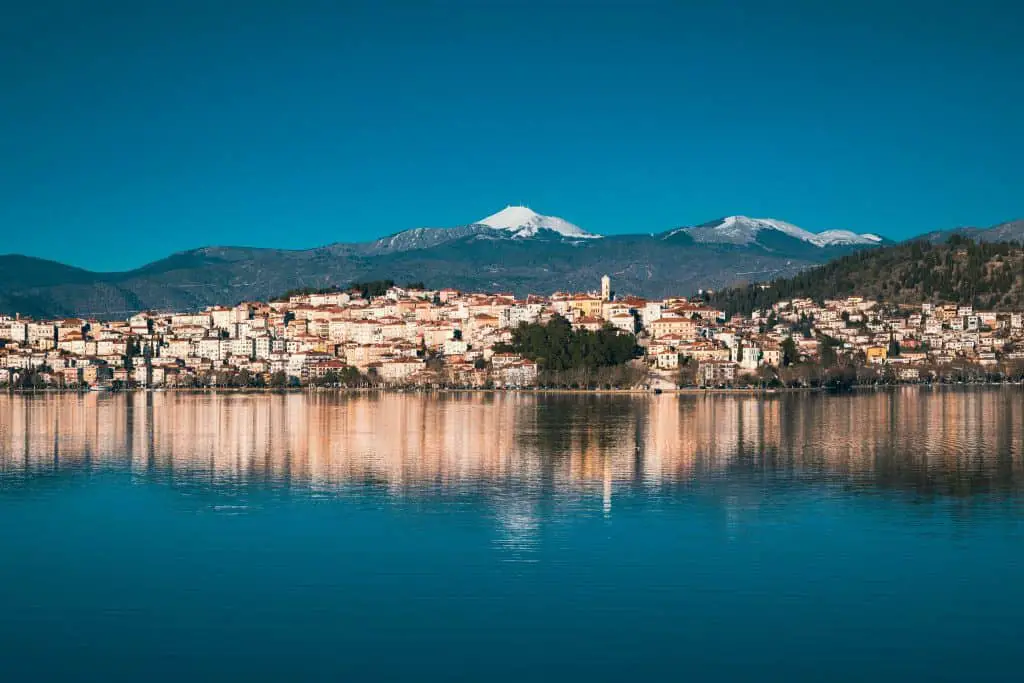
11. Wander Vibrant Ioannina
Sometimes when you visit a place it just has a certain buzz about it. Ioannina is one of those places that feels like it is full of life. The lakeside cafes are filled with locals catching up over a coffee whilst the lake itself is teeming with birdlife.
Set on the western shore of Lake Pamvotis, Ioannina is a fortified city which thrived under Ottoman rule. Explore the city inside the walls with a visit to the Its Kale Acropolis, where you can see the Fethiye Mosque and visit the Byzantine museum.
Beyond the walls take a boat trip on the lake to the island with no name, stroll around the lakeshore and enjoy a coffee at one of the lakeside cafes. Head to the eastern shore of the lake if you want to spot birdlife.
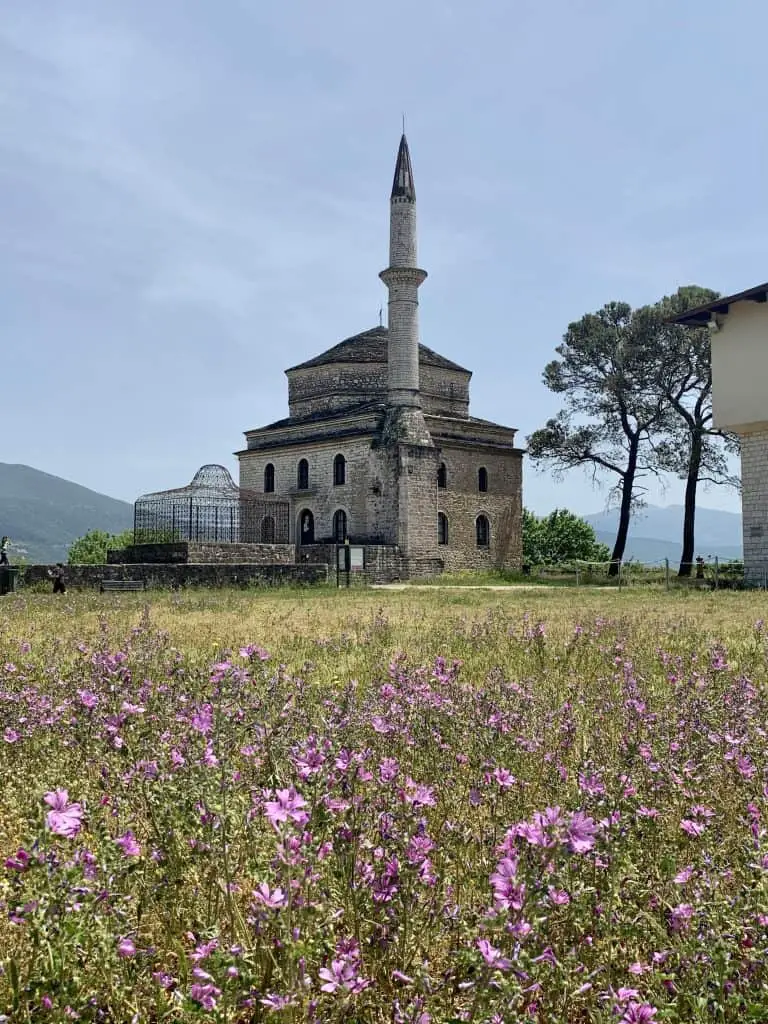
12. Explore Waterfalls and Ruins at Edessa
Edessa is a city in central Macedonia which was first known as the City of Water. The reason for this becomes quickly obvious once you discover the plethora of waterfalls at the city’s edge, in the appropriately named Waterfalls Park.
This water power has been utilised for centuries to power mills and turned Edessa into an industrial centre. Today much of the water is used to grow cherries and it’s said that the Edessa-Vodena cherries are the best in the world. Plan your visit for mid-May to catch the Gastronomic Fair of Eddesa where you can sample these cherries, along with honey, olives and wine.
Outside of the city, a short drive brings you to the ruins of ancient Edessa. At these ruins you can see a colonnaded street with intricate carvings on the pillars and some ancient graffiti carved by a foot soldier who guarded the city gate. Whilst these ruins aren’t as impressive as nearby Pella and Vergina they are a great site for history buffs, especially if you chat to the knowledgable guide who looks after the site.
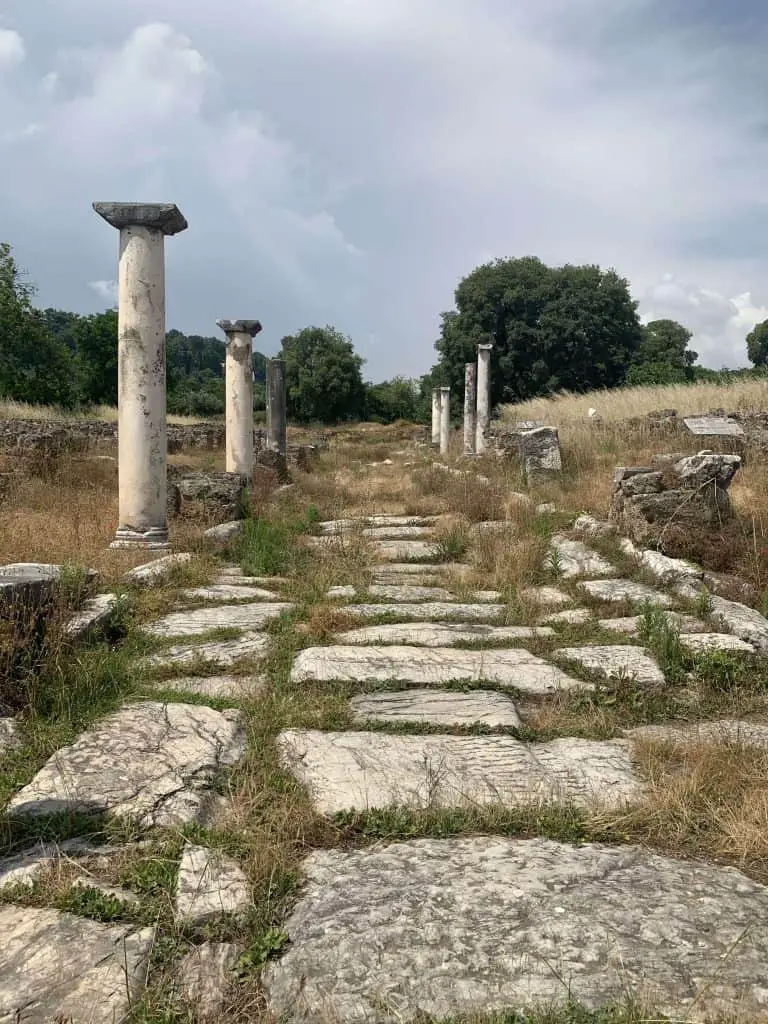
13. Get Lost in History at Vergina
Vergina is one of the smaller towns on the list, and is usually best for a one-stop day trip as there are few other tourist attractions in the surrounding area. However, the size of the village in no way reflects the importance of its historical landmark. In Vergina, you’ll be able to find the tombs of Phillip II, King of Greece, alongside other historical figures such as Alexander the Great’s son.
You’ll be able to see all areas and rooms inside the elaborate tomb, including the one containing Phillip’s coffin. More commonly known as “the gold larnax”, the casket holding the bones of the former king weighs just over 11kg and is made of pure gold. Alongside the tombs, you’ll be able to visit the ruins of the Palace of Agai. This was once the Greek Royal Palace and was home to King Phillip II and his family.
14. Revel in Nature at The Prespa Lakes
Prespes is one of the most prominent regions in Northern Greece, and houses two of the largest lakes in the country. The larger of the two, Lake Megali Prespa, spans over 290 square metres and sits in three separate countries: Greece, Albania and North Macedonia. Mikri Prespa, the smaller lake, crosses the border into Albania but can’t quite boast the same size as the larger lake.
Both lakes contain a huge volume of different species including various types of fish, birds and many plants and flowers as well. Alongside this, the lakeside towns are all surrounded by mountains and forests which are perfect for hiking through. The village of Laimos provides an excellent experience for visitors as it contains one of the best hotels in the region, overlooking the gorgeous lakes.
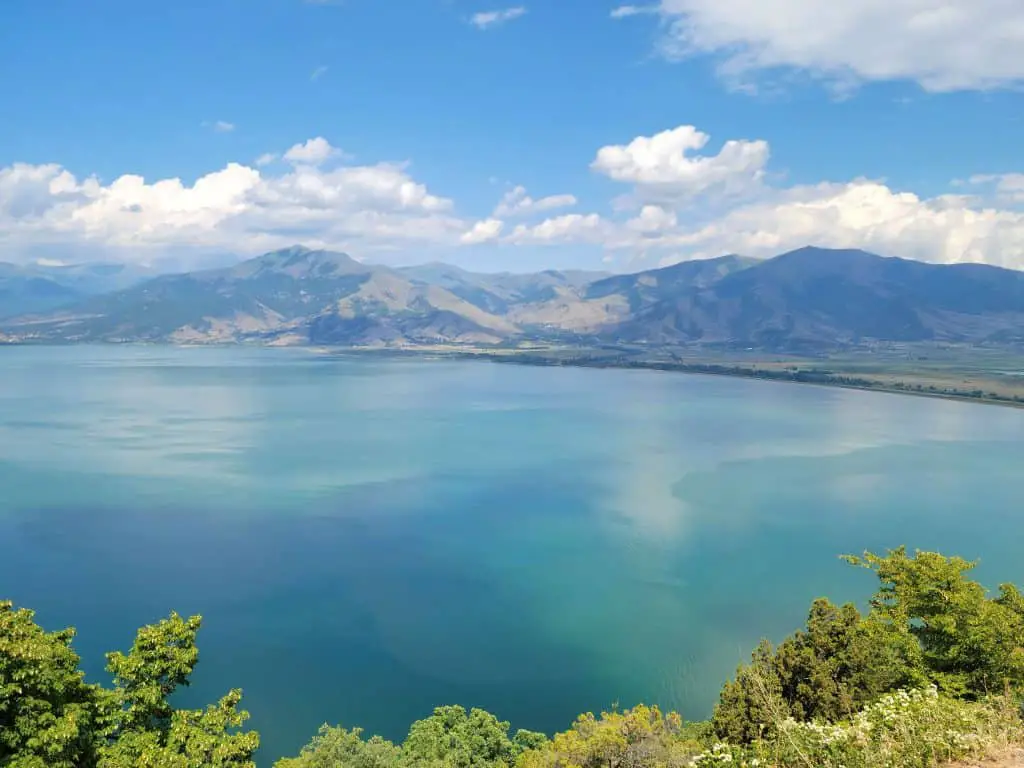
15. Visit the Town for Gastronomy, Metsovo
Metsovo is another historic city which is rich with culture, as can be seen through its many museums, galleries and other creative societies. This town in Northern Greece is best visited during the winter as it spends a few weeks of the year blanketed in snow, meaning you can take full advantage of the ski season in the mountains.
However, Metsovo’s greatest feature is the residents’ love for food. The town is one of the only places in Greece to cultivate grapes, using vines imported from France, which are turned into local wines. The winery offers a guided tour explaining the wine-making process and a tasting experience at the end. The wine shop is also open to the public on weekdays.
Not only does the city produce fine wine, but it is also well-known for its selection of local cheeses. The Metsovella hard cheese, named after the region, is produced in the town itself by the locals and the galotyri soft cheese can also be bought from local producers.
The tavern in Metsovo has created a menu using almost entirely local ingredients with everything from local meats and cheeses to salads made with freshly picked mushrooms and wild greens from the surrounding forests. If you’re feeling particularly adventurous, you could even take a pie making class with the family who own and run the tavern.
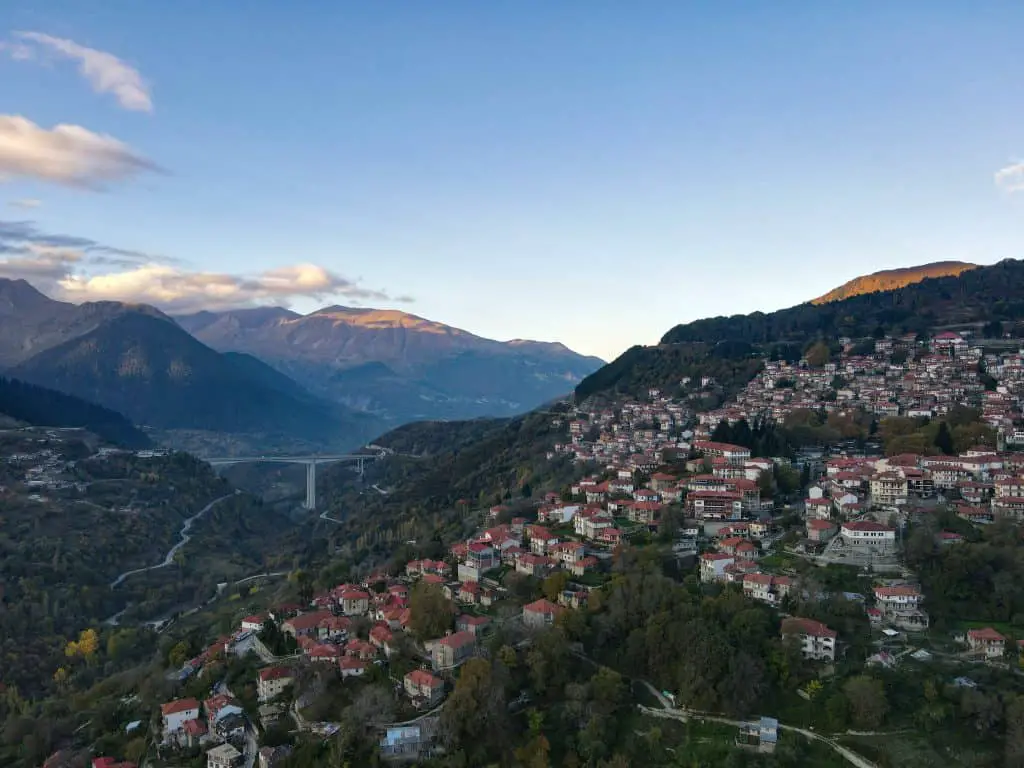
16. Appreciate Birdlife at Lake Kerkini
Lake Kerkini is an area of natural beauty and a hotspot for any keen birdwatchers visiting Greece. With a plethora of different species living around the lake, you could spend hours looking out for some of the rarest animals. But Kerkini has more to offer than just birds.
Mount Agkistro, situated next to the lake, produces its very own natural hot springs, which are used by residents and tourists alike to warm up on a cold day. Sometimes, they can reach up to 37 degrees Celsius!
The locals living in the area often run two-day trips up and down some of the surrounding mountains, such as Mount Belles, either by bike or on horseback. It usually takes a day to reach the summit, where you’ll sleep under the stars with a view of Lake Kerkini, before descending the following day.
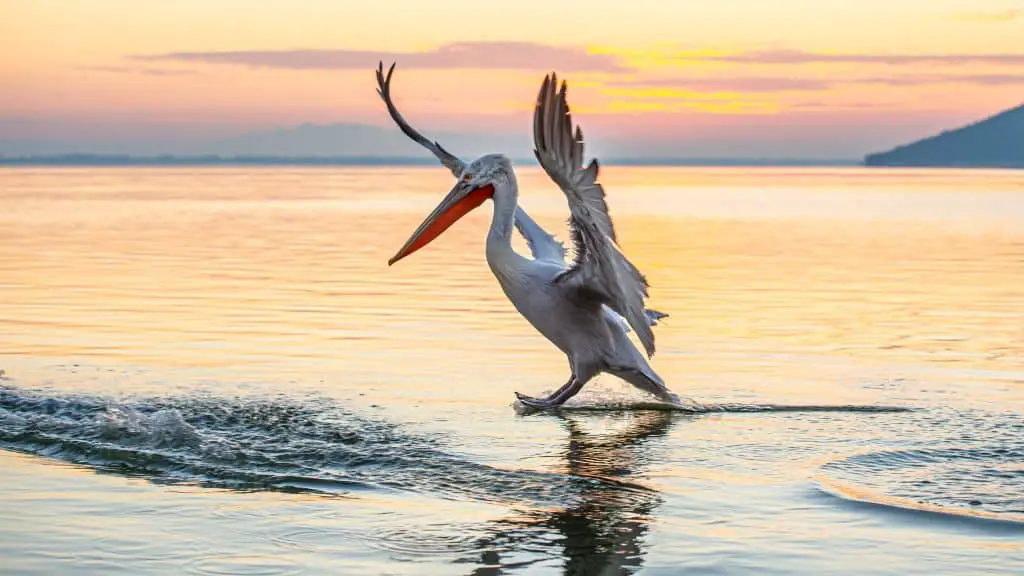
17. Visit The Party City of Xanthi
Xanthi is place to be if you’re a social butterfly. Due to its high student population, the city is known for its excellent nightlife, containing no end of pubs, bars and clubs for you to choose from. However, the parties aren’t reserved for the night. The old town festival occurs every September as local artists, performers and other creative minds come together to put on a display of music, theatre and art for the whole town to enjoy.
Alongside its attractions for the young, Xanthi also contains some rich historical culture. There are over 1200 listed buildings throughout the city which have been officially labelled as “landmarks” due to their importance to the study of Ottoman architecture. Xanthi’s weekly bazaar brings together a collection of sellers from across the region with their handmade goods. You’ll find everything from clothes and accessories to unusual local delicacies at the largest open-air market in Greece.
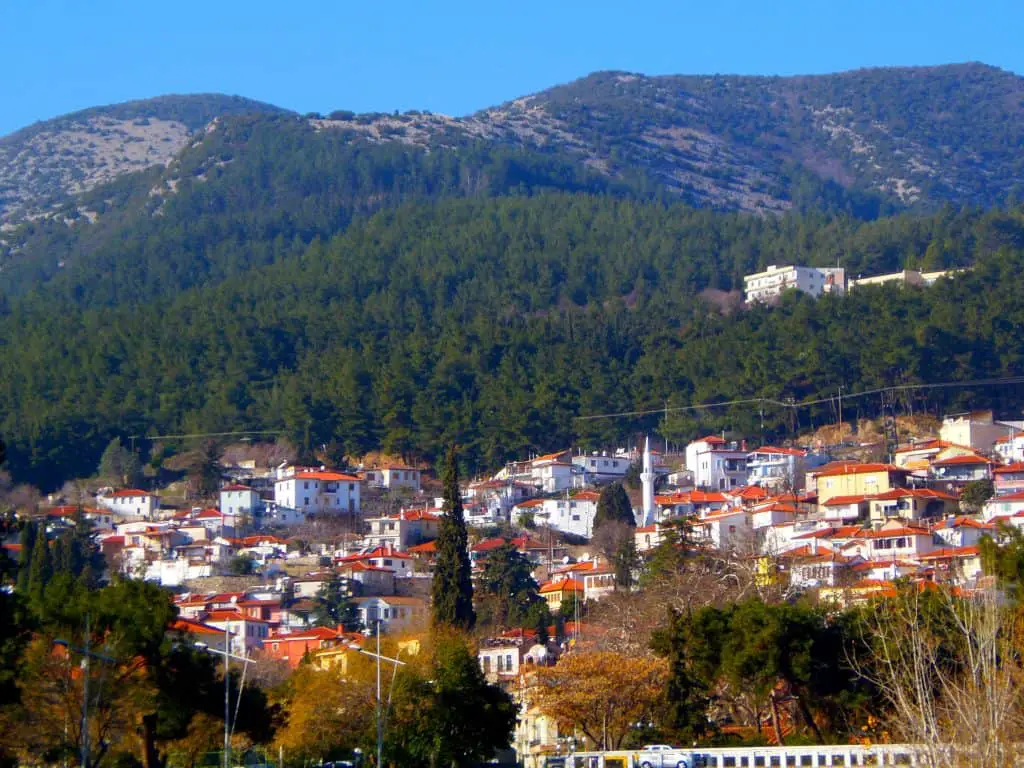
Don’t Forget Your Travel Insurance!
For the best deals on travel insurance, check out Safety Wing.
Top Destinations In Northern Greece Summary
Northern Greece is packed with top-rated activities to enjoy and beautiful locations to explore. For nature lovers there is a vast array of beautiful landscapes to enjoy such as Pindos National Park and Mount Olympus. For history buffs there are important historical sites such as Pella and Vergina, whilst foodies can enjoy cuisines in Metsovo and Zagori.
Shoppers will enjoy the goods on offer in Thessaloniki whilst those looking for a beach escape should head to Halkidiki or Parga. Whatever your interest, there is something to offer everyone on a visit to Northern Greece.
Louise is a Mountain Leader and Snowboard Instructor from South Wales. As a former Adventure Tour Leader she has spent the last 15 years travelling Asia, Africa and the Americas. Louise is a published photographer and is currently based in the UK.
Recent Posts
The Best eFoiling Destinations For Beginners
Imagine gliding effortlessly over the water, powered by the wind and waves, but with a futuristic twist. Welcome to the world of eFoiling - a dynamic blend of traditional water sports and...
A Guide To Visiting Rhossili Bay
Rhossili Bay and Worm's Head are two of the most popular and beautiful natural attractions in South Wales. These stunning destinations offer breathtaking views of the Welsh coastline and are a...

- 5-Days Tour of Northern Greece
No ratings yet.
This 5-day mainland tour offers a unique opportunity to explore the northern Greece and its major historical sites and cities, passing by the archaeological site of Delphi, explore the overwhelming monasteries of Meteora, visit the city of Dion at the foot of Mount Olympus, admire the vibrant city of Thessaloniki, stop at Pella – the capital of Alexander the Great’s Macedonian kingdom, and see the tomb of the King Phillip and the famous “Vergina Treasures”.
Day 1: Begin your guided tour being picked up in an air-conditioned coach near your hotel in the morning and passing through Levadia and the picturesque village of Arachova to reach the Unesco-listed archaeological site of Delphi, where the famous Oracle, Pythia, was seated giving her predictions for the future and it was believed that she channeled prophecies from Apollo himself. Delphi was considered to be the centre of the world (“Navel of the Earth”) because, according to mythology, it is here that the two eagles sent out by Zeus from the ends of the universe met to find the navel of the world. Walk around the ancient ruins and visit some of the most famous monuments such as the treasury of the Athenians and the Temple of Apollo. Also, visit the Delphi Museum with its outstanding exhibits such as the Naxian Sphinx and the famous bronze Charioteer. Have the rest of the day at your leisure, stay overnight in Delphi and enjoy your dinner at your restaurant.
Day 2: Next morning, after breakfast, we will cross central Greece and the towns of Amphissa, Lamia and Trikala to reach Kalambaka, built on the foot of Meteora rocks. Here you will explore the world famous Meteora with its Byzantine Monasteries constructed on immense natural rock pillars and rounded boulders that dominate the area. Visit two Byzantine monasteries and get ready to be overwhelmed by the breathtaking view from the top of the rock towers. Dinner and overnight stay in Kalambaka will follow.
Day 3: Next morning, after breakfast, the coach will drive by Larissa towards the famous sacred Macedonian town of Dion which owes its name to the most important Macedonian sanctuary dedicated to Zeus, the leader of the Gods, who dwelt on Mount Olympus and lies at the foot of Mount Olympus. Visit the network of ancient ruined streets, public buildings, shops, workshops, statues, houses, an orchestra and a large theatre. Then, we will continue to Thessaloniki, the largest town in Northern Greece and possibly the most vibrant in Greece. We will take you for a visit to the archaeological museum of Thessaloniki along with a sightseeing tour of the city. You will overnight in Thessaloniki, where you can enjoy a walk at Nea Paralia of Thessaloniki at your leisure and savor a tasteful dinner at your hotel.
Day 4: After breakfast, your next destination is Pella, which at the end of 5th century B.C was the capital of Alexander the Great’s Macedonian kingdom. You’ll then continue to Vergina to visit the tomb of the King Phillip (father of Alexander the Great) and the famous “Vergina Treasures”. The trip continues to Lefkadia where you’ll visit the excavations and afterwards, return to Thessaloniki via the town of Veria. Dinner and overnight stay will be offered in Thessaloniki.
Day 5: After breakfast, we will start the return drive to Athens through the Tempi Valley, passing by Larisa, Lamia, and making a short stop at Thermopylae where you will witness the heroic monument of the world renowned King of Sparta, Leonidas. The return in Athens is scheduled at approximately 19:00.
This tour is organized (group) with minimum number of participants 10 and is offered in English language.
All hotels included in the above package are A’ Class (4*) hotels. Hotel accommodation tax is payable directly at the hotels at 3 Euro per room/per night.
Children (4-12 years old) and infants are welcome to participate with parental guidance.
- Be Equipped for a Day in the Sun (wear sunscreen/ hat/ sunglasses)
- Visit to monastery is included (appropriate cover up is required)
- Wear flat, comfortable shoes
- Meal included: inform us of special dietary requirements or food allergies
- Inform us of special medical conditions or respiratory problems
Begin your guided tour with you being picked up in an air-conditioned coach from your hotel in the morning and passing through Levadia and the picturesque village of Arachova to reach the Unesco-listed archaeological site of Delphi, where the famous Oracle, Pythia, was seated giving her predictions for the future and it was believed that she channeled prophecies from Apollo himself. Delphi was considered to be the centre of the world (“Navel of the Earth”) because, according to mythology, it is here that the two eagles sent out by Zeus from the ends of the universe met to find the navel of the world. Walk around the ancient ruins and visit some of the most famous monuments such as the treasury of the Athenians and the Temple of Apollo. Also, visit the Delphi Museum with its outstanding exhibits such as the Naxian Sphinx and the famous bronze Charioteer. Have the rest of the day at your leisure, stay overnight in Delphi and enjoy your dinner at your restaurant.
- Delphi, Delphi, Greece
Next morning, after breakfast, we will cross central Greece and the towns of Amphissa, Lamia and Trikala to reach Kalambaka, built on the foot of Meteora rocks. Here you will explore the world famous Meteora with its Byzantine Monasteries constructed on immense natural rock pillars and rounded boulders that dominate the area. Visit two Byzantine monasteries and get ready to be overwhelmed by the breathtaking view from the top of the rock towers. Dinner and overnight stay in Kalambaka will follow.
- Meteora, Kalabaka, Greece
Next morning, after breakfast, the coach will drive by Larissa towards the famous sacred Macedonian town of Dion which owes its name to the most important Macedonian sanctuary dedicated to Zeus, the leader of the Gods, who dwelt on Mount Olympus and lies at the foot of Mount Olympus. Visit the network of ancient ruined streets, public buildings, shops, workshops, statues, houses, an orchestra and a large theatre.
- Dion, Greece
Then, we will continue to Thessaloniki, the largest town in Northern Greece and possibly the most vibrant in Greece. We will take you for a visit to the archaeological museum of Thessaloniki along with a sightseeing tour of the city. You will overnight in Thessaloniki, where you can enjoy a walk at Nea Paralia of Thessaloniki at your leisure and savor a tasteful dinner at your hotel.
- Thessaloniki, Greece
After breakfast, your next destination is Pella, which at the end of 5th century B.C was the capital of Alexander the Great’s Macedonian kingdom. You’ll then continue to Vergina to visit the tomb of the King Phillip (father of Alexander the Great) and the famous “Vergina Treasures”. The trip continues to Lefkadia where you’ll visit the excavations and afterward, return to Thessaloniki via the town of Veria. Dinner and overnight stay will be offered in Thessaloniki.
- Vergina, Greece
After breakfast, we will start the return drive to Athens through the Tempi Valley, passing by Larisa, Lamia, and making a short stop at Thermopylae where you will witness the heroic monument of the world renowned King of Sparta, Leonidas. The return in Athens is scheduled at approximately 19:00.
- Thermopylae, Greece
Please rate our unique experience!
Value for Money
Destination
Rating Entries
Contact our adventure experts.
- Call Us: +30 6984 160940
- [email protected]
- 08:00am ~ 08:00pm (Mon to Sat)

Couple Spa Hammam Experience
- 2 hours 30 min

Imperial Hammam Turkish Bath

Horseback Riding Fun For Children
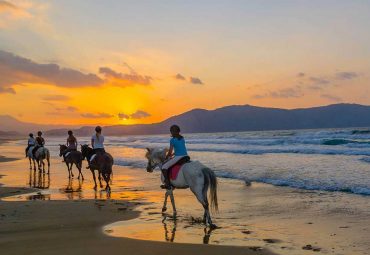
Mountain Horseback Riding
- 1 hour 30 min
- Home >
- Tours >
- Central Greece
- Macedonia & Thrace
- Peloponnese
- Western Greece
- Ionian Islands
- NE Aegean Isles
- Saronic Gulf Islands
- Books About Greece
- Cretan Music
- Cretan Writers and Artists
- Greece Book Reviews
- Greek Architecture
- Greek Drama
- Greek Literature
- Greek Music
- Homer and the Odyssey
- Best Greek Beaches
- Greece's World Heritage Sites
- Ten Best Places to Visit in Greece
- Ten Biggest Cities in Greece
- Top Archaeological Sites in the Peloponnese
- Top Ten Biggest Greek Islands
- Top Ten Things to Do in Greece
- FOOD & DRINK
- Birdwatching
- Nomads of Greece
- Photos of Greece
Driving in Greece
- Greek Ferry Guide
- Island Hopping
- Sailing in Greece
Travelling Around Greece
- Greece for Beginners
- Greece at a Glance
- Quick Guide to Greece
- Tipping in Greece
- Weddings in Greece
- Which Greek Island?
- SPEAK GREEK
- Our Greece Blog
PRIVACY POLICY
- Macedonia & Thrace
- Scenic Drives in Northern Greece
Scenic Drives in Northern Greece
Scenic drives in northern greece: ioannina, meteora, kastoria, prespa lakes.
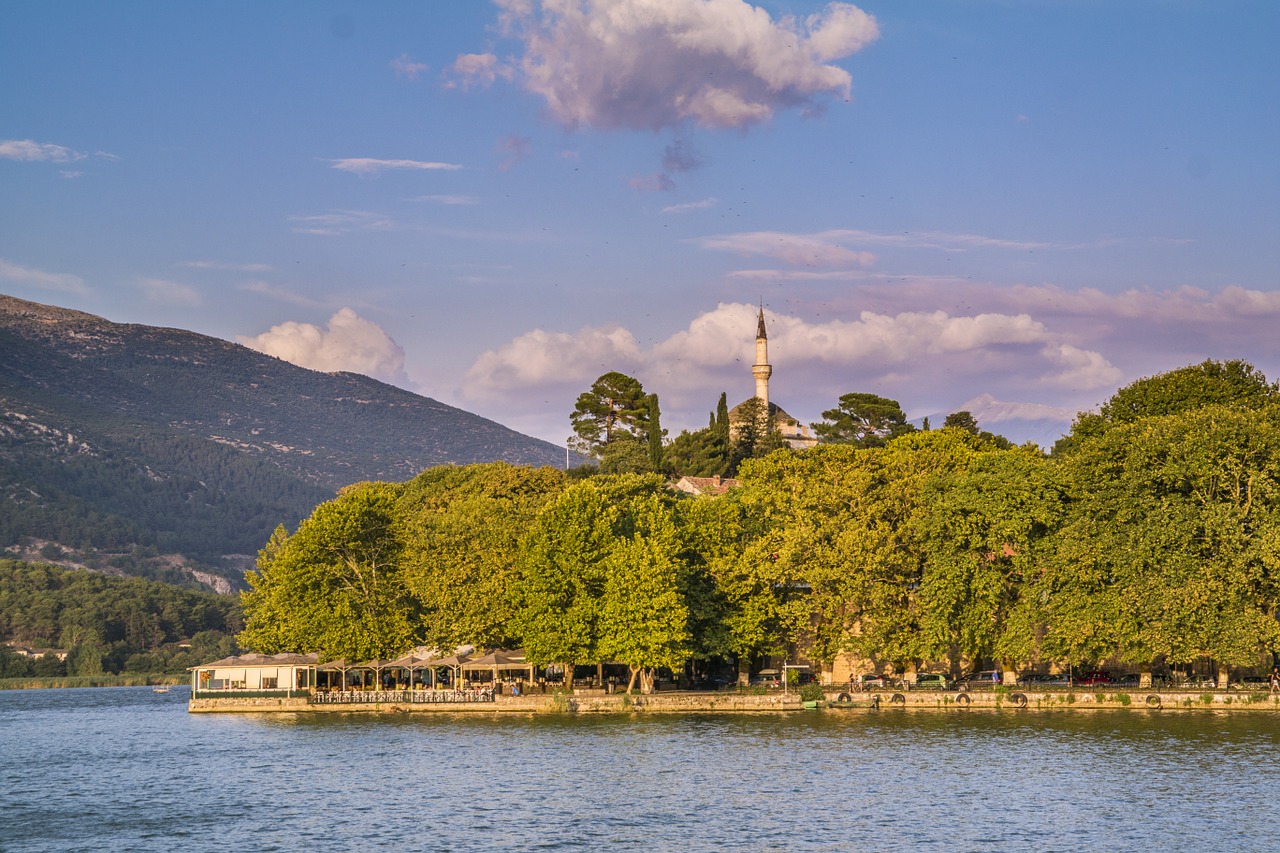
Greece has great beaches but its scenic drives are beautiful too. Travelers may know the Greek islands best, and think of Greece as perfect for a beach vacation, but you can take great drives through its spectacular mainland scenery.
Here are two of the best scenic drives in northern Greece. The first winds from the lakeside town of Ioannina , capital of Epirus, through spectacular mountain scenery to arrive at the fabulous monasteries of Meteora. The second drive also takes visitors from a lakeside town, Kastoria, to the beautiful remote Prespa Lakes, on Greece's northern borders.
Scenic Drives in Northern Greece 1
From ioannina to meteora.
The region of Epirus in north-west Greece is one of the most stunningly beautiful in the whole country… indeed, in the whole of Europe. There are pretty lakeside towns like Ioannina and Kastoria and the awe-inspiring Pindus Mountains . A drive east from Ioannina takes you through the mountains, over a high pass that can be closed in winter, and down into the region of Thessaly, and one of the most distinctive and magical sights in the world: the monasteries of Meteora .
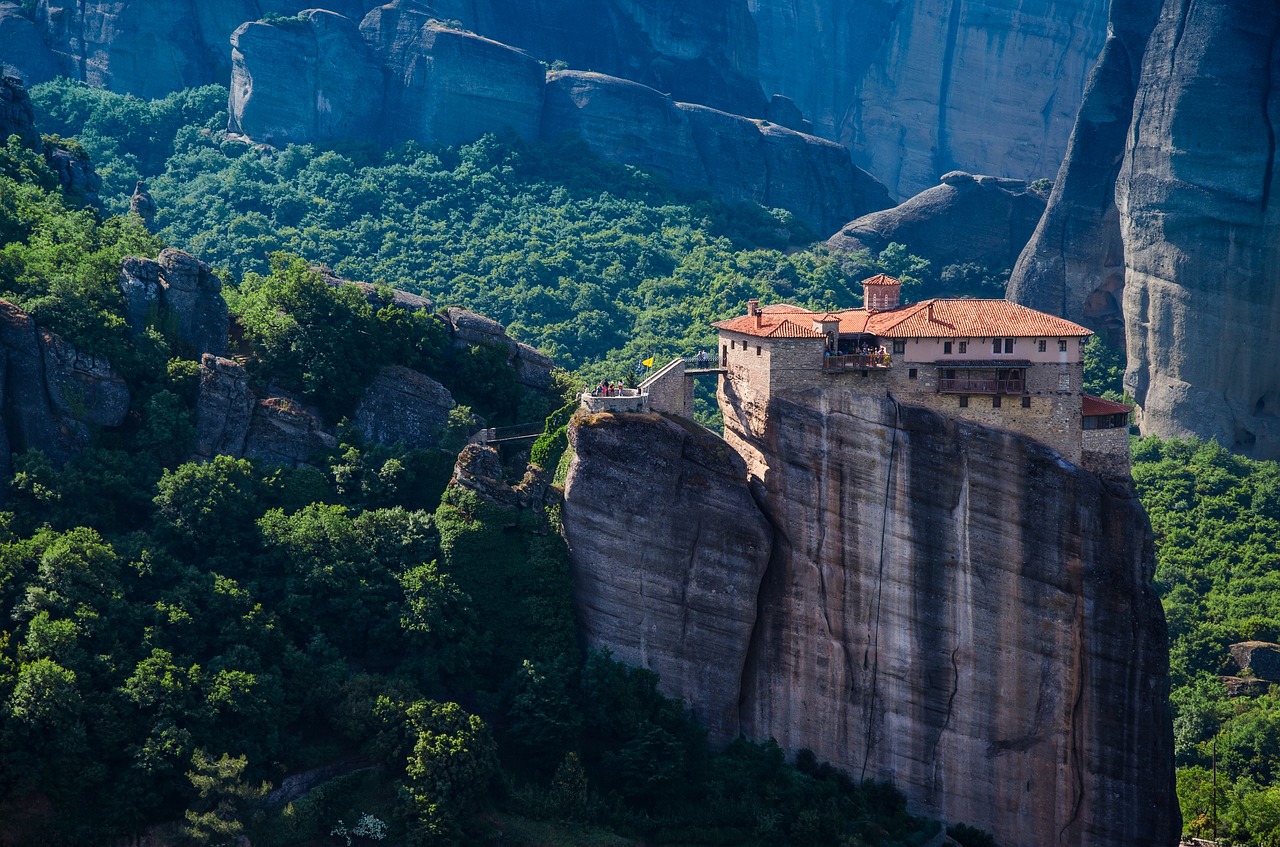
The capital of Epirus, Ioannina, has a character all its own. It sits on the shores of a lake in the middle of which is a small island called Nissi, which means ‘the island’. You could easily spend several days in and around Ioannina, and you should drive out on the road towards the Perama Caves – well worth stopping off to explore the cave network. The road then rises around the lake to give lovely views back of Ioannina, before winding upwards into the mountains.
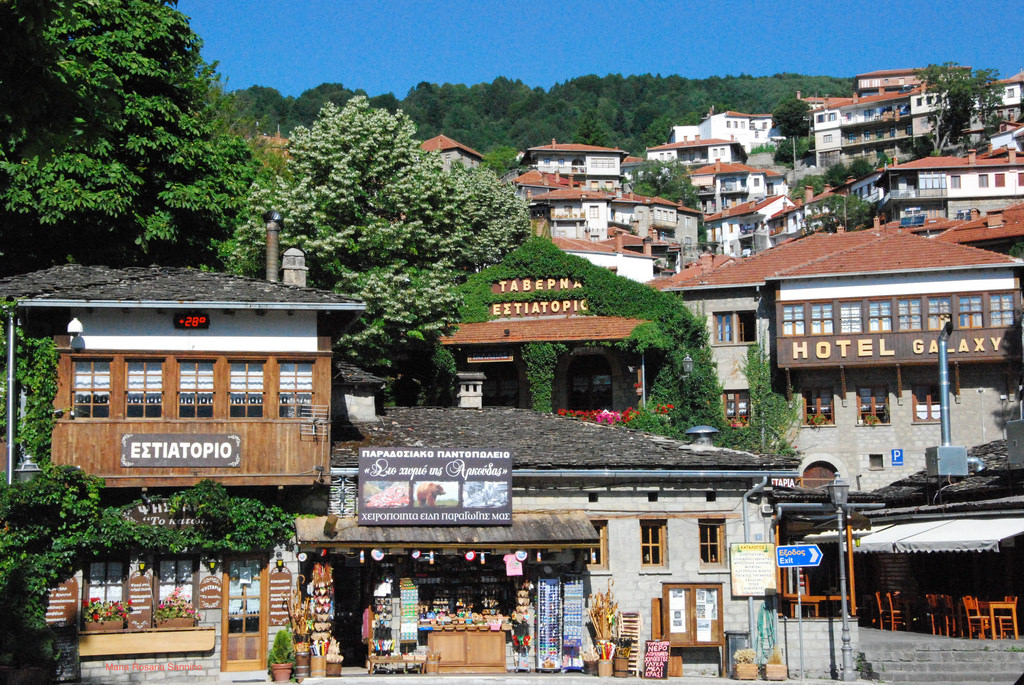
Another essential stop is the mountain town of Metsovo , a ski resort in winter and another very distinctive Greek community. Beyond here is the Metsovon Pass , one of the highest in Greece at 1705m (5594ft), but don’t set out on this drive in winter without checking the state of the roads. Even if the pass is open, the sharp bends and sheer drops can be dangerous for the driver unused to them.
At other times the rewards are enormous, not just here in the high mountains, but the descent into the lusher plains of Thessaly and, at the very end, the amazing sight of the monasteries of Meteora sitting on top of the rock formations jutting out of the plain. This has to be one of the best drives in Greece.
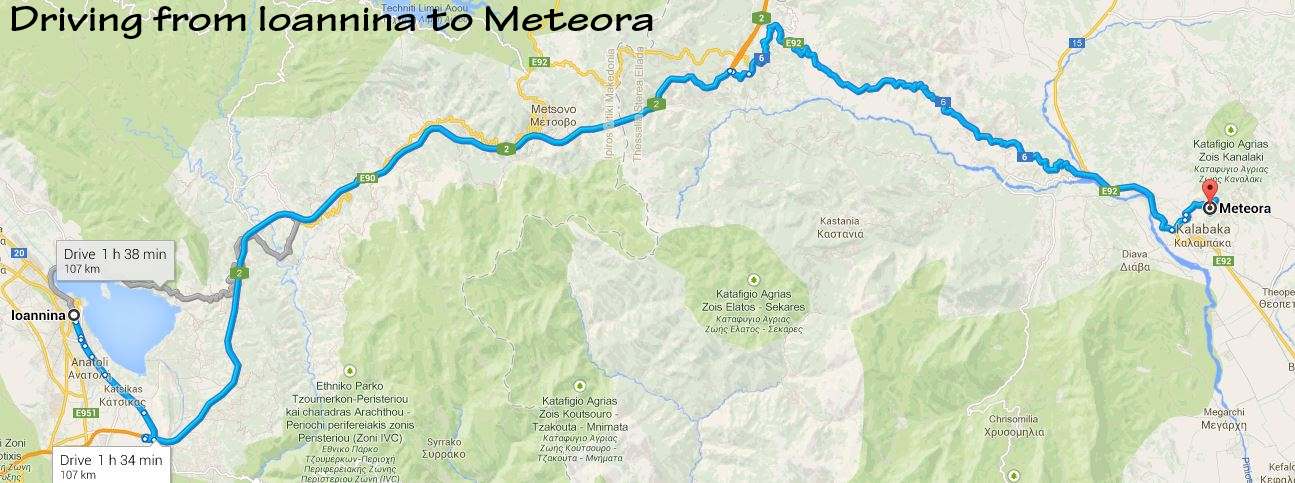
To see this map with driving directions click here
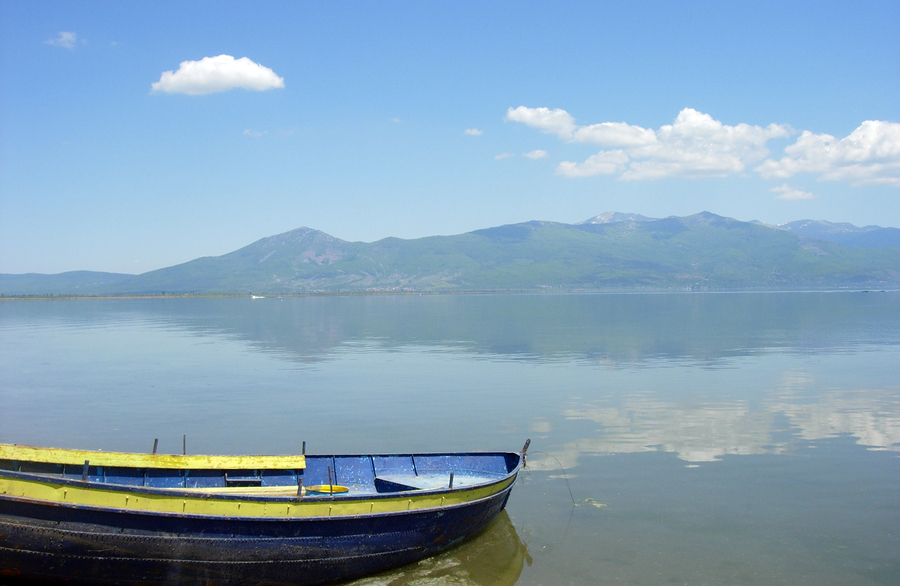
Scenic Drive in Northern Greece 2
From kastoria to the prespa lakes.
This is only a short drive, but definitely one that will live long in the memory. Like Ioannina, Kastoria is a pretty lakeside town of the kind not normally associated with Greece. There are handsome mansions, one of them now a folk museum, and a wealthy history because of its fur-trading past. Head north out of the town and you climb through woods and head towards Greece’s northern frontier.
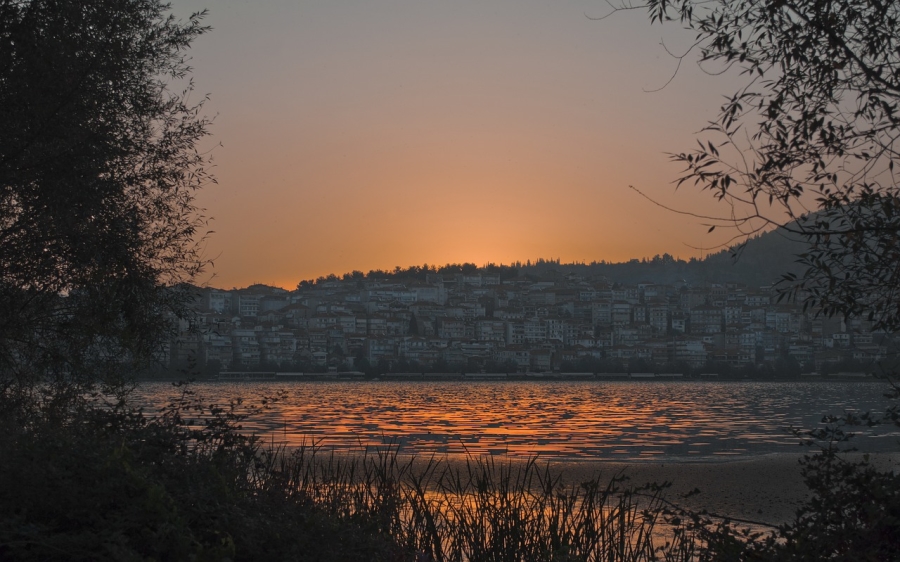
It’s only just over an hour or so until you start to descend, and round a corner you will get your first glimpse of the Prespa Lakes . The whole area here is a National Park, and there’s wildlife in abundance. There are small fishing communities on the shores of the lakes, and it is one of the most peaceful areas of Greece.
A visitor centre in the main village of Ayios Germanos gives information about walks and wildlife, and you may be able to take a boat trip out onto the lakes with one of the local fishermen, if you ask around. In the middle of the Great Prespa Lake is the border point where Greece meets Albania and the Republic of Macedonia. You can’t get much more off the beaten track than this.
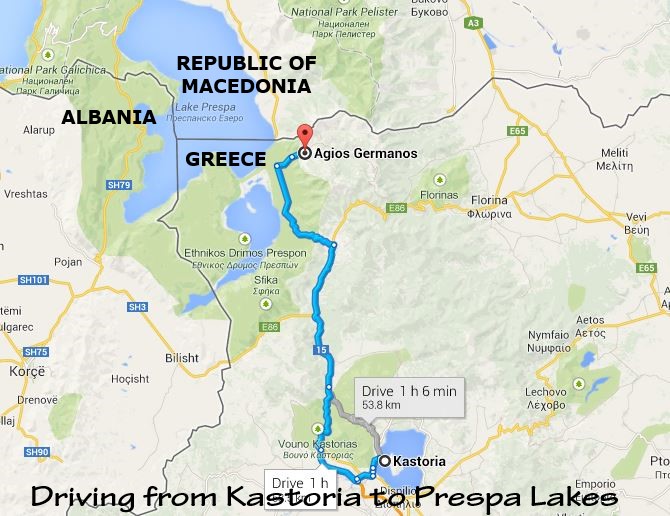
Our Pick of the Guides to Greece
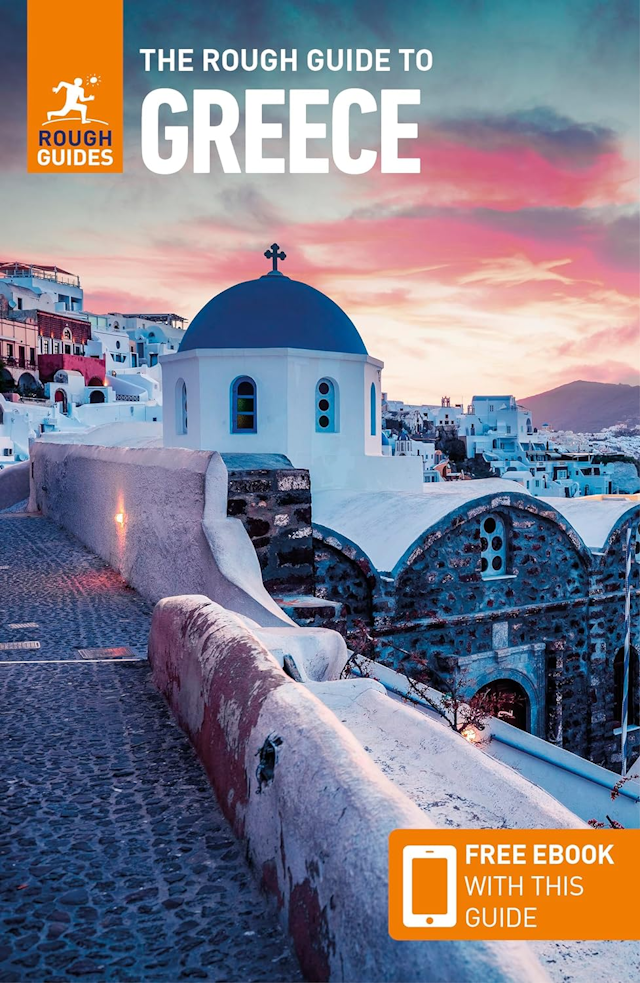
Other Greece driving pages
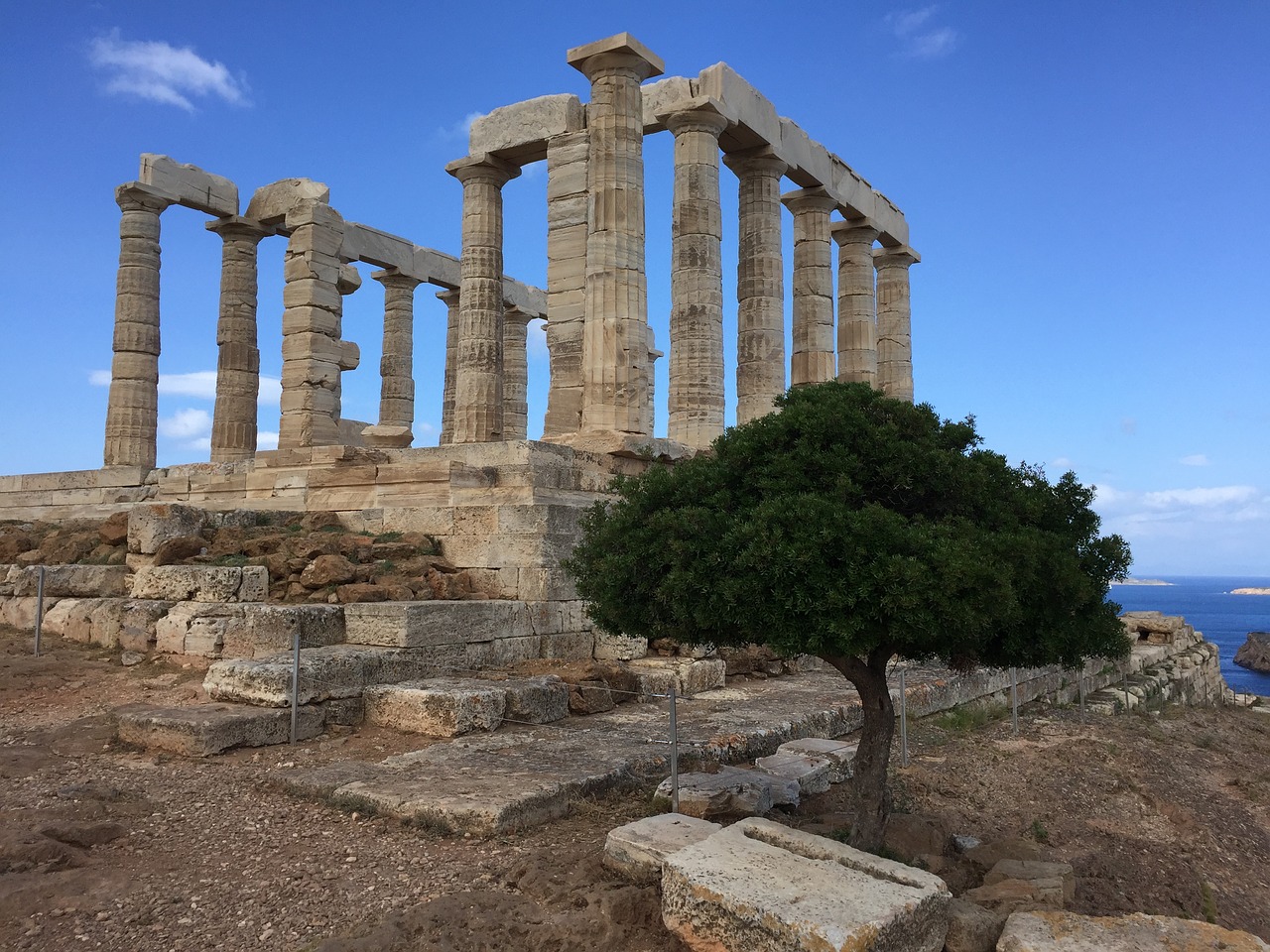
A Drive around Attica
This drive around Attica offers visitors high hills, beach resorts, small villages and classical sites like Marathon and the Temple of Poseidon at Cape Sounion.
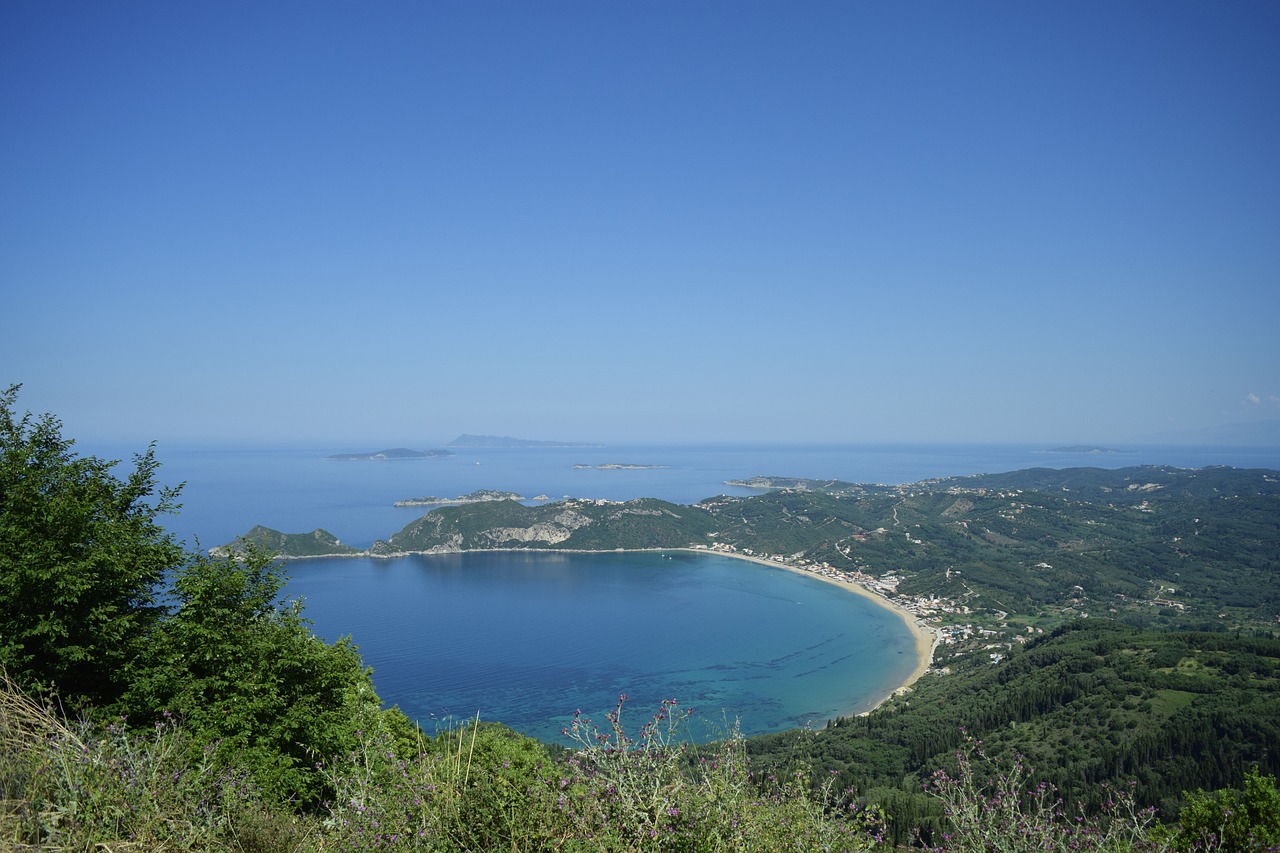
Northern Corfu Drive
There are two sides to every Greek island, the tourist and the traditional, and this drive from Corfu Town through northern Corfu shows the two faces of Corfu.
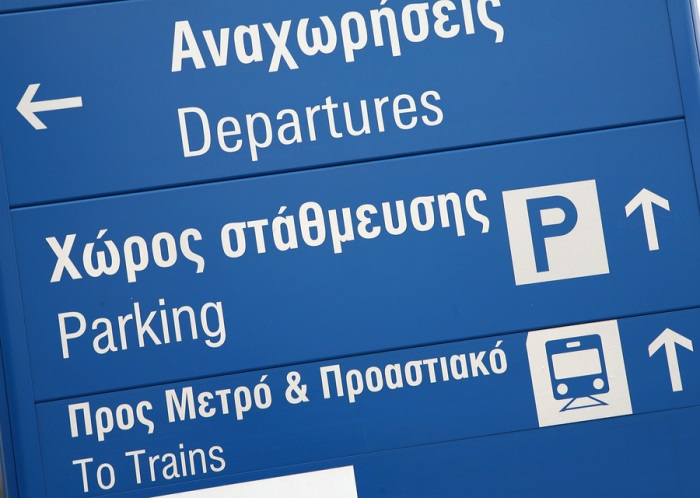
Practical information on travelling around Greece by plane, by ferry, by bus, by train and by driving, including car rental, parking and other driving advice.
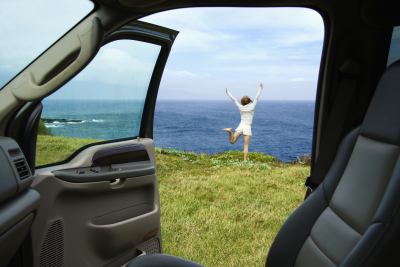
An account of driving in Greece for Greece Travel Secrets including links to the best drives in Greece, practical information and a note of some of the hazards.
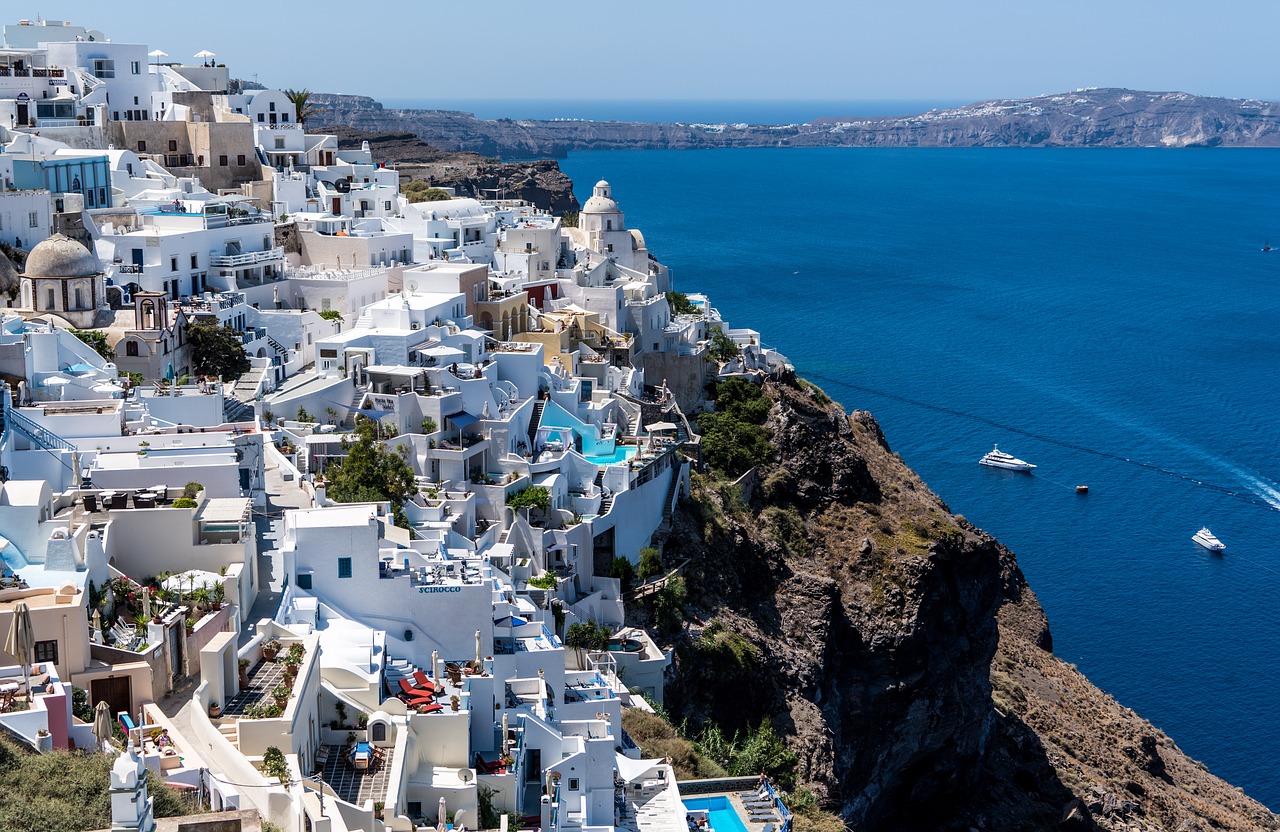
Santorini Car Rental
Santorini car rental companies include Budget, Hermes, VIP Rent a Car and Euro Dollar, with Santorini car hire at the airport, and around Santorini.
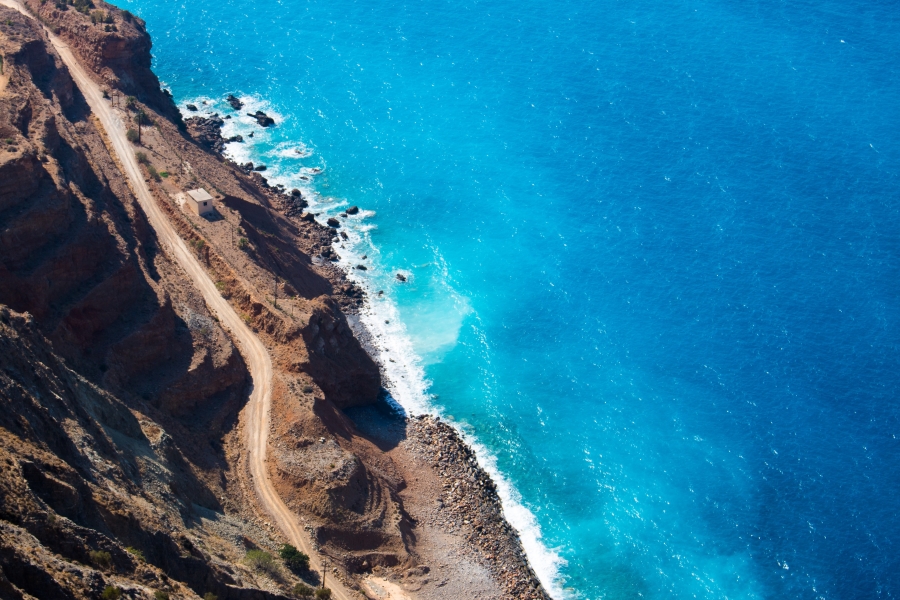
Driving in Greece Practical Information
Driving in Greece practical information including speed limits, fines, drink-driving, buying petrol and other advice for driving in Greece.
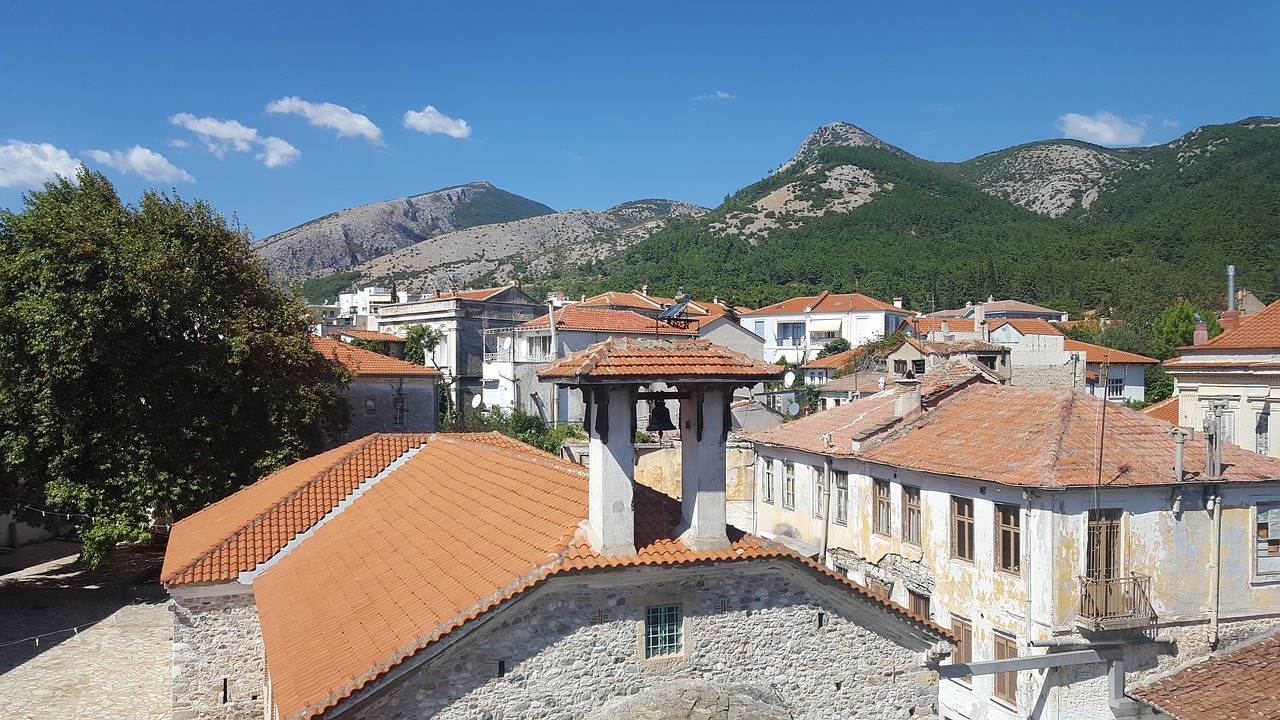
Best Drives in Greece
The best drives in Greece chosen and driven by Mike Gerrard of Greece Travel Secrets including from Ioannina to Meteora, the Prespa Lakes and the Mani.
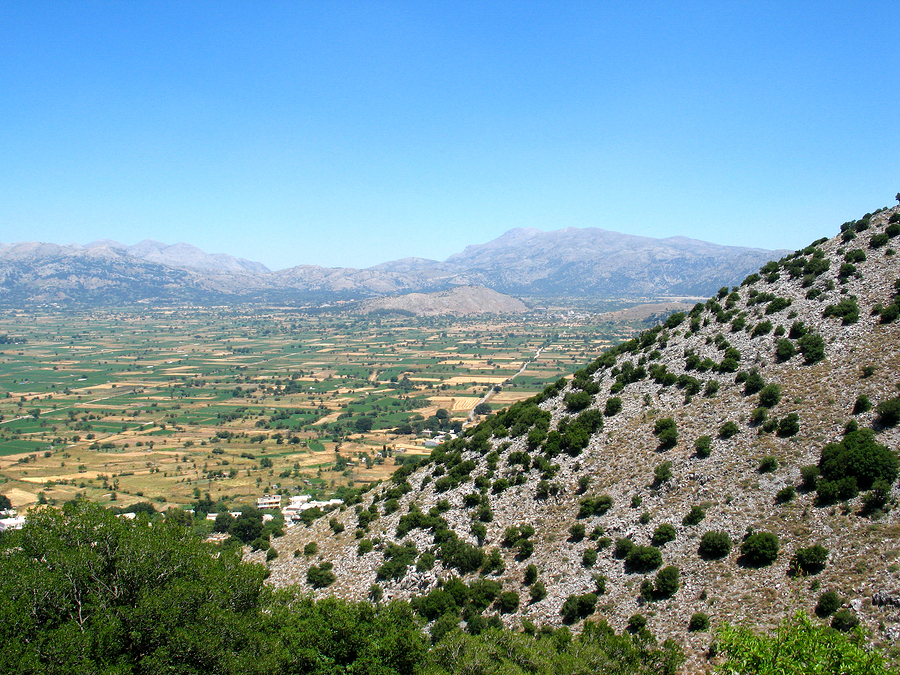
Our Hire Car in Crete
The travel tale Our Hire Car in Crete describes what it’s like when you go driving in Greece and get off the beaten track, resulting in kindnesses.
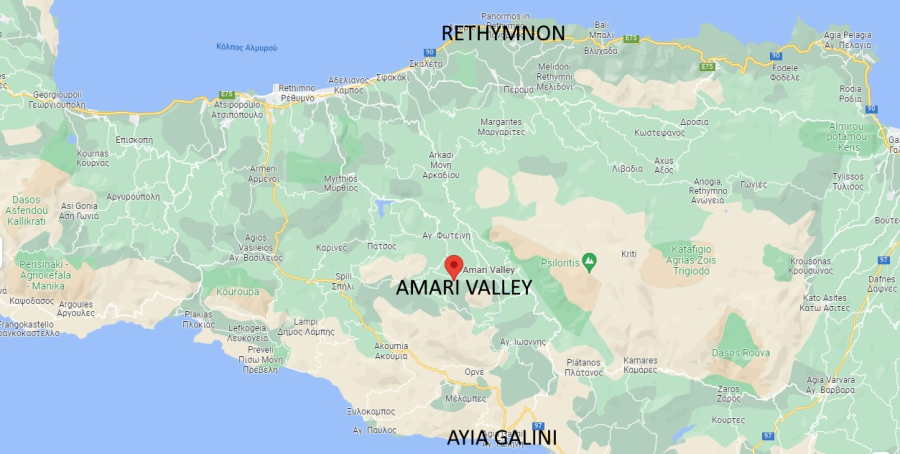
Amari Valley Drive
This Amari Valley drive in southern Crete starts and ends in Ayia Galini, takes four to five hours and cover 100 kilometres or 62 miles.
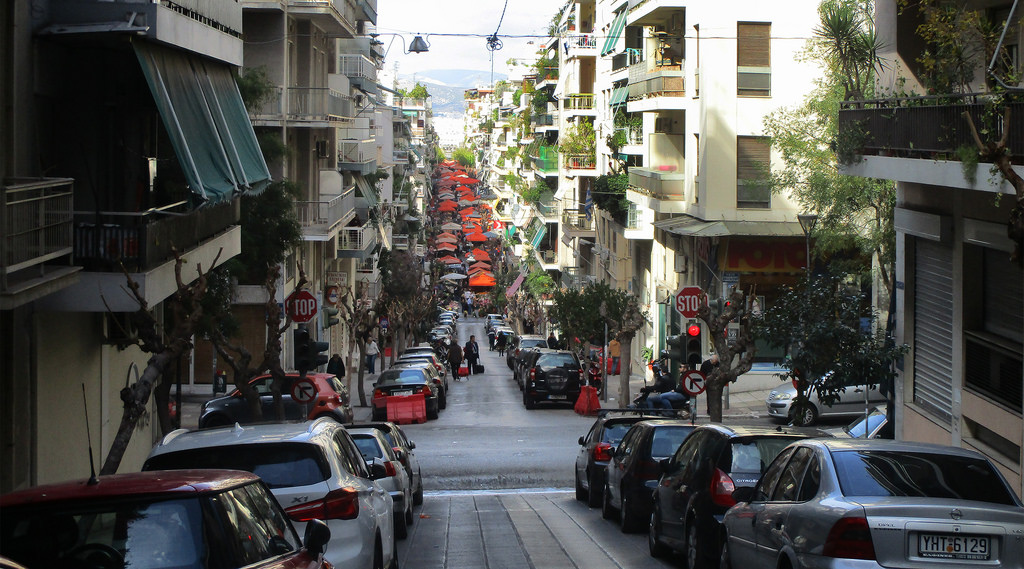
Athens Car Rental
Athens car rental options include almost all of the major international car hire firms such as Avis, Budget, Hertz, and Europcar.
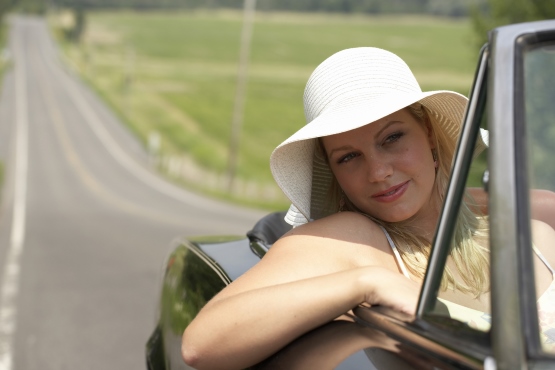
Athens Airport Car Rental
Athens Airport car rentals include Alamo/National Car Rental, Avis, Budget, Europcar, Hertz and Sixt, all with offices at the airport.
Would you prefer to share this page with others by linking to it?
- Click on the HTML link code below.
- Copy and paste it, adding a note of your own, into your blog, a Web page, forums, a blog comment, your Facebook account, or anywhere that someone would find this page valuable.
Latest Posts
Greece’s 10 Highest Mountains
4 guesthouses in zagori that are worth visiting, paris 2024 olympic flame lit at ancient olympia, countdown to games begins, april 17 greece national strike to affect public transport, ferry travel, the ikaria way.

Greece Announces Steep Fines for Beach Access Violations
Greece aiming to include knossos on unesco’s world heritage list, cyprus-greece ferry connection to start on may 29, two top floors of athens hotel blocking acropolis view shut down, greece opens visa station on rhodes to facilitate turkish tourists, why not join our greece travel secrets club as a member you'll get emailed our regular greece travel secrets magazine for news, information, and inspiration for planning your travels in greece. as a welcome gift you'll also get a free e-book, heaven on earth . this contains 19 of mike's favourite stories that he's written about travelling in greece for newspapers and magazines over the years. you'll find it over at substack . check out one of the archive issues to find the subscribe button..
LATEST NEWS
Apr 20, 24 02:38 PM
Apr 18, 24 10:29 AM
Apr 16, 24 11:37 AM
Apr 11, 24 01:51 PM
Apr 11, 24 11:41 AM
Apr 09, 24 11:46 AM
Apr 08, 24 11:06 AM
As an Amazon Associate, we earn from qualifying purchases, but at no cost to you.
BUY A JOURNAL TO RECORD YOUR OWN GREECE TRAVEL SECRETS!
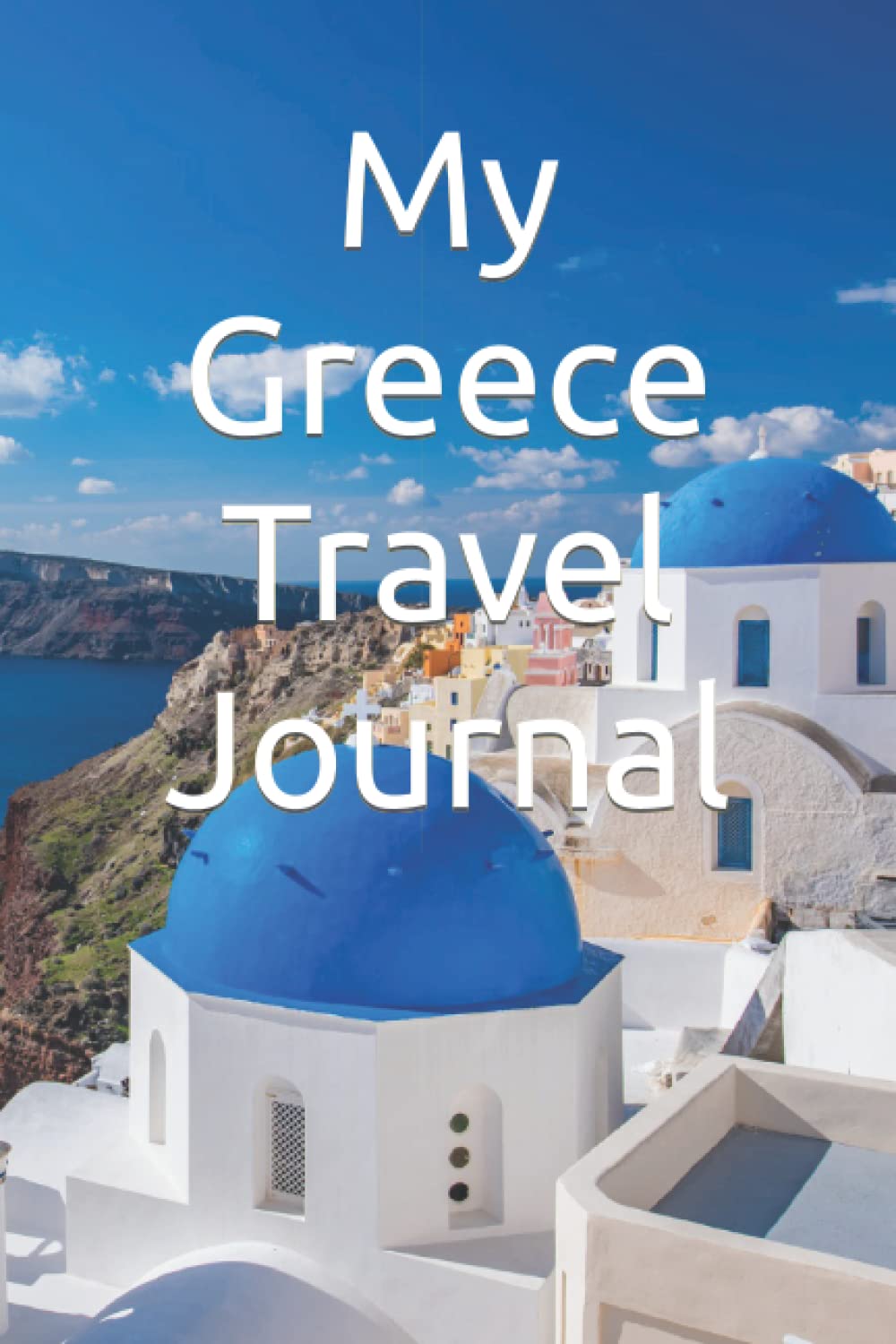
FOLLOW OUR GREECE VIDEOS ON YOUTUBE

BUILD A WEBSITE

2018 Primetime Emmy & James Beard Award Winner
20 Things to Know Before You Go: Northern Greece
Feb 16 2016.
Forget Mykonos: Sarah Souli’s intel on drinking, eating, dancing (and cursing) in northern Greece
1. It’s not the south. Forget Mykonos, Santorini, or even Athens. The northern part of Greece, which shares borders with several Balkan countries and Turkey , is a distinct destination. In the east is the country’s cultural capital, Thessaloniki, where ancient ruins sit next to modern apartment buildings in architectural anarchy. The majority of the city’s majestic palm trees were ripped up during the dictatorship , so for greenery, head west through the mountainous region full of cliffs, gorges, and forests to the north’s other major city, lakeside Ioannina. You’ll be in historic company: the Macedonians, Illyrians, Romans, Byzantines, Slavs and Ottomans have all passed through here, leaving their mark on the region’s architecture, culture, and food.
2. Have some extra cash on hand. One thing the north has in common with the rest of Greece is the economic crisis and crippling austerity measures. Thousands of people have lost their jobs, homes, savings, and in some cases, lives . Salaries have been slashed or unpaid altogether. Though the streets are still filled with people shopping and eating, the ongoing economic instability has, to say the least, had a negative effect on the population . In June, capital control was introduced across the country; Greeks can only withdraw 60 Euros daily from their accounts. This does not apply to foreign bank holders, but the lines at ATMs can be long. Prepare accordingly.
3. Soak up the Ottoman history. The Byzantines might have ruled Greece for over 1000 years, but the legacy of the Ottomans, who were present from the mid-15th century until the establishment of the modern Greek state in 1832, is more tangible. Walking around certain neighborhoods or towns, you’ll feel squarely in the Muslim world. Minarets reach skyward, and domed mosques dot the landscape. In Ioannina, be sure to visit the Ali Pasha Museum, located in his island summer home (accessible by boats, which leave frequently from the corniche). Fautis Rapakousis, a former baker who began collecting Ali Pasha relics when he was 17, is the jovial and informative owner of the museum (entry €3), which gives an impressive overview of the contentious Pasha’s life and death.
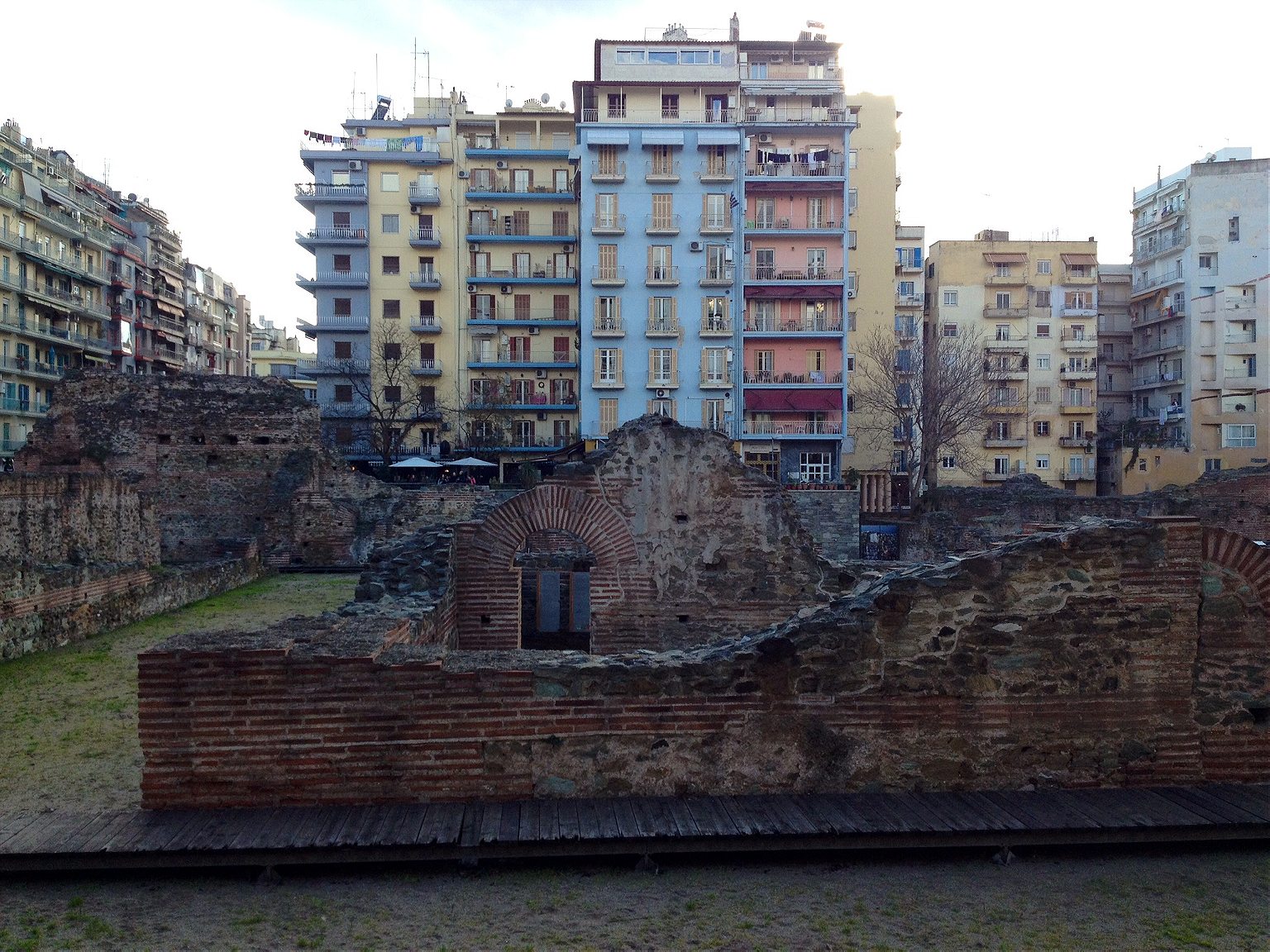
4. Make space. For the food, that is. It’s a cliche to say a people love to eat (who doesn’t?), but Greeks take it to a whole other level. Enter any home and you’re guaranteed to find something in the oven. It’s all delicious: salty feta , stuffed vegetables, grilled meat and fish, creamy pastitsio , marinated sweet red peppers, souvlaki , cheese pita, potatoes cooked in lamb fat. Quantity is just as important as quality, and portion sizes routinely rival the Cheesecake Factory. Food is everywhere: order an espresso and it comes with a plate of cookies; buy a beer and you’re guaranteed a serving of meze . If you’re in someone’s house and they like you, they will feed you directly off their fork. Your job is to open your mouth dutifully like an infant to receive whatever is on the other end, which is how, one evening, I found myself eating lamb eyeball.
5. This isn’t the place to be a teetotaler. What do you do when your host’s 64-year old father hands you a glass of homemade alcohol along with your morning coffee? You drink it, of course, and proceed to do this every day before noon for the next ten days. It’s rude to refuse a drink under most circumstances, so be prepared to clink glasses and shout out yammas! (cheers!). Tsipouro , made from distilled grapes and sporting a 45% alcohol content, is the beverage of choice. The best places to drink are tsipouradikas , bars that serve €2 bottles of tsipouro, accompanied by an enormous quantity of meze . In the west, it’s served plain, without ice; move east and it’s flavored with anise and served cold. During the winter, you can order tsipouro muddled with honey and cinnamon. A warning: as long as you’re sitting down, you’ll feel composed. Stand up, and you’ll have forgotten your own name.
YOU CAN CURSE OUT JUST ABOUT ANYTHING, FROM THE VIRGIN MARY TO THE ANTI-CHRIST
6. Don’t watch your mouth. To the puritan American ear, Greek can seem like an endless stream of profanity. In one particularly surreal moment, a muscular blonde man seated near our table stood up to leave. “I’m going to take the dick home,” he announced to a table half full of strangers, motioning to his boyfriend, a bearded Orthodox priest in full garb. “With God’s blessing!” the priest said. No one batted an eye. In Thessaloniki, I overheard a man tell a pigeon who had landed near him, “I fuck your Christ!” Indeed, you can curse out just about anything, from the Virgin Mary to the anti-Christ, without offending a soul. The only thing absolutely off-limits is one’s mother.
7. Dress for respect. No matter age or gender, Greeks are fastidiously tidy and trendy dressers. Shoes are polished, hands are manicured, hair is blown out and makeup is perfectly applied at all times of day. If you want to fit in, bring your nicest outfits, highest heels, and paint your nails- normcore is not a concept here. “But… why ?” a new friend asked, wrinkling up her nose when I explained that in Brooklyn, it’s hip to sport unwashed hair and moth-eaten sweaters. For many Greeks, it’s a matter of respect, to both yourself and others, to dress nicely. If shopping and self-care are your thing, you’ll be in paradise: pedicures are around 12 Euros, brands like Orsalia Parthenis offer chicly tailored outfits, and Korres beauty products, which run over $50 in the US, can be bought for €5 in pharmacies.
8. There’s more than one Macedonia. Hear the word ‘Macedonia,’ and you might innocently think it’s the name of a small, Slavic country that gained independence from Yugoslavia in 1991. But in Greece, where millions of people identify as ethnically Macedonian, Macedonia refers to a province in the north known as the birthplace of Alexander the Great. The Greek government rejects the naming of Macedonia as an independent country , claiming historical and territorial concerns. Greece has also accused Macedonia of appropriating Hellenic symbols that are integral to Greek culture. The naming dispute resulted in a breakdown of relations between the two countries, with Greece placing an embargo on Macedonia in 1994 and vetoing the country’s EU and NATO applications. Don’t be surprised if a Greek insists you call it Skopje.
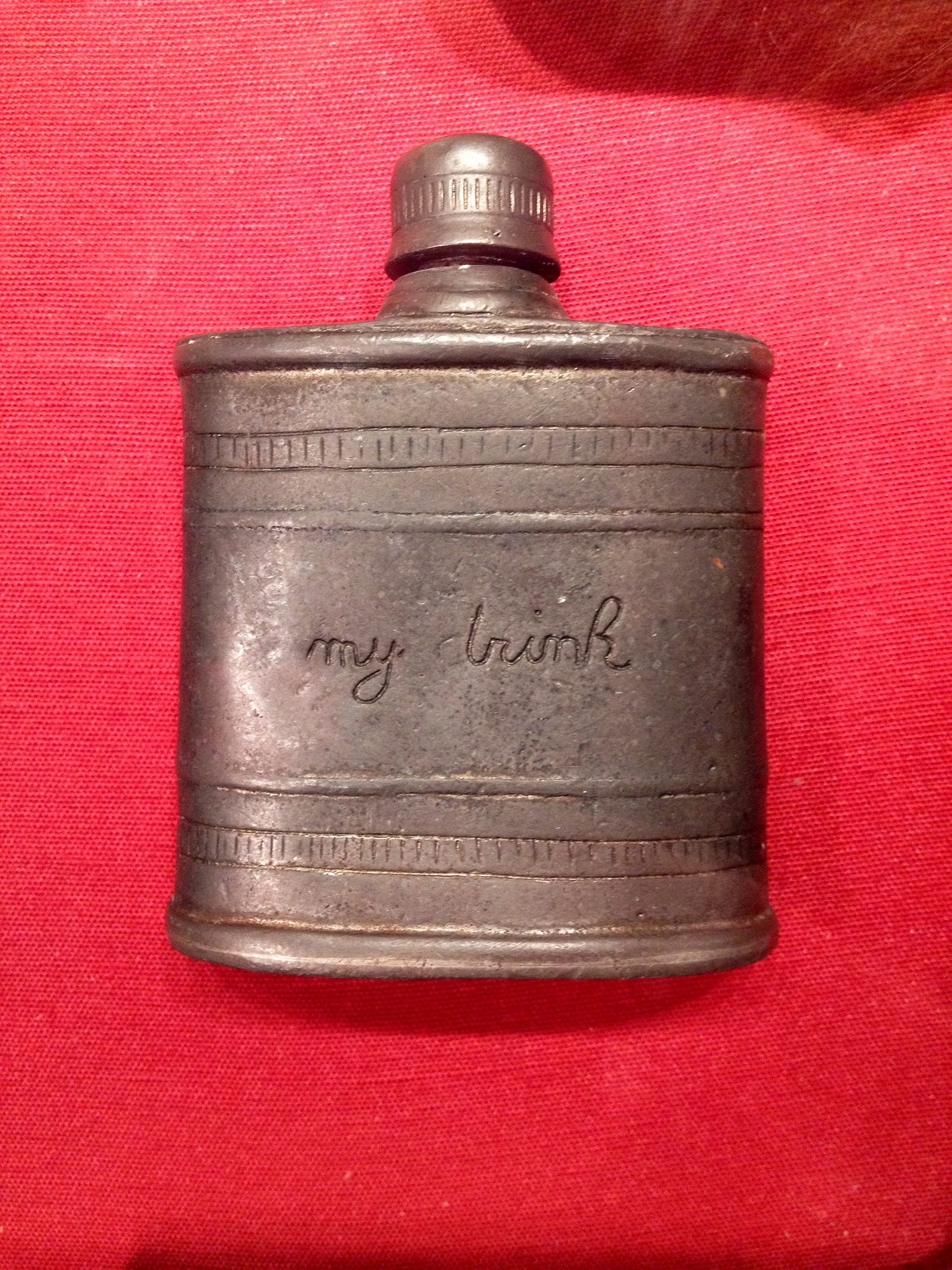
9. There is 24/7 hot spring access. There are hot springs all over the northeast. A few hours outside of Thessaloniki, in Aridea-Pozar, there are thermal baths reported to have healing qualities. You can opt for the outdoor springs, with gushing hot waterfalls and steam rising amongst the trees and rocks, or book a private room at one of the many spas that have rerouted the water. Both the outdoor baths and spas are open 24 hours. For a particularly magical experience, go very late during a moonless winter night, when the air is crispest and the stars brightest.
10. Don’t be a cold fish. With a few exceptions, Greeks are generally very affectionate and warm. Within an hour of meeting a new friend, she slipped her arm into the crook of mine. “Let me just…” she said, and we strolled down the street as though we had known each other for years. It’s very normal for people to touch, kiss, and hug each other, between both men and women and among relative strangers. Embrace it.
11. Meat is on the menu. In the north, the sparse-on-meat Mediterranean diet only really applies to seaside Thessaloniki. Everywhere else, particularly in the province of Epiros, expect piles of perfectly seasoned meat served with soft, fresh cheeses and chopped salads. In the tiny mountain town of Metsovo, head to Pente Fi, a no-frills restaurant serving grilled lamb bits on pieces of parchment paper. If you want to taste young female lamb, a regional specialty, you’ll have to arrive before 10am (they sell out early). Otherwise, try kokoretsi , lamb intestines grilled to a crunch wrapped around tender liver and sweetbreads. Eschew the plastic forks – everything tastes better eaten with your hands. And if you’re going in for souvlaki, eat it straight off the stick by firmly placing your teeth around the meat and pulling the stick away from your face.

12. Respect the evil eye… and your horoscope. Several days into a terrible headache, a friend called his grandfather to cure me. A few drops of oil in water, several muttered prayers, and a diagnosis revealed itself: I had the evil eye . Many Greeks are superstitious about the eye, hanging blue circles in their windows, dashboards, and around their necks. While you might not experience the eye, you will be asked your star sign within five minutes of meeting most people. “Virgo, eh,” new acquaintances would say with a knowing nod. No one could tell me exactly why star signs are so important (a conversation starter? a way of categorizing people?), but Northern Greece is a good place to read your horoscope guilt-free.
13. Learn a dance. A very popular TV show in Greece shows a roomful of moderately famous people eating and drinking around long white tables. There’s always someone singing very theatrically, and the rest of the guests are dancing, or nonchalantly throwing plates . Everyone, including blasé teenagers, knows at least one dance routine. It’s not uncommon to walk into a living room and see parents dancing to traditional music, huge smiles plastered across their faces; during street festivals, weddings, and parties, hundreds of people will be dancing. You will be invited to dance – don’t be embarrassed – just grab a shoulder and try and follow the grapevine-like footsteps. It’s less of a booty wiggle and more of an up-and-down motion with the occasional jump. However you move, you’ll be lauded for trying.
14. …and while you’re at it, learn a song, too. After several weeks in Greece, I began to lose track of the number of times people spontaneously burst into song in cafes, restaurants, and at home. This is a music culture, and everyone is fiercely proud of it. There’s a preference for strong voices and string instruments: lioutas, lyras, mandolin, bouzouki and the adorably tiny baglamas (intentionally small so musicians could stash them under their coats to avoid persecution during particularly unfun times in the 20th century ). Traditional music is popular with all generations, so brush up on a few of the classics, including Xaris Aleksiou , Manos Xatzidakis , Dimitra Galani and Giorgos Batis .
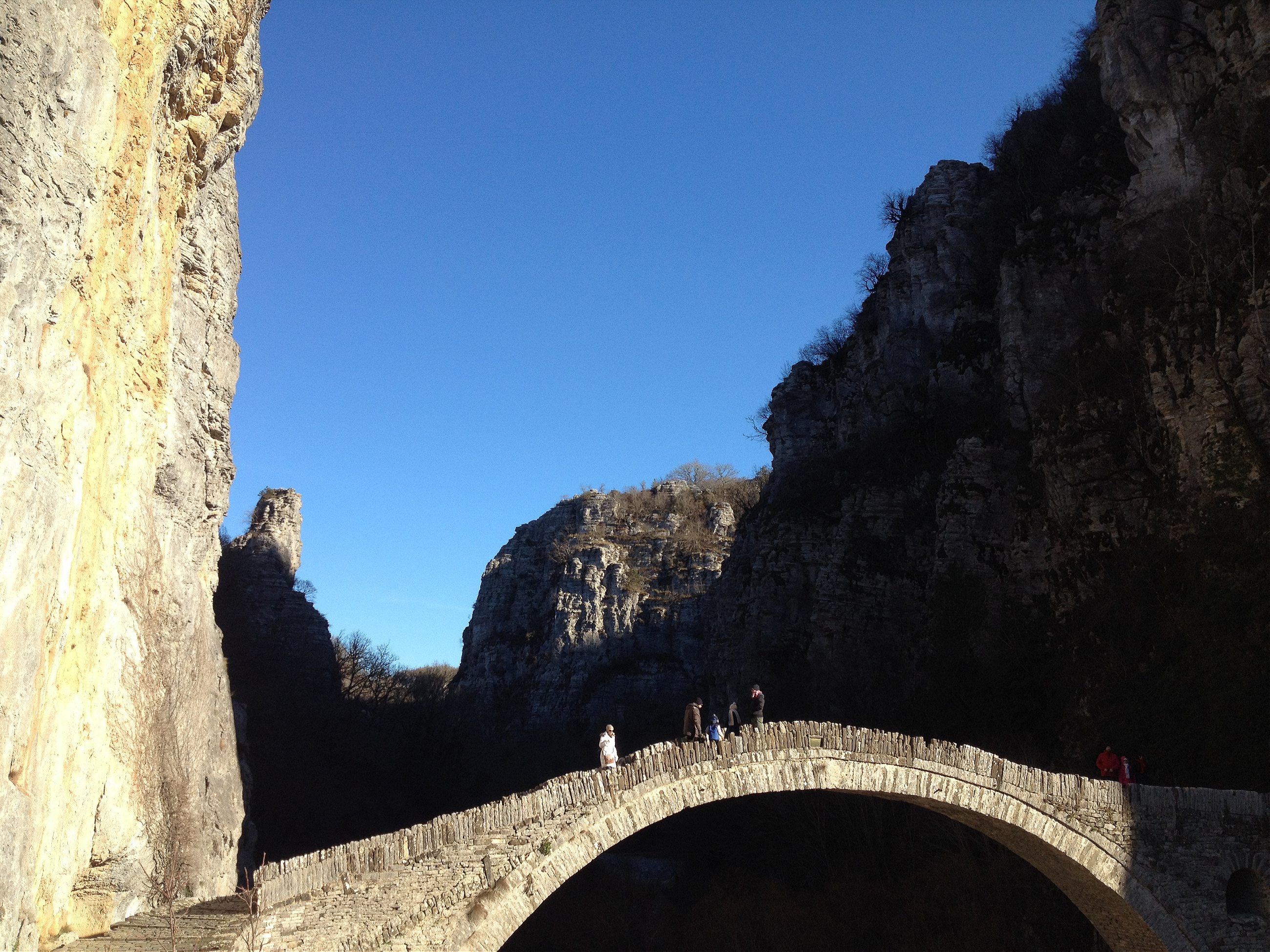
15. The mountains are open. For nearly 20 years, the Greek government was involved in a massive infrastructure project that created a series of highways connecting the mountainous eastern and western part of the country. Completed in 2009, the Egnatia Odos stretches for 670 km, comprising some 1670 bridges and 76 tunnels. Travel time between major cities was slashed in half, and getting to smaller villages in the Pindos mountain range has never been easier. You’ll find stone ‘forests,’ massive cliffs, and picturesque slate villages like Zagorohoria and Metsovo. The original roads, which are tiny and winding, are equally beautiful and often empty, save for a few cows.
16. Transportation seems randomly priced. Taxis and buses in cities like Ioannina and Thessaloniki are very cheap, particularly compared to other European cities, but regional buses and trains can be surprisingly expensive. An hour and a half bus ride can cost over €20. If you’re traveling outside the major cities, it might be best to rent a car.
17. Breakfast is more than coffee and cigarettes. While both are available in harmful abundance, it’d be a grave mistake not to eat a mpougatsa first thing in the morning. Filled with either salty cheese or sweet cream dusted with powdered sugar, mpougatsa is a flaky, crispy pie (“But not exactly a pie,” people kept reiterating) always served warm and always cut into tiny squares with a double-handled blade. You can buy them almost anywhere, but if you’re in Ioannina, head to Select , a sparsely decorated cafe run by an industrious septuagenarian couple. They’ve been making cheese and cream mpougatsa , and nothing else, their whole lives.

18. DJ Spacebilly has the hot tracks. During the holidays, you’ll often stumble upon street festivals, complete with big brass bands reprising Greek classics and hoards of well-heeled dancers. The port city of Thessaloniki also offers more conventional options. There aren’t many nightclubs, but the bars act as intimate dance floors, with Greek DJs spinning techno, house, and disco. Start the evening at Don’t Tell Mama to hear DJ Spacebilly play the city’s best music (as a bonus, the bartenders are particularly beautiful). Bord de L’eau, which also doubles as a ‘design factory’ and brings DJs from around the country, has a chiller vibe, while Berlin Bar, which is loud and sweaty and features a perpetually occupied stripper pole in the back, is the perfect place to end the night.
19. Florina is a restful respite. Located 16 km from the border with Macedonia (or Skopje, depending on who you’re talking to) is the impossibly picturesque town of Florina. It’s situated in a micro-climate, with four perfect seasons lasting exactly three months each, meaning you can ski in the winter and swim in the rivers during the summer. It’s a town for strolling and eating: be sure to dine at Genteki , a slow-food restaurant run by a sweet couple. Small plates are prepared on a stovetop over pieces of aluminum foil, and whole ducks are roasted in a wood burning oven. A quick jaunt down the river will lead you to Cafe Roza , where you can drink a well-executed Greek coffee surrounded by treasures brought back from Turkey.
20. It’s all Greek to you. Yes, what looks like the letter P is actually pronounced as an R and the upside V is an L-sound, but if you’ve spent any time on a college campus, you already know half the Greek alphabet. English is heavily influenced by Greek, and you’ll be surprised by how many words you already know. Though most young Greeks speak fluent English, it’s always nice to have a few phrases handy: yassas (hello), kalimera (good morning), ti kanis (how are you?), efharisto (thank you), eimai pliris (I’m full!), plaka mou kaneis (are you kidding me?!).
R&K Insider
Join our newsletter to get exclusives on where our correspondents travel, what they eat, where they stay. Free to sign up.
Shadows in Greece: Q&A with Enri Canaj
Featured city guides.
The northern mainland Travel Guide
Book your individual trip , stress-free with local travel experts
- roughguides.com
- the-northern-mainland
- Travel guide
- Itineraries
- Local Experts
- Travel Advice
- Accommodation
Plan your tailor-made trip with a local expert
Book securely with money-back guarantee
Travel stress-free with local assistance and 24/7 support
The tour to Greece was a pleasant surprise for me! Perfect organisation, pleasant team, amazing landscapes and cultural sites!
Greece’s northern mainland is dominated by the provinces of Macedonia and Thrace. Each has been part of the Greek state for less than a century – Macedonia (Makedhonía) was surrendered by the Turks in 1913 while Greek sovereignty over western Thrace (Thráki) was not confirmed until 1923 and there is still a sizeable ethnic minority population. Consequently, they stand slightly apart from the rest of the country, an impression reinforced for visitors by architecture and scenery, customs and climate that seem more Balkan than typically Mediterranean. In fact the region is relatively little known to outsiders, perhaps thanks to its capricious climate, lack of beach resorts and few charter flights. Yet northern Greece is one of the country’s most rewarding areas to visit.
Véria and Vergina
Northwest macedonia, northeast macedonia, folklore museum, byzantine museum, lake orestiádha, mavriótissa monastery, the dragon’s cave (spiliá tou dhrákou), dhispílio prehistoric lake settlement, kastoriá’s churches, kavála and around.
Mount Olympus, mythical abode of the gods, is a tempting target for hikers, while Mount Áthos , a Byzantine ecclesiastical idyll, is an unmissable attraction (at least for men, who are the only ones allowed here). The sybaritic capital of Macedonia, Thessaloníki, and the region’s other main city, Kavála, are also intriguing places to visit, the former providing access to the beach-fringed peninsula of Halkidhikí. The north also has more outstandingly beautiful spots, especially the Préspa National Park in rugged western Macedonia and the birdwatchers’ heaven of the Kerkíni wetlands to the east. The lakeside city of Kastoriá and the clifftop town of Édhessa are among Greece’s most beguiling urban centres, thanks to a belated but determined attempt to restore some fine old buildings. Admittedly, the region’s ancient sites are relatively modest, though there is one notable exception: the awe-inspiring Macedonian tombs discovered at Vergina in the 1970s, near the pleasant city of Véria. Not so well known are the Macedonian and Roman sites at Pella, with its fabulous mosaics, and at Philippi, St Paul’s first stop in Greece. Few travellers on their way to Bulgaria or Turkey stray from the dull trunk road through Thrace, but the well-preserved town of Xánthi, a trio of minor archeological sites, the waterfowl reserves of the Évros Delta and the Dhadhiá Forest, with its black vultures, deserve more than just a meal stop. Alexandhroúpoli is dull but rewards the curious with one of the best ethnological museums in the whole of Greece.
Tailor-made travel itineraries for Greece, created by local experts

10 days / from 2608 USD
The Historical and Mythological Cyclades islands
The Cyclades islands include two of the most famous Greek Islands: Mykonos and Santorini. Visit these and some of the smaller, quieter, islands. With white washed houses, narrow cobbled streets, blue domed roofs and stunning beaches, they are what Greece is all about.

9 days / from 2205 USD
A secluded villa stay on Mainland Greece
Stay in a secluded private villa with magnificent views to the sea and explore this beautiful corner of Mainland Greece with your own rental car. Under the impressive Mt Taygetos in Southern Peloponnese, the region of Mani will give you a snapshot of authentic Greece.

10 days / from 1993 USD
Along the Coast of Crete: from Heraklion to Platanias
As Greece's largest island, Crete's culture and atmosphere is distinctly different from mainland Greece. Thousands of years of unique culture and rich history complement the island's untamed natural beauty. Explore Crete at your own pace with this unique self-drive trip!
Tailor-made trips for Greece
West of Thessaloníki, VÉRIA (ancient Berrhoea or Berea) is one of the more interesting northern Greek communities, thanks to its mixed Jewish, Muslim and Christian heritage. In the nineteenth century the town became an important industrial centre, growing prosperous from flour and sesame milling as well as hide tanning. The pleasant modern town boasts an excellent new Byzantine Museum and a smattering of appealing religious edifices. There are also enough facilities to make it a reasonable base for visits to the excavations of ancient Aegae at Vergina.
Vergina: Ancient Aegae
The site of VERGINA, 16km southeast of Véria, undoubtedly qualifies as one of Greece’s most memorable attractions. This was the site of Aegae, the original Macedonian royal capital before the shift to Pella, and later the sanctuary and royal burial place of the Macedonian kings. It was here that Philip II, father of Alexander the Great, was assassinated, cremated and buried; tradition maintained that the dynasty would be destroyed if any king were buried elsewhere, as indeed happened after the death of Alexander in Asia. Until the site was unearthed in 1977 after decades of work by Professor Manolis Andronikos, Aegae had long been assumed to be lost beneath modern Édhessa. The ruins of the Palace of Palatítsia are currently closed for renovations until at least 2017.
The Royal Tombs
Under a tumulus, then just outside modern Veryína, Andronikos discovered several large Macedonian chamber tombs, known simply as the Royal Tombs. From outside, all that’s visible is a low hillock with skylights and long ramps leading inside, but once underground in the climate-controlled bunker you can admire the facades and doorways of the tombs in situ, well illuminated behind glass. Finds from the site and tombs, the richest Greek trove since the discovery of Mycenae, are exhibited in the complex along with erudite texts in Greek and English. It’s best to try and get here very early or visit at siesta time in order to avoid the crowds.
A clockwise tour takes you round the tombs in the order IV-I-II-III. Tomb IV, the so-called Doric, was looted in antiquity; so too was Tomb I, or the Persephone tomb, but it retained a delicate and exquisitely crafted mural of the rape of Persephone by Hades, the only complete example of an ancient Greek painting that has yet been found. Tomb II, that of Philip II, is a much grander vaulted affair with a Doric facade adorned by a sumptuous painted frieze of Philip, Alexander and their retinue on a lion hunt. Incredibly, the tomb was discovered intact. Among its treasures on display are a marble sarcophagus containing a gold ossuary (larnax), its cover embossed with the sixteen-pointed star symbol of the royal line, and, more significantly, five small ivory heads, among them representations of both Philip II and Alexander. It was this clue, as well as the fact that the skull bore marks of a facial wound Philip was known to have sustained, that led to the identification of the tomb as his. Also on view are a fabulous gold oak-leaf wreath – so delicate it quivers – and a modest larnax (small coffin) found in the antechamber, presumed to contain the carefully wrapped bones and ashes of a Thracian queen or concubine.
Tomb III is thought to be that of Alexander IV, “the Great’s” son, murdered in adolescence – thus the moniker Prince’s Tomb. His bones were discovered in a silver vase. From the tomb frieze, a superb miniature of Dionysos and his consort is highlighted. You should also spare a moment or two to view the excellent video, subtitled in English, which brings the archeological finds to life.
The Macedonian Tomb
The so-called Macedonian Tomb, actually five adjacent tombs, can also be visited after a fashion. They are about 500m uphill, above the large parking lot, left of the main road. Like the Royal Tombs, they lie well below ground level, protected by a vast tin roof. Excavated by the French in 1861, the most prominent one, thought to be that of Philip’s mother Eurydike, is in the form of a temple, with an Ionic facade of half-columns breached by two successive marble portals opening onto ante- and main chambers. Inside you can just make out an imposing marble throne with sphinxes carved on the sides, armrests and footstool. The neighbouring two pairs of tombs, still undergoing snail-paced excavation, are said to be similar in design.
This intriguing corner of the province includes the handsome towns of Édhessa and Kozáni. West of Édhessa is the handsome mountain village of Nymféo, where some of the attractive stone houses have been converted into classy accommodation, and the bird-rich Préspa lakes, both of which nestle in a strategic spot where Greece, Albania and the Republic of Macedonia meet. Flórina, the area’s main urban centre, is of limited appeal but does have two notable museums. Seeing the area properly is really only viable if you have your own transport.
The main gateway to northwest Macedonia, ÉDHESSA is a delightful place atop an escarpment. Its modest fame is attributed to the waters that flow through the town; descending from the mountains to the north, which eventually cascade down a dramatic ravine, luxuriant with vegetation, to the plain below. Most of the town’s architecture is humdrum, but the various stream-side parks and wide pedestrian pavements are a rare pleasure in Greece (Édhessa was a pioneer in pedestrianization) and it’s an increasingly important centre for regional tourism.
Édhessa aquarium
This unusual freshwater aquarium is the centrepiece of a so-called open-air water museum, built from converted watermills in the Varósi district just west of the waterfalls. The surrounding mills and Balkan-style houses, some decorously decaying, others tastefully renovated, reward aimless wanderings – though everything is well signposted.
The folklore museum
The only real sight as such is a delightful little folklore museum near Ayía Paraskeví church; it displays various household objects and other traditional items of the kind that would once have graced every home in the district.
The Préspa lakes
A shimmering expanse of water riven by islets and ridges, the PRÉSPA LAKES are one of the Balkans’ most important wildlife sanctuaries. Though not postcard-pretty, the basin, in the far northwest of Macedonia, has an eerie beauty that grows on you with further acquaintance. It also has a surprisingly turbulent history as a place of exile for troublesome noblemen during the Byzantine era and the scene of vicious local battles during the 1947–49 Greek civil war.
Mikrí Préspa, the southerly lake, is mostly shallow (9m maximum depth) and reedy, with a narrow fjord curling west and just penetrating Albanian territory. The borders of Greece, Albania and the Republic of Macedonia meet in the middle of deeper Megáli Préspa and, especially during the early 1990s, it became a major exit corridor into Greece for Albanian refugees, who found work as illegal agricultural workers in the local bean and hay industry.
The core of the national park, established in 1971, barely encompasses Mikrí Préspa and its shores, but the peripheral zone extends well into the surrounding mountains, affording protection of sorts to foxes, wolves and even bears, which inhabit the area. The lakes have a dozen resident fish species, including tsiróni, a sort of freshwater sardine, and grivádhi, a kind of carp, but it’s birdlife for which the Préspa basin is most famous.
MIKROLÍMNI, 5km up a side road off the main route into the valley, is an extremely sleepy hamlet that might be your first conceivable stop. In the evening, you can look towards sunsets over reedbeds and the snake-infested Vidhronísi (or Vitrinítsi) islet, though swimming isn’t good here, or anywhere else on Mikrí Préspa for that matter.
Return to the main road, which reaches a T-junction 16km from the main Flórina–Kastoriá highway, on the spit which separates the larger and smaller lakes. It’s probable that at one time there was just one lake here, but now there’s a 4m elevation difference. Bearing right at the junction leads within 4km to Áyios Yermanós; the left option splits again at the west end of the spit, bearing south towards the islet of Áyios Ahíllios or northwest towards the hamlet of Psarádhes.
Áyios Yermanós
ÁYIOS YERMANÓS, 4km to the right at the T-junction when the main road reaches Megáli Préspa, is a large village of tile-roofed houses, overlooking a patch of the lake in the distance and adjoining the hamlet of Lemós. It’s worth making the trip up just to see two tiny late Byzantine churches, whose frescoes, dating from the time when the place belonged to the bishopric of Ohrid, display a marked Macedonian influence. Inside the lower church, Áyios Athanásios, seldom open, you can glimpse a dog-faced St Christopher among a line of saints opposite the door. Far more impressive, however, is the tiny, eleventh-century parish church of Áyios Yermanós up on the square, hidden behind a new monster awkwardly tacked onto it in 1882. The Byzantine structure has its own entrance, and the frescoes, skilfully retouched in 1743, can be lit; the switch is hidden in the narthex.
Koúla beach
At the far end of the wide causeway dividing the two lakes, 4km to the left from the T-junction, is Koúla beach, a motley cluster of what passes for tourist development hereabouts: a patch of reed-free sand from where you can swim in Megáli Préspa; a free but basic camping area, now bereft of its water tap; plus an army post.
Reached by 6km of panoramic corniche road from a signposted turning near Koúla beach, the rickety village of PSARÁDHES makes for a pleasant stroll. Unfortunately, the wonderful old houses lining the lanes are increasingly derelict. It is sometimes possible to take a short boat excursion out onto the lake to see some of the lakeside monuments and churches, but this is not the best way to spot birdlife; there is no fixed schedule, so ask around.
Áyios Ahíllios
Two kilometres directly south of Koúla beach, the road soon brings you to a floating footbridge, 1500m in length, which leads across to the islet of Áyios Ahíllios and its impoverished, almost deserted hamlet. A five-minute walk from the footbridge is the ruined Byzantine basilica of Áyios Ahíllios, while another ruin, a sixteenth-century monastery, Panayía Porfaras, lies at the southern end of the islet. For unrivalled views of Mikrí Préspa climb up to the summit of the islet’s hill.
The birds of Préspa
The lakes are home to relatively few birds of prey but you should see a fair number of egrets, cormorants, crested grebes and pelicans. This is one of the few breeding sites of both the white and Dalmatian pelican, which nest in the spring, with the chicks out and about by summer. They feed partly on the large numbers of snakes, which include vipers, whip snakes and harmless water snakes which you may encounter while swimming. Observation towers are available at Vromolímni and near Áyios Ahíllios, but dawn spent anywhere at the edge of the reedbeds with a pair of binoculars will be immensely rewarding, though bear in mind that you are not allowed to boat or wade into the reeds.
HALKIDHIKÍ begins at a perforated edge of shallow lakes east of Thessaloníki, then extends into three prongs of land – Kassándhra, Sithonía and Athos – trailing like tentacles into the northern Aegean Sea. Kassándhra and Sithonía host some of the busiest holiday resorts in Greece, drawing hordes from Thessaloníki and other parts of the north, as well as increasing numbers from eastern Europe. The beaches themselves consist of white sand, ranging in consistency from powder to coarse-grained.
Mount Athos, the easternmost peninsula, is in all ways separate, a “Holy Mountain” whose monastic population, semi-autonomous within the Greek state, excludes all females – even as visitors. The most that women can do is to glimpse the buildings from offshore cruise kaïkia sailing from the two small resorts on the periphery of the peninsula – Ierissós and Ouranoúpoli – on the “secular” part of the Athos peninsula.
Macedonian Cavemen
Fifty kilometres southeast of Thessaloníki, en route to the Kassándhra peninsula, and set among handsome mountain scenery, is the cave of Kókkines Pétres. The name means “Red Stones”, and they were discovered in 1959 by villagers from nearby Petrálona looking for water. Besides an impressive display of stalagmites and stalactites, the villagers – and, later, academics – found the fossilized remains of prehistoric animals and, most dramatic of all, a Neanderthal skull, all of which are displayed in a decent museum near the cave entrance. No photography is allowed, but there is a small museum and onsite café.
Few people ever venture into the arable plains of northeastern Macedonia, where attractions are sparsely spread among golden fields of corn and tobacco and incredible numbers of storks’ nests. Up near the craggy mountains that form the frontier with Bulgaria, artificial Lake Kerkíni is home to masses of birds, some of them extremely rare in Europe, making it as interesting to ornithologists as the Préspa lakes much farther west. The tranquil setting and rich flora mean it is not only for avid twitchers.
An alternative route to the Egnatía Odhós for reaching Kavála is the scenic route that climbs northeast out of Thessaloníki, first taking you via Sérres before passing Alistráti, worth visiting for its memorable caves, and then heading towards Dhráma and ancient Philippi along a quieter road that offers majestic panoramas of Mount Meníkio (1963m), Mount Pangéo (1956m) and Mount Falakró (2230m). Regular buses from Thessaloníki and between Sérres and Dhráma ply this road.
The Kerkíni Wetlands
Artificial, marsh-fringed Lake Kerkíni, tucked up near the mountainous Bulgarian border some 80km northeast of Thessaloníki, enjoys international protected status, thanks to the 300-plus species of birds that spend at least part of the year here, some of them on the endangered species list. Huge expanses of water lilies stretch across the large anvil-shaped lake, out of which the River Strymónas flows to the northern Aegean near ancient Amphipolis, while a herd of water buffalo wallows and grazes the eastern banks, and local fishermen compete with every type of heron known to inhabit Europe. Other birds breeding in the Kerkíni wetlands include various species of grebes, terns, egrets, ducks, geese, ibis, spoonbills, avocets and pelicans, plus raptors such as the black kite, the short-toed eagle and the Levant sparrowhawk.
Two kilometres from the lake’s northern shore lies the village of KERKÍNI, where you will find the Kerkíni Wetlands Information Centre ([email protected]). You can also negotiate birdwatching trips in a pláva, a traditional punt-like fishing boat. The surroundings reward exploration with their abundance of flora and fauna, with huge numbers of wildflowers in the spring and early summer.
Just 14km short of Kavála on the busy road from Dhráma, you come to PHILIPPI (Filippoi on some maps and signs), a famous battlefield during the civil wars of Ancient Rome and the subject of one of St Paul’s Epistles. Apart from the scattered Roman ruins, the principal remains of the site are several impressive, although derelict, basilican churches.
Brief history
Philippi was named after Philip II of Macedon, who wrested it from the Thracians in 356 BC for the sake of nearby gold mines on Mount Pangéo. However, it owed its later importance and prosperity to the Roman construction of the Via Egnatía. With Kavála/Neapolis as its port, Philippi was essentially the easternmost town of Roman-occupied Europe. Here, as at Actium, the fate of the Roman Empire was decided, at the Battle of Philippi in 42 BC. After assassinating Julius Caesar, Brutus and Cassius had fled east of the Adriatic and, against their better judgement, were forced into confrontation on the Philippi plains with the pursuing armies of Antony and Octavian and were comprehensively beaten in two successive battles.
St Paul landed at Kavála and visited Philippi in 49 AD, and so began his religious mission in Europe. Despite being cast into prison, he retained a special affection for the Philippians, his first converts, and the congregation that he established was one of the earliest to flourish in Greece.
The most conspicuous of the churches at the site is the Direkler (Turkish for “columns” or “piers”), to the south of the modern road which here follows the line of the Via Egnatía. Also known as Basilica B, this was an unsuccessful attempt by its sixth-century architect to improve the basilica design by adding a dome. The central arch of its west wall and a few pillars of reused antique drums stand amid remains of the Roman forum. A line of second-century porticoes spreads outwards in front of the church, and on their east side are the foundations of a colonnaded octagonal church, which was approached from the Via Egnatía by a great gate. Behind the Direkler and, perversely, the most interesting and best-preserved building of the site, is a huge monumental public latrine with nearly fifty of its original marble seats still intact.
Across the road on the northern side, stone steps climb up to a terrace, passing on the right a Roman crypt, reputed to have been the prison of St Paul and appropriately frescoed. The terrace flattens out onto a huge paved atrium that extends to the foundations of another extremely large basilica, designated Basilica A. Continuing in the same direction around the base of a hill you emerge above a theatre cut into its side. Though dating from the same period as the original town, it was heavily remodelled as an amphitheatre by the Romans – the bas-reliefs of Nemesis, Mars and Victory all belong to this period. It is now used for performances during the annual summer Philippi-Thássos Festival. The best general impression of the site – which is extensive despite a lack of obviously notable buildings – and of the battlefield behind it can be gained from the acropolis, whose own remains are predominantly medieval. This can be reached by a steep climb along a path from the museum.
The ethnically diverse Greek province of THRACE (Thráki) was once part of a much larger region now split between the modern states of Greece, Turkey and Bulgaria. Heading across the Néstos River, the border with Macedonia, the change in population is obvious: Turkish settlements with their tiled, whitewashed houses and pencil-thin minarets contrast sharply with modern Greek villages built for the refugees of the 1920s. The same features are combined in the region’s biggest urban centre, the attractive market town of Xánthi. Of the mountain villages north of Xánthi, Stavroúpoli stands out as the most worth visiting, while to the south and east a trio of archeological sites is to be found along the coast near Komotiní. Beyond the service town of Alexandhroúpoli lies the Évros River, which forms the heavily guarded land border with Turkey.
XÁNTHI is the most interesting point to break a journey in Thrace. There is a busy market area, good food and, up the hill to the north of the Kendrikí Platía, the main café-lined square, a very attractive old Ottoman quarter. The town is also home to the University of Thrace, which lends a lively air to the place, particularly in the area between the bazaar and the campus, where bars, cinemas and bistros are busy in term time.
The main south–north thoroughfare is 28-Oktovríou, lined with fast-food outlets and sundry shops. One end is marked by the Kendrikí Platía, recognizable by its distinguished clocktower. Try, if you can, to visit on Saturday, the day of Xánthi’s street fair – a huge affair, attended equally by Greeks, Pomaks and ethnic Turks, held in an open space near the fire station on the eastern side of the town.
The old town
The narrow cobbled streets of the old town are home to a number of very fine mansions – some restored, some derelict – with colourful exteriors, bay windows and wrought-iron balconies; most date from the mid-nineteenth century when Xánthi’s tobacco merchants made their fortunes.
Further up, the roads become increasingly narrow and steep, and the Turkish presence (about fifteen percent of the total urban population) is more noticeable: most of the women have their heads covered, and the more religious ones wear full-length cloaks. Churches and mosques hide behind whitewashed houses with tiled roofs and orange-brown tobacco leaves are strung along drying frames. Numerous houses, no matter how modest, sport a dish for tuning in to Turkish satellite television.
The folk museum
Two adjacent mansions at the bottom of the hill up into the right-bank quarter of the old town, originally built for two tobacco magnate brothers, have been turned into an excellent folk museum. Worth seeing for the imposing exterior alone, some years ago the interior was lovingly restored with painted wooden panels, decorated plaster and floral designs on the walls and ceilings. The interesting displays include Thracian clothes and jewellery, numerous household objects and historical displays on the tobacco industry and society in general; entry includes an enthusiastic guided tour if requested.
1923 and all that
Separated from the Turkish territory of eastern Thrace by the Évros River and its delta, western Thrace is the Greek state’s most recent acquisition, under effective Greek control only since 1920. While Muslims throughout the rest of the country were evacuated by force under the Treaty of Lausanne in 1923, the Muslims of western Thrace were exempted and continue to live in the region in return for a continued Greek presence in and around Constantinople (Istanbul).
Nowadays, out of a total population of 360,000, there are officially around 120,000 Muslims, about half of them Turkish-speakers, while the rest are Pomaks and Roma. Although there are dozens of functioning mosques, some Turkish-language newspapers and a Turkish-language radio station in Komotiní, only graduates from a special Academy in Thessaloníki have been allowed to teach in the Turkish-language schools here – thus isolating Thracian Turks from mainstream Turkish culture. Local Turks and Pomaks claim that they are the victims of discrimination, but despite violence in the past, relationships have improved with each decade and as an outsider you will probably not notice the tensions. In mixed villages Muslims and Greeks appear to coexist quite amicably and this harmony reaches its zenith in Xánthi. All Thracians, both Muslim and Orthodox, have a deserved reputation for hospitality.
Alexandhroúpoli
Some 120km southeast of Xánthi, the modern city of ALEXANDHROÚPOLI (Dedeagaç in Turkish) was designed by Russian military architects during the Russo-Turkish war of 1878. The town only became Greek in 1920, when it was renamed after a visit from Greece’s King Alexander. It does not, on first acquaintance, have much to recommend it: a border town and military garrison with Greek holiday-makers competing in summer for limited space in the few hotels and the campsite. There is, however, an excellent museum and a lively seafront promenade. The town also provides access to two excellent birdwatching sites, the nearby Évros Delta and further north the Dhadhiá Forest Reserve. No village nearby is complete without its stork’s nest, dominating the landscape like a watchtower.
Ethnological Museum of Thrace
The excellent Ethnological Museum of Thrace is one of the best of its kind in the country and can easily fill an hour or so. Housed in a tastefully restored Neoclassical mansion, its eye-catching modern displays cover almost every aspect of traditional life in Thrace. For once every ethnic group is covered: Pomaks, Turks, Armenians, Jews and Roma as well as Greeks. Professionally produced videos, with commentaries in Greek only, complement the beautifully lit cabinets. A delightful café, serving local specialities, and a good museum shop complete the picture.
The seafront
Alexandhroúpoli’s seafront is dominated by the 1880 lighthouse, the town’s symbol; it comes alive at dusk when the locals begin their evening promenade. In summer, café tables spill out onto the road and around the lighthouse; makeshift stalls on the pavements sell pumpkin seeds and grilled sweetcorn as well as pirate DVDs and the like. Looking south, you can usually see the dramatic silhouette of the island of Samothráki, over 40km off the coast.
The Évros Delta
The Évros Delta is one of Europe’s most important wetland areas for birds – and one of Greece’s most sensitive military areas. Among more than 250 different bird species are sea eagles, pygmy cormorants and the lesser white-fronted goose. The delta is crisscrossed with tracks along the dykes used by farmers taking advantage of the plentiful water supply for growing sweet corn and cotton. The south is the most inspiring part, well away from the army installations to the north; as you go further into the wetlands, the landscape becomes utterly desolate, with decrepit clusters of fishing huts among the sandbars and inlets. At the mouth of the delta sprawls a huge saltwater lake called Límni Dhrakónda. Obviously what you see depends on the time of year, but even if birdlife is a bit thin on the ground, the atmosphere of the place is worth experiencing.
Dhadhiá Forest Reserve
A little under 40km northeast of Alexandhroúpoli, the Dhadhiá Forest Reserve stretches over 352 square kilometres of protected oak and pine forest covering a succession of volcanic ridges in the Évros Valley. The diversity of landscape and vegetation and the proximity of important migration routes make for an extremely diverse flora and fauna, but raptors are the star attraction, and main impetus for this WWF-backed project. In all, 36 of Europe’s 38 species of diurnal birds of prey, including eagles, falcons, hawks and buzzards, can be sighted at least part of the year. The region is also one of two remaining European homes of the majestic black vulture, the other being the Extremadura region of Spain.
The reserve complex
After a drive of 7km through the rolling, forested hills, you reach the reserve complex, with its information centre and exhibition about the region’s wildlife. All cars – except for a tour van which makes sorties several times daily (€3) – are banned from core areas totalling 72 square kilometres, and foot access is restricted to two marked trails: a two-hour route up to the reserve’s highest point, 520m Gíbrena with its ruined Byzantine castle, and another ninety-minute loop-route to an observation hide overlooking Mavrórema canyon from where griffon vultures and other raptors make up the bulk of sightings.
Top image: Dochiariou Monastery, Mount Athos © PNIK/Shutterstock
Set on a hilly, wooded peninsula extending deep into slate-coloured Lake Orestiádha, KASTORIÁ is one of the most interesting and attractive towns of mainland Greece. For centuries it grew rich on the fur trade, using the pelts of local wild beavers (kastóri in Greek). Though these animals were trapped to extinction by the nineteenth century, Kastoriá still supports a considerable industry of furriers using a mixture of imported pelts and locally farmed beavers. You’ll see pelts drying on racks, and fur megastores with profuse Russian signposting hinting at the target market. The town also has a strong tradition of rowing, and rowers can be seen out on the lake most days. Even the Oxford and Cambridge Blues have been known to practise their strokes here.
For most visitors, however, Kastoriá’s main appeal lies in traces of its former prosperity: dozens of splendid arhondiká – mansions of the old fur families – dating from the seventeenth to nineteenth centuries, plus some fifty Byzantine and medieval churches. About the only reminder of Muslim settlement is the minaret-less Koursoún Tzamí, marooned in a ridgetop car park; there’s also a patch of an originally Byzantine fortification wall down on the neck of the peninsula.
For a sense of what Kastoriá must once have been during its heyday, head for the former lakeside quarter officially called Karýdhis but better known as Dóltso. Among the notable mansions in the area are Bassáras and Natzís, close together on Vyzandíon; the latter was admirably restored in the 1990s. A third, also close by, on Platía Dóltso, now houses the Traditional Costume Museum (open by appointment; free;24670 22697), a magical display of traditional clothing from western Macedonia and a chance to see another magnificent interior.
The splendidly opulent seventeenth-century Aïvazís family mansion has been turned into a Folklore Museum. The house was inhabited until 1972 and its furnishings and most of its ceilings are in excellent repair, having miraculously survived German shelling; the Ottoman-style kiosk sports a set of stained-glass windows, three of them original, the others replaced by a local craftsman. Other features are an oriental fireplace in the master bedroom and the kitchen with all the original pots and pans.
The Byzantine Museum, up on Platía Dhexamenís, wisely goes for quality over quantity in this well-lit if unimaginatively displayed collection spanning the twelfth to the sixteenth centuries. Highlights include an unusually expressive thirteenth-century icon of Áyios Nikólaos and a fourteenth-century Ayii Anaryiri, plus a later one depicting the life of St George. There are also a few double-sided icons, including a rare Deposition, intended for use in religious processions. Captions are in Greek only.
One of the most pleasant things to do in Kastoriá is to follow the narrow road along Lake Orestiádha to the peninsula to the east of town; at the tip vehicles must circulate anticlockwise, but the route is mainly used by joggers and the odd walker. Although the lake itself is visibly polluted, wildlife still abounds – pelicans, swans, frogs, tortoises and water snakes especially, and on a spring day numerous fish break water.
Near the southeastern tip of the peninsula, some 3km along from the Hotel Kastoria, stands the Mavriótissa monastery, flanked by peacocks and a fair-value restaurant. Two churches are all that remains of the monastery: a smaller fourteenth-century chapel, with fine frescoes of scenes from Christ’s life, abutting the larger, wood-roofed eleventh-century katholikón on whose outer wall looms a well-preserved Tree of Jesse, showing the genealogy of the Saviour.
Given its name because the entrance resembles the mouth of a dragon and an old legend claimed there was a resident one that spouted fire if anyone approached, the Dragon’s Cave was discovered in 1940 but only opened to the public in 2010. The interior is festooned with an impressive array of stalgmites and stalactites and there are some patches of lake within, around which walkways have been carefully constructed.
On the southern shore of the lake lie the remains of a fascinating prehistoric lake settlement, which is thought to date from around 5500–5000 BC during the Neolithic Period. First excavated in 1992, finds include a range of household goods and a wooden tablet, inscribed with an early linear script. A modern re-creation of the original huts and an eco-museum help bring to life what the area must have looked like in these distant times.
Of the town’s many Byzantine churches, a handful are well worth seeking out. The excellent frescoes of the twelfth-century church of Áyios Nikólaos Kasnítzi were returned to their former glory during the late 1980s. The unusual epithet stems from the donor, who is shown with his wife on the narthex wall presenting a model of the church to Christ. Lower down are ranks of exclusively female saints, to console the women congregated in the narthex which long served as a women’s gallery. High up on the west wall of the nave, the Dormition and the Transfiguration are in good condition, the former inexplicably backwards (the Virgin’s head is usually to the left). Taxiárhes tís Mitropóleos, the oldest (ninth-century) church, was built on the foundations of an earlier pagan temple, of which recycled columns and capitals are visible. Its more prominent frescoes, such as that of the Virgin Platytera and Adoring Archangels in the conch of the apse, and a conventional Dormition on the west wall, are fourteenth century. In the north aisle is the tomb of Greek nationalist Pavlos Melas, assassinated by Bulgarians at a nearby village in 1906, and commemorated by street names across northern Greece. Lastly, the Panayía Koumbelidhikí, so named because of its unusual dome (kübe in Turkish), retains one startling and well-illuminated fresco: a portrayal – almost unique in Greece – of God the Father in a ceiling mural of the Holy Trinity. The building was constructed in stages, with the apse completed in the tenth century and the narthex in the fifteenth. The cylindrical dome was meticulously restored after being destroyed by Italian bombing in 1940.
Backing onto the easterly foothills of Mount Sýmvolo, KAVÁLA is the second-largest city of Macedonia and the second port for northern Greece; it was an extremely wealthy place in the nineteenth century when the region’s tobacco crop was shipped from its docks to the rest of the world. Known in ancient times as Neapolis, the town was the first European port of call for merchants and travellers from the Middle East. It was here that St Paul landed en route to Philippi, on his initial mission to Europe. In later years, the port and citadel were occupied in turn by the Byzantines, Normans, Franks, Venetians, Ottomans and (during both world wars) Bulgarians.
Although its attempt to style itself as the “Azure City”, on account of its position at the head of a wide bay, is going a little overboard, it does have an interesting historic centre, focused on the harbour area and the few remaining tobacco warehouses. A picturesque citadel looks down from a rocky promontory to the east, and an elegant Ottoman aqueduct leaps over modern buildings into the old quarter on the bluff. Kavála is also one of the main departure points for Thássos, as well as Límnos and other northeast Aegean islands.
Discover more places in Greece
- Mount Athos: The monks’ republic
- Mount Olympus and around
- Thessaloníki and around
The Rough Guides to Greece and related travel guides
In-depth, easy-to-use travel guides filled with expert advice.
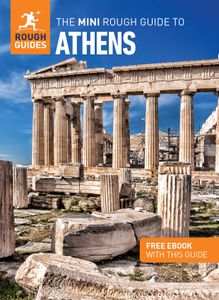

Find even more inspiration here

Planning your own trip? Prepare for your trip
Use Rough Guides' trusted partners for great rates
written by Rough Guides Editors
updated 19.05.2021
Latest from our blog
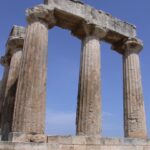
Discover the magic of the Peloponnese: Top 10 destinations to visit
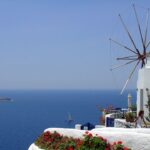
Luxury holidays in Greece – which are the best destinations
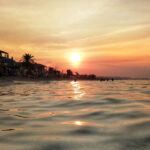
Top 10 beaches in Kassandra, Halkidiki
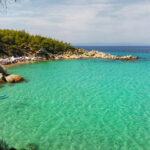
Top 10 beaches in Sithonia, Halkidiki

Beaches in Northern Greece
1. Pefkari is one of the best and most popular beach resorts on the Greek island of Thassos , with a very well-developed tourist infrastructure. Pefkari is an excellent beach, which has been repeatedly awarded with the prestigious “Blue Flag”. It is famous for its crystal clear Aegean waters and picturesque pine-covered shores. In fact, it is because of the abundance of pine trees that the resort gets its name, as the Greek word “pefkos” means “pine”.
2. Keramoti Beach is located near the village of Keramoti , 75 km. southwest of Chania and 36 km. south of Kissamos. This is quite a large beach, but in some places it is quite rocky, too. It is relatively unknown to many of the holidaymakers, with the exception, of course, to the locals. The beach creates ideal conditions for escape from the hustle and bustle of the city. Close to it you will see a waterfall falling directly into the sea. As it originates from natural mountain springs with fresh water, the sea temperature here is lower than on the neighboring beaches.
3. Tosca Beach gets its name from the name of the hotel at the foot of which it is located. It is a small sandy beach surrounded by bizarre rocks and white stones, overgrown with trees and wild bushes. Despite its wild and pristine view, Tosca is a fully organized and comfortable beach: there are sunbeds, umbrellas, showers, changing rooms and toilets all provided by the hotel.
4. The beautiful Ammolofi Beach is one of the best holiday destinations in Kavala . It is 1 km from Nea Peramos and a short drive from Nea Iraklitsa. The sandy beach of Ammolofi stretches for 3 km along the azure sea bay, but in the summer months it is difficult to find a free place here, as the beach is quite popular. This is especially true of its organized sites, and in its more remote and relatively wild parts it is much more spacious and not so crowded with tourists.
Check the best accommodation in Thessaloniki with the highest guest reviews
5. Nea Iraklitsa is one of the liveliest and most picturesque seaside resorts in the Kavala region. The small village with traditional architecture has managed to retain its special color and atmosphere, despite growing tourist demand. The resort is located 13 km from the city of Kavala and 139 km from Thessaloniki and is equally suitable for family vacations and noisy youth parties in the modern night bars of Iraklitsa. In addition, the village has many hotels for every taste and budget, good taverns, shops, excellent transport links.
6. Nea Peramos is located only 18 km from Kavala. It has a wide sandy beach and well-developed infrastructure.
7. Paralia Ofryniou is one of the most beautiful beaches in Northern Greece. It is famous for its crystal clear water and sandy beach. It is also known as Touzla and is considered to be a paradise for tourists.
8. Perigiali is a municipal beach located 2 km from the center of Kavala. It has been awarded the Blue Flag every year since 2009. It can be reached by organized public transport.
9. Kalamitsa is another magnificent beach, awarded again with the title Blue Flag. It is located in the western part of Kavala. There are a number of taverns and bars near the beach.
10. The beach of Avdira is also awarded the Blue Flag – a distinction for safety and cleanliness of the sea. The place is ideal for a family vacation with children, due to the shallow waters along the coast. The seaside resort of the same name is located near Xanthi .
- Hotels, Apartments, Accommodation in Thessaloniki, Greece
- Northern Greece – beaches, resorts and sightseeing
- All destinations for holidays and trips in Greece
- Other articles related to Northern Greece
RELATED POSTS
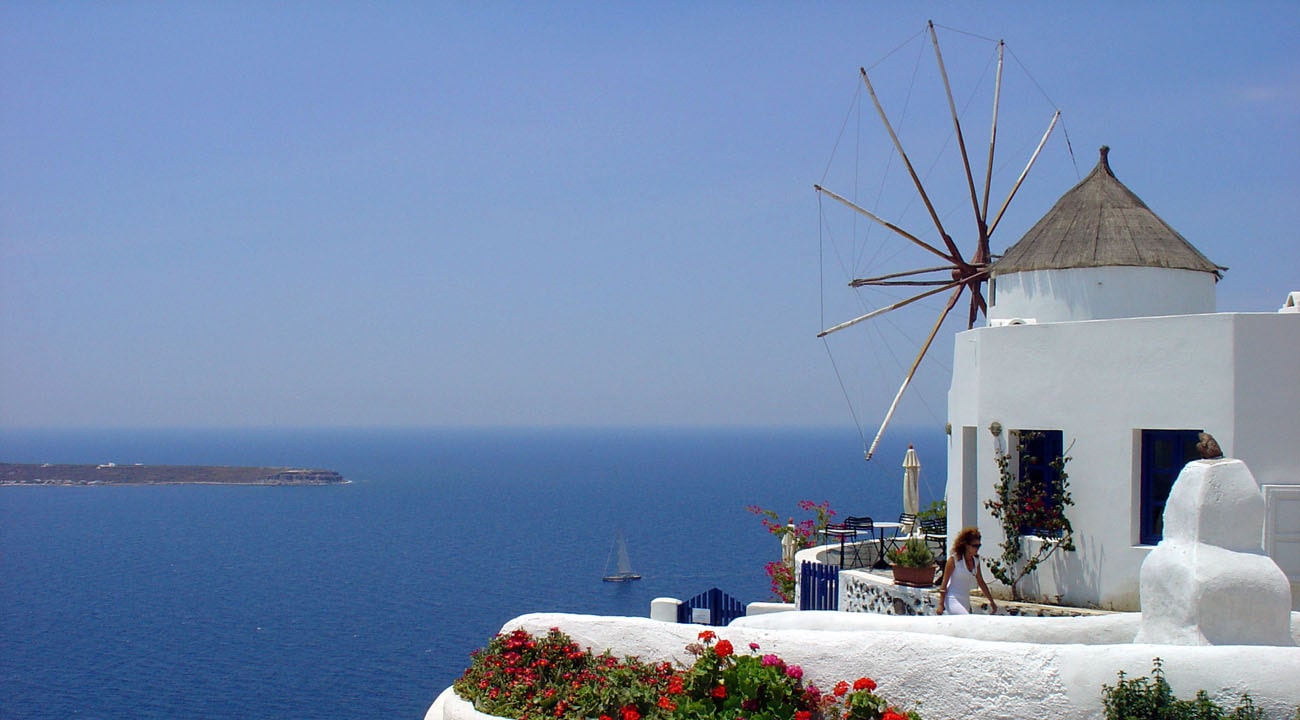
Leave a Reply: cancel reply
- Aegean Islands
- Ionian Islands
- Peloponnese
- Scuba Diving & Snorkelling
- Thessaloniki
- Archaeological Sites
- Food & Drink
- Travel With Kids
- Buses in Greece
- Driving in Greece
- Ferries in Greece
- Flying to Greece
- Taxis in Greece
- Trains in Greece
- Passports and Visas
- Health and Safety
- What to Avoid
- Travel Tips
- Hotel Reviews
- Nightlife Reviews
- Restaurant Reviews
- Destination Reviews
- Travel Agency Reviews
The Most Beautiful Towns in Northern Greece
Northern Greece has many beautiful towns that visitors can’t resist. With their natural scenery and beauty laced with historic tales and colorful folklore, the towns in Northern Greece are worthy to behold. Northern Greece is also called ‘New Lands’ they are so named because they were discovered after the end of the Balkan Wars. These are some of the most beautiful towns in the region.

Source: Link
Drama is an iconic city in northern Greece at the foot of Falakro Mountain with attractive neighborhoods and eye-catchy water sources. Its neoclassical mansions are second to none and the green areas make it a serene place for any tourist. Drama houses numerous must-see attractions ranging from the Macedonian Tomb to the Comple of the Old Schools and museums. You can’t also miss out on the Tomb cluster and Agia Varvara Park.
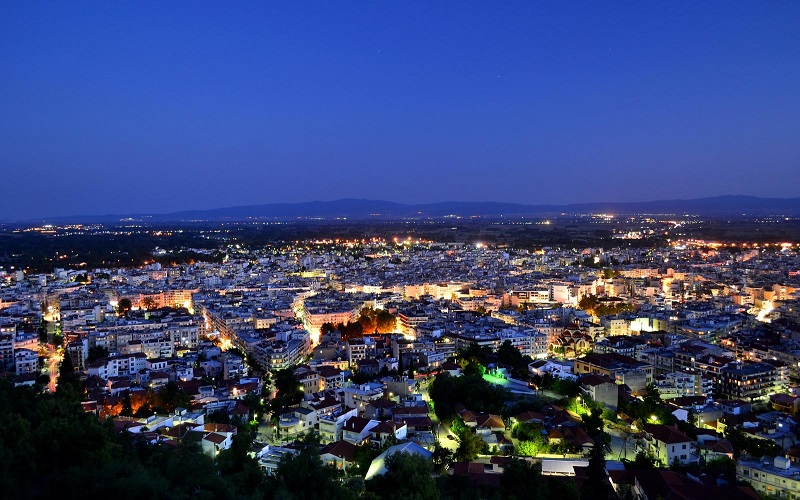
Serres comes second as the biggest city in Central Macedonia, just after Thessaloniki. This city has grown through many challenges, and is today, a home to Lailia Forest, Koulas Hill among others. Call it a place where ski enthusiasts enjoy their best times. Its historical evidence and remarkable places set it apart as a place every visitor in Greece would like to experience.
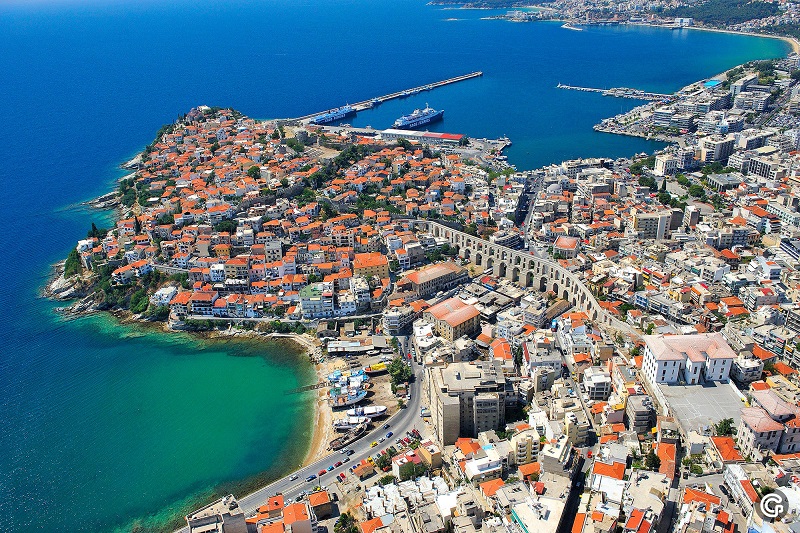
Kavala, the capital of Kavala regional unit is one of the loveliest cities you can ever visit in Greece. Kavala has two ports; the new and old ports where fishing and fishing accessories are abundant. This historical city has about 50,000 inhabitants who settle mostly in the new town, Nea Poli. It has vital monuments like the Baptistry of St Lydia, Archaeological Site of Philippi among others. This urban jungle in Greece has beautiful buildings and monuments you can’t stop admiring.
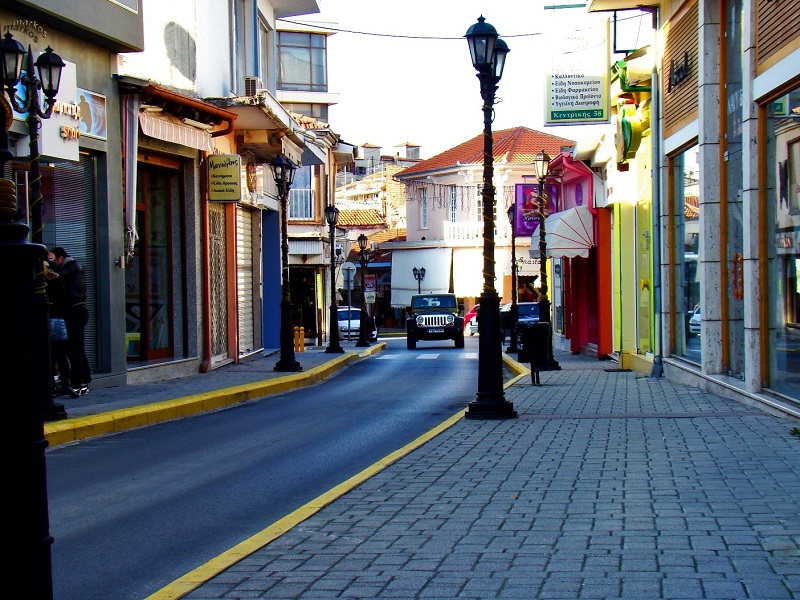
Veria is the capital of Imathia County and is situated at the foot of Mount Vermion. This picturesque town in Greece is admired as Little Jerusalem, and this foots on the many Byzantine Churches that exists there. St. Paul the Apostle visited Veria in the 1st Century Ad. Veria stood out as an iconic city of the Byzantine Empire starting from the 11th to 14th century.
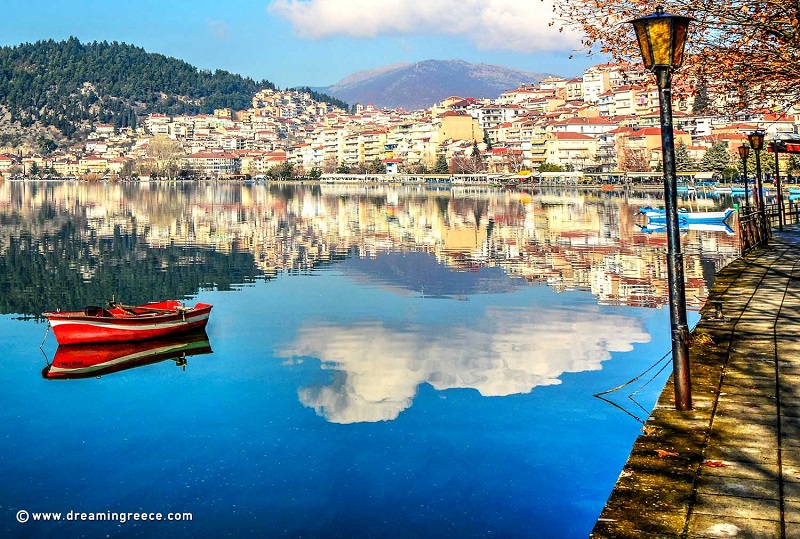
Kastoria, a town in northern Greece is the capital city of Kastoria regional unit and is famous for its domestic architecture of the Ottoman period, and numerous Byzantine churches. Its rich Byzantine history can be seen in the numerous churches, numbering about 72 and the ancient quarters of Doltso and Apozari. The city grew so famous during the 19th century, owing to the number of manufacturing brands and fur trade it housed, and it has remained an ideal choice for tourists that love spending time on a tiny land strip amidst still waters.
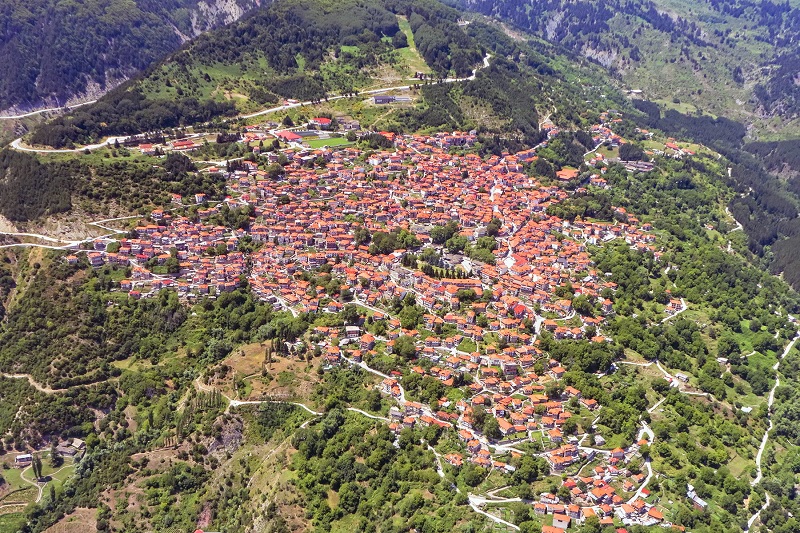
One of the picturesque towns in northern Greece, and stands out as the home to many stonemasons who were outstanding for their skill sets. Metsovo had many stonemasons who leveraged on the region’s bountiful natural resources to construct and build many fountains, structures, mansions and cobbled streets that have remained sites of attractions till date. Metsovo blends their past with the present, making this region a place to be.
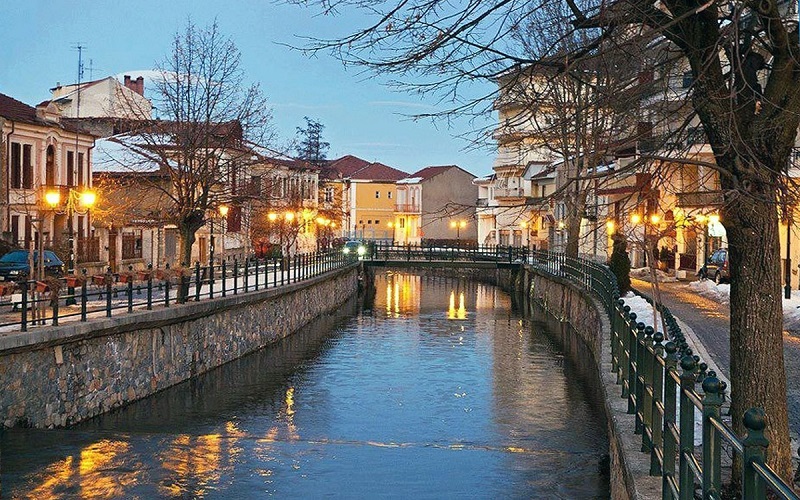
Popularly known as Where Greece Begins, Florina has Albania as its western border and Yugoslav Republic of Macedonia as its northern border. This tourist-friendly town is laced with many mountains, lakes, and rivers that display peak beauty. Florina is accessible by road and railway which began in 1893 and has taken the activities of this town up a notch.
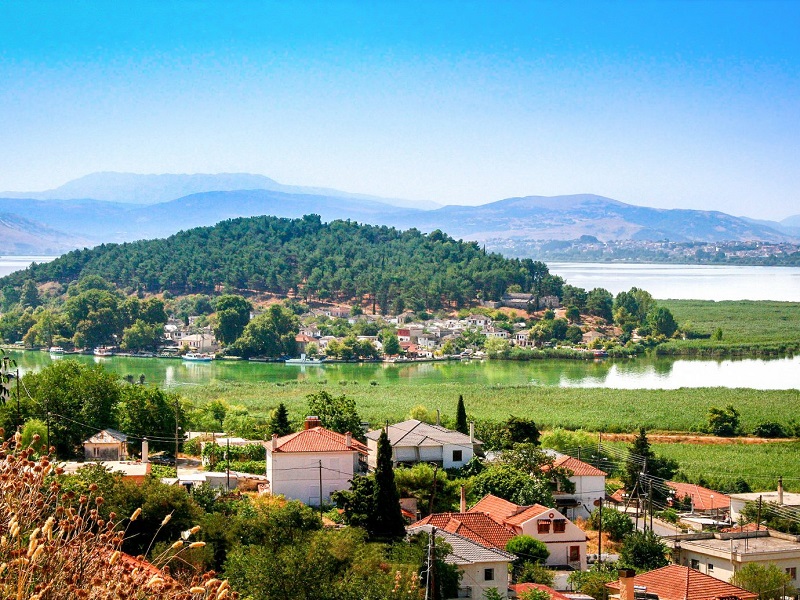
One of the atmospheric cities of northern Greece where tourists enjoy their best moments when in Greece; it’s also called Yannena. Ioannia owes its foundation to the Byzantine Emperor Justinian, though archaeological studies have shown some Hellenistic settlements. The first human presence in Ioannina dates back to about 20,000 years ago, and it has grown to become a tourist spot with its rich arts and culture.
RELATED ARTICLES MORE FROM AUTHOR
The best destinations in the ionian islands for this summer, the best destinations in central greece for this summer, what to do in psara.

Focus Greece is the ultimate tourism guide for everyone who plans to visit Greece in the near future. We combine the two things that we love most. Travel and Greece. Whether you’re a traveler, visitor, worker or local in Greece, we hope you’ll find the information we provide about the country helpful and valuable all the same.
LATEST NEWS

Getting Married in Greece – Greek Destination Planners Association Review

3 Ways to Seize the Day in 2021

Moving to Greece – All You Need to Know
+30 2311180790, [email protected], vasilissis olgas avenue 147 54645, thessaloniki.
© Copyright | FocusGreece | All rights reserved
About Sponsors Cookie Policy Privacy Policy Contact
Privacy Overview

- Turkiye (Turkey)

Veni Vidi Travel > Destinations > Greece Tours > Northern Greece Tour
Northern Greece Tour
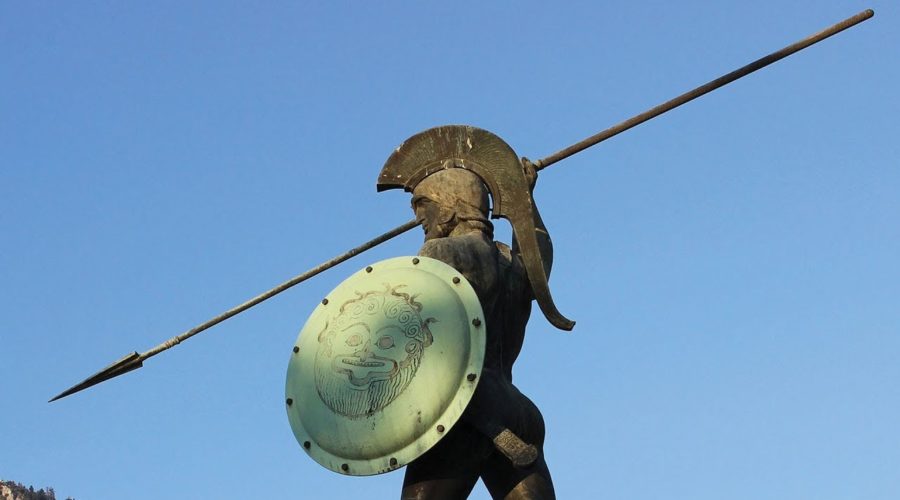
- DESTINATION: Greece
- STARTS IN | ENDS IN: Athens - Athens
- DURATION: 5 Days | 4 Nights
- DEPARTURE DATES: April to October
- THEME: Cultural | Historical
- TRAVEL STYLE: Escorted Coach Touring
Classical tour of Greece visiting Delphi, Meteora, Thessaloniki, Vergina & Thermopylae with Leonidas Statue. The best tour to explore Northern Greece. A walk through the glory times of the historical Greek battles that took place in Northern Greece. You will also discover Thessaloniki city, the capital of Northern Greece with lots of sightseeing and natural beauty of the landscape. A journey through 7000 years of Greek History and parts of a countryside you will always remember!
- Greece UNESCO classical and medieval sites tour from Athens.
- Hassle-free trip to Olympia, Delphi, Mycenae, Epidaurus, and Meteora.
- Learn about Alexander the Great in Pella.
- Visit the Thessaloniki Archaeological Museum, the sacred town of Dion and ancient tombs.
- Four nights of accommodation and some meals included.
Day 1 : Athens to Kalambaka via Delphi. Overnight Kalambaka. Day 2 : Meteora then to Thessaloniki. Overnight Thessaloniki. Day 3 : Thessaloniki. Overnight Thessaloniki. Day 4 : Edessa, Naoussa & Vergina. Overnight Thessaloniki. Day 5 : Travel to Athens via Pella
- Available April to October.
- Tour is usually bilingual, implemented in English and one additional language [French or Italian].
- We offer a complimentary pick-up / drop-off service from your hotel or other predefined spots in Athens and surrounding areas.
- Extra days/nights and additional tours/activities can be added in Athens before/after.
- E-visa information for Greece.
- Prices are per person based on twin/double/triple share accommodation.
- Children 4 years old and younger are complimentary when accompanied by a paying adult.
- An additional surcharge for hotel accommodation tax is payable on the day of your activity.
Tour Itinerary
Day 1 | athens to kalambaka via delphi.
Depart from Athens on a drive through the fertile plain of the Beotia region, pass by the towns of Thebes, Levadia and via the picturesque village of Arachova. Arrive in Delphi and visit the Archaeological Site (museum not included). Then on to Kalambaka, a small town situated at the foot of the astonishing complex of the Meteora, gigantic rocks that rise steep from the plain of Thessaly. Overnight: Kalambaka| Meal Plan: Dinner included.
DAY 2 | Meteora then to Thessaloniki
Visit the Meteora: perched on top of huge rocks, which seem to be suspended in mid-air, stand ageless Monasteries, where you can see exquisite specimens of Byzantine art. Depart from Kalambaka, through the striking plain of Thessaly and the Valley of Tempi, and admire the gigantic figure of Mount Olympos, the highest mountain in Greece and home of the 12 Gods in Greek Mythology. Arrive to Thessaloniki, the second largest and most vibrant city in Greece. Overnight: Thessaloniki| Meal Plan: Breakfast and dinner included.
* For visit of the Monastery ladies need to wear a skirt, gentlemen long trousers.
DAY 3 | Thessaloniki
In the morning visit the city that throughout the era of the Byzantine Empire was the “co-reigning” city, second in population and prestige only to Constantinople (now known as Istanbul). Visit unique monuments and feel the glorious Byzantine past in some of the oldest and most characteristic churches of the Christian world as well as in the Museum of Byzantine Culture, awarded the Council of Europe’s Museum Prize for the year 2005. Rest of the day free at leisure. Overnight: Thessaloniki| Meal Plan: Breakfast and dinner included.
DAY 4 | Edessa, Naoussa & Vergina
Depart in the morning for a unique approach to historical Macedonia. First stop in picturesque Edessa to see the town’s famous landmark, the Waterfalls. Then proceed to Naoussa, a site of exceptional beauty and importance: Aristotle’s School, the picturesque site where the great philosopher taught ‘the doctrines of morals and politics’ to Alexander the Great and the Macedonian youth. Then drive to Vergina (ancient Aigai), to visit the unique Museum, created in the Great Tumulus covering the royal tombs of Macedonia. See the astonishing findings from the tomb of King Phillip II, Alexander’s father, and feel the thrill of the greatest discovery of the 20th century. In only a few miles away is Veria (Biblical Beroea) to visit Saint Paul’s Bema, then stroll through the old Jewish neighborhood and the colorful market area. A walk in a city where past is present and all around. Return to Thessaloniki. Overnight: Thessaloniki| Meal Plan: Breakfast and dinner included.
DAY 5 | Travel to Athens via Pella
Depart for Pella, the capital of Alexander the Great. See the exquisite floor mosaics of the 4th century BC villas, in situ as well as in the new Museum. Then visit the Archaeological Park of Dion (sacred city of the Macedonians, at the foot of mountain Olympos). After the visit begin the drive south through Thessaly, Lamia, Thermopylae (see Leonidas’ Monument) and Thebes. Arrive back in Athens early evening Meals: Breakfast included.
What is Included & Excluded?
Accommodation at chosen hotel category, on half board basis. Transportation with fully Air Conditioned non-smoking deluxe coach. Professional English speaking guide assistance during the tour. Museum tickets and entrance fees where necessary. Meals where shown in the itinerary. 24×7 support during your trip.
International airfare to/from Greece. Overnight city tax. To be paid directly to the hotel. Travel insurance, visa fee, lunches, personal expenses, gratuities to the guide and driver, optional trips.
Other trips you might like
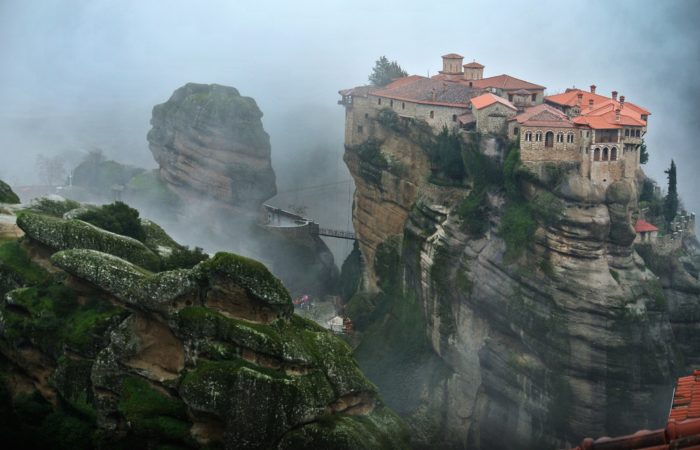
Meteora Monasteries
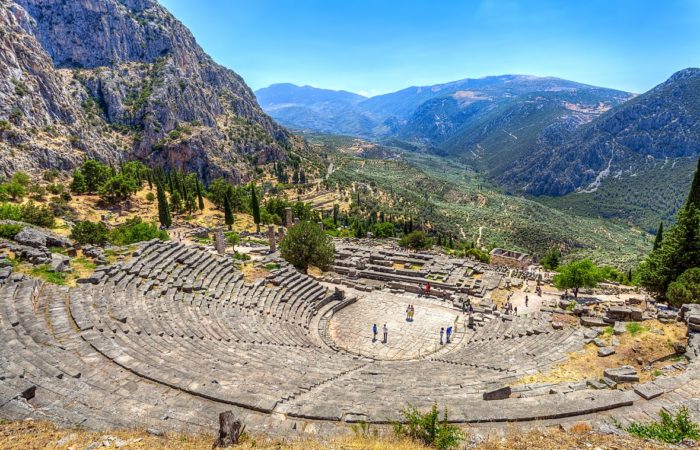
Classical Mainland Tour
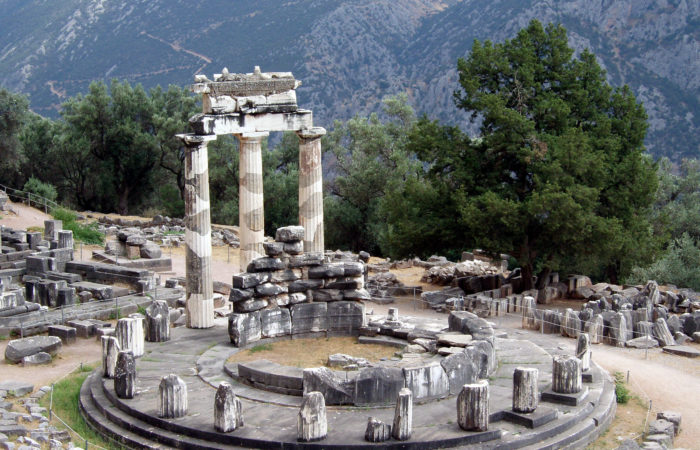
Delphi & Meteora
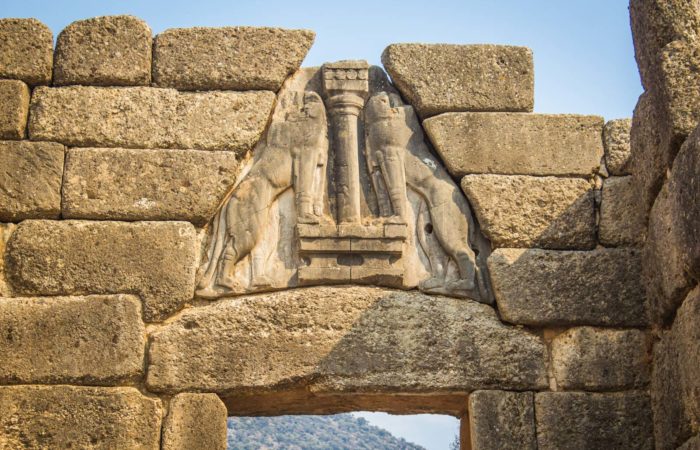
Mainland & Meteora
- Route Finder
- Route Planner
- Travel Guide
- Places to visit
- Eat & drink
- Accommodation
- Ski resorts
- Current Conditions
- Avalanche Report
- Collections
- Travel Stories
- Publications
Hiking trails in Nordgriechenland

- Show images Hide images
The 10 most beautiful hikes in Northern Greece

Discover many more routes in the Route Finder
Try planning your own routes
- Everything in Hiking
- Hiking route
- Long-Distance Hiking
Forecast for Northern Greece
Find hikes in neighboring regions, discover other hikes within northern greece, similar activities in northern greece.
- Thasos Tourism
- Thasos Hotels
- Thasos Bed and Breakfast
- Thasos Vacation Rentals
- Flights to Thasos
- Thasos Restaurants
- Things to Do in Thasos
- Thasos Travel Forum
- Thasos Photos
- All Thasos Hotels
- Thasos Hotel Deals
- Last Minute Hotels in Thasos
- Thasos Hostels
- Thasos Campgrounds
- Thasos Family Hotels
- Romantic Hotels in Thasos
- Thasos Beach Hotels
- Thasos Spa Resorts
- Thasos Business Hotels
- Thasos Luxury Hotels
- Thasos Resorts
- Thasos Green Hotels
- 5-stars Hotels in Thasos
- 4-stars Hotels in Thasos
- 3-stars Hotels in Thasos
- Thasos Hotels with Free Parking
- Thasos Hotels with Pools
- Pet Friendly Hotels in Thasos
- Boutique Hotels in Thásos
- Thásos Affordable Hotels
- Thásos Hotels with Hot Tubs
- Quiet Hotels in Thásos
- Hotels with Private Beach in Thásos
- Thásos Beach Spa Hotels
- Thásos Pet Friendly Beach Hotels
- Thásos Beach Suite Hotels
- Thásos Hot Tub Suite Hotels
- Thásos Cheap Pet Friendly Hotels
- Hotels near Golden Beach
- Hotels near Aliki Beach
- Hotels near Paradise Beach
- Hotels near Giola
- Hotels near Archaeological Museum of Thasos
- Hotels near Metalia Beach
- Hotels near Tripiti Beach
- Hotels near Psili Ammos Beach
- Hotels near Marble beach
- Hotels near Monastery of Archangel Thassos
- Hotels near Porto Vathy Beach
- Hotels near Marley Beach Lounge Bar
- Hotels near Atspas Beach
- Hotels near Kappa Art Gallery
- Hotels near (ATH) Eleftherios Venizelos Intl Airport
- Hotels near (KVA) Megas Alexandros Airport
- Beaches Turks & Caicos
- Giraffe Manor
- Ocean Casino Resort
- Moon Palace Jamaica
- The Land Of Legends Kingdom Hotel
- Hyatt Ziva Cap Cana
- The Mirage Hotel & Casino
- Mandalay Bay Resort & Casino
- Horseshoe Las Vegas
- Hotel Xcaret Mexico
- Bellagio Las Vegas
- Secrets Royal Beach Punta Cana
- Crystal Land Of Paradise
- Secrets The Vine Cancun
- Park MGM Las Vegas
- Popular All-Inclusive Resorts
- Popular Beach Resorts
- Popular Family Resorts
- Popular All-Inclusive Hotels
- Popular Hotels With Waterparks
- Popular Honeymoon Resorts
- Popular Luxury Resorts
- Popular All-Inclusive Family Resorts
- Popular Golf Resorts
- Popular Spa Resorts
- Popular Cheap Resorts
- All things to do in Thasos
- Archaelogical Site of Alyki
- Paradise Beach
- The Ancient Agora
- Archaeological Museum of Thasos
- La Scala Beach
- Marble beach
- Monastery of Panagia
- Rosogkremos Beach
- Aliki Beach
- Church of Panagia
- Psili Ammos Beach
- Limenas Beach
- Tripiti Beach
- Makriammos Beach
- Beach & Pool Clubs in Thasos
- Beaches in Thasos
- Horseback Riding Tours in Thasos
- Gear Rentals in Thasos
- Dolphin & Whale Watching in Thasos
- Speed Boats Tours in Thasos
- Parasailing & Paragliding in Thasos
- Scuba & Snorkeling in Thasos
- Waterskiing & Jetskiing in Thasos
- 4WD, ATV & Off-Road Tours in Thasos
- Adrenaline & Extreme Tours in Thasos
- Hiking & Camping Tours in Thasos
- Nature & Wildlife Tours in Thasos
- Stand-Up Paddleboarding in Thasos
- Canyoning & Rappelling Tours in Thasos
- Ancient Ruins in Thasos
- Architectural Buildings in Thasos
- Castles in Thasos
- Cemeteries in Thasos
- Sacred & Religious Sites in Thasos
- Fountains in Thasos
- Historic Sites in Thasos
- Monuments & Statues in Thasos
- Scenic Walking Areas in Thasos
- Points of Interest & Landmarks in Thasos
- Churches & Cathedrals in Thasos
- Marinas in Thasos
- Mountains in Thasos
- Waterfalls in Thasos
- Bodies of Water in Thasos
- Factory Tours in Thasos
- Bus Tours in Thasos
- Food Tours in Thasos
- City Tours in Thasos
- Motorcycle Tours in Thasos
- Self-Guided Tours & Rentals in Thasos
- Multi-day Tours in Thasos
- Boat Tours in Thasos
- Water Sports in Thasos
- Boat Rentals in Thasos
- Kayaking & Canoeing in Thasos
- Fishing Charters & Tours in Thasos
- Art Galleries in Thasos
- Shopping Malls in Thasos
- Gift & Specialty Shops in Thasos
- Art Museums in Thasos
- History Museums in Thasos
- Specialty Museums in Thasos
- Bars & Clubs in Thasos
- Karaoke Bars in Thasos
- Coffeehouses in Thasos
- Ferries in Thasos
- Taxis & Shuttles in Thasos
- Game & Entertainment Centers in Thasos
- Horse Tracks in Thasos
- Paint & Pottery Studios in Thasos
- Wine Tours & Tastings in Thasos
- Health/Fitness Clubs & Gyms in Thasos
- Day Trips in Thasos
- Things to do near Filia Hotel and Apartments
- Things to do near Philoxenia Inn
- Monkeyland and Plantation Safari Tour from Punta Cana
- Sintra : Pena Park and Palace Entrance Tickets
- Cliffs of Moher Tour Including Wild Atlantic Way and Galway City from Dublin
- RuPaul's Drag Race LIVE! at the Flamingo Las Vegas
- El Yunque Natural Waterslide and Rainforest Hike from San Juan
- Land Of Legends Night Show from Side in Turkey
- Paradise Beach Exclusive All-Inclusive Day Pass
- Budapest Evening Sightseeing Cruise and Unlimited Proseccos
- Chicago Architecture River Cruise
- Ark Encounter
- Surfside Beach
- Emerald Coast
- Campuhan Ridge Walk
- The BEACH at Clayton County International Park
- Niagara Falls Canada
- Full House House
- GreenLeaders
- Things to Do
- Restaurants
- Vacation Rentals
- Travel Stories
- Rental Cars
- Add a Place
- Travel Forum
- Travelers' Choice
- Help Center
THE 10 BEST Things to Do Near Visit North Greece
- Europe
- Greece
- Northeast Aegean Islands
- Thasos
- Things to Do in Thasos
- Things to do near Visit North Greece
Things to Do near Visit North Greece

A legendary Greek road trip through the stunning Peloponnese
Oct 1, 2020 • 6 min read
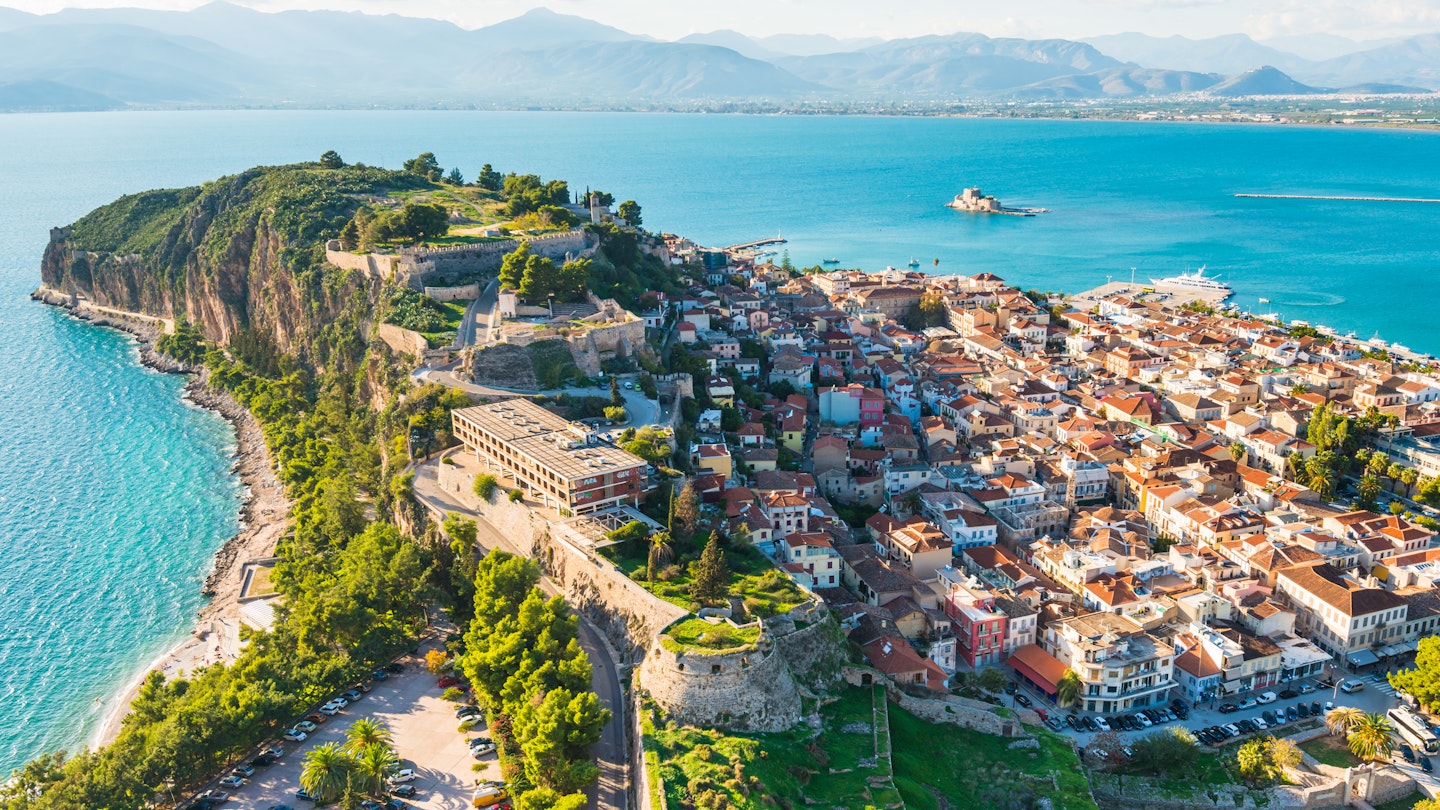
With its increible scenic landscapes and ancient sites, Greece's Peloponnese is the perfect destination for a road trip © Olga Kot Photo / Shutterstock
No other part of Greece combines stupendous mountain scenery and scenic hikes with deserted, pristine beaches and an incredible wealth of ancient sites like the Peloponnese . After all, this is where gods and heroes were said to walk the earth and the world’s greatest sporting event was born. Add to that terrific winery-hopping, boutique accommodation in historic stone towers and the unfailing hospitality of the locals, and you have the recipe for a memorable road trip.
Editor's note: Please check the latest travel restrictions before planning any trip and always follow government advice.
Tour the Nemean Wine Route
The ideal place to start your Peloponnese road trip is the picturesque Venetian seaside town of Nafplio , set against the backdrop of a steep mountain topped with a fortress. An easy 45km (28mi) drive north takes you to Nemea , one of the best places in Greece to get acquainted with local grape varieties. Greeks have been making (and drinking) wine for millennia; their ancestors even had a god, Dionysus, devoted to the tipple. While Greek wine is not as well known as its French or Italian counterparts, it’s becoming more prominent on the world stage.
The Nemean Wine Route takes you past a cluster of excellent wineries nestled in the rolling hills southwest of Corinth . Half a dozen of these organize wine tastings for visitors – many free, some by appointment. Domains Piropoulos has been cultivating grapes in its vineyards since 1860; the owner pioneers organic viticulture and wines to try here include Agiorgitiko, Syrah and the fruity Moschofilero.
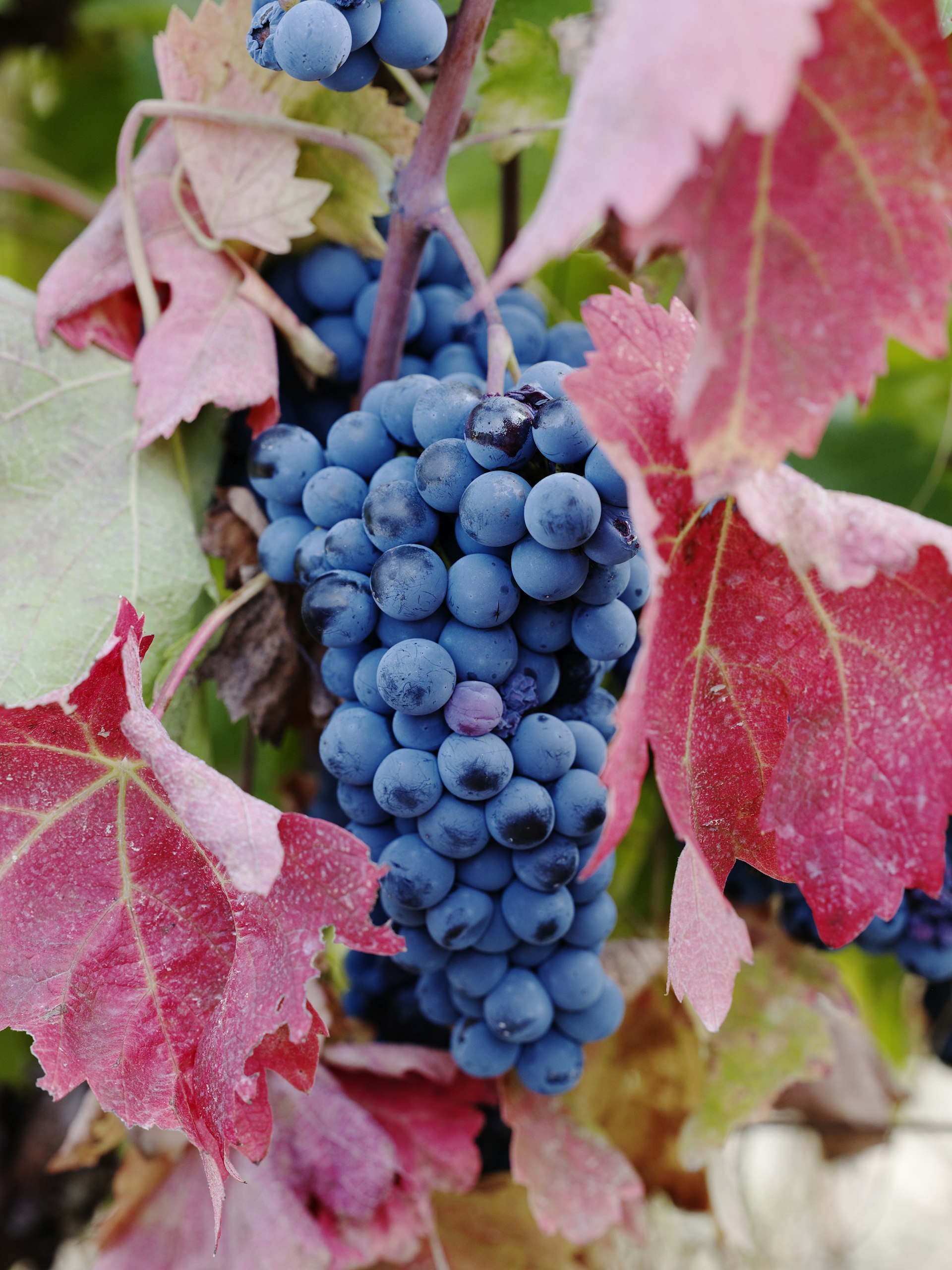
Gaia Wines specializes in AOC (appellation d'origine contrôlée), unfiltered wines; its signature vintage is the dry white Thalassitis, made from the Assyrtiko grape. For the best of the region’s reds head for the Lafkiotis Winery ; their Moschofilero white is pretty terrific too.
Nafplio has perhaps the best choice of accommodation in the region, ranging from simple but comfortable guesthouses, such as Pension Marianna and Nafplion 1841 , to stylish boutique hotels inside former mansions like Aetoma or Amymone .
Detour: Ancient Mycenae
Before reaching Nemea, take Route 7 south to Ancient Mycenae , the home of mythical Agamemnon who led the Greek heroes during the Trojan War. Walk up to Agamemnon’s Palace at the heart of the fortified ruins, admiring the Cyclopean stonework of the immense Lion Gate on the way. Don’t miss the Treasury of Atreus – an immense tholos (beehive-shaped tomb) a short walk from the main site.
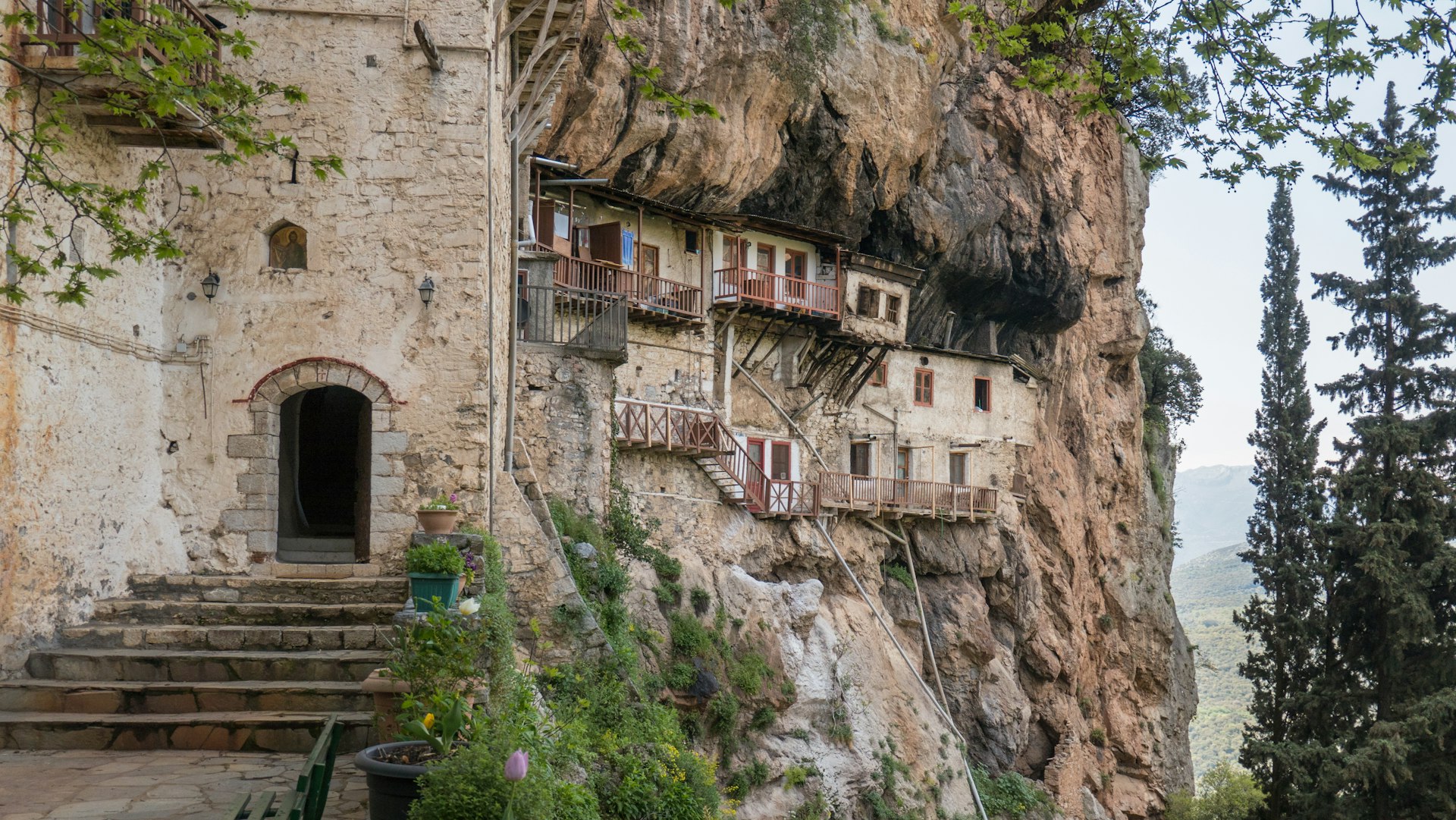
Hike the Lousios Gorge
East of Tripoli and the E65, a narrow mountain road snakes its way past medieval villages, high above Mt Menalon’s most precipitous ravine – the Lousios Gorge. The Mylaon River runs through the lush valley at the bottom of the gorge, paralleling the most popular section of the 72.5km (45mi) Menalon Trail which connects the villages of Stemnitsa and Dimitsana.
You can descend into the gorge near Stemnitsa, to admire the Prodromou Monastery which clings to the rock face, and ascend on the opposite side, taking in the ruins of the Old Philosophou Monastery. Or begin your hike from Dimitsana, walking a mixture of footpaths, wooded trails and dirt roads through forests, past Byzantine fortress ruins and stone houses, over a mountain pass and through open countryside.
The villages of Stemnitsa and Dimitsana make the best hiking bases, with their concentration of tavernas serving typical mountain fare (game casseroles, bean soup) and comfortable guesthouses. Mpelleiko in Stemnitsa is a 17th-century converted house where you can sleep in the former “donkey basement” and feast on organic produce, while Dimitsana’s Amanites has elegant rooms with balconies high above the gorge.
Detour: Ancient Olympia
From Dimitsana, take the scenic Route 74 which switchbacks through the mountains towards Ancient Olympia . Wander around the tree-shaded remains of the original Olympic Games site, place your feet on the starting line of the Olympic stadium and see where the Olympic flame is lit every four years. Find sacrificial cauldrons and marble statues from the site at the nearby archaeological museum.
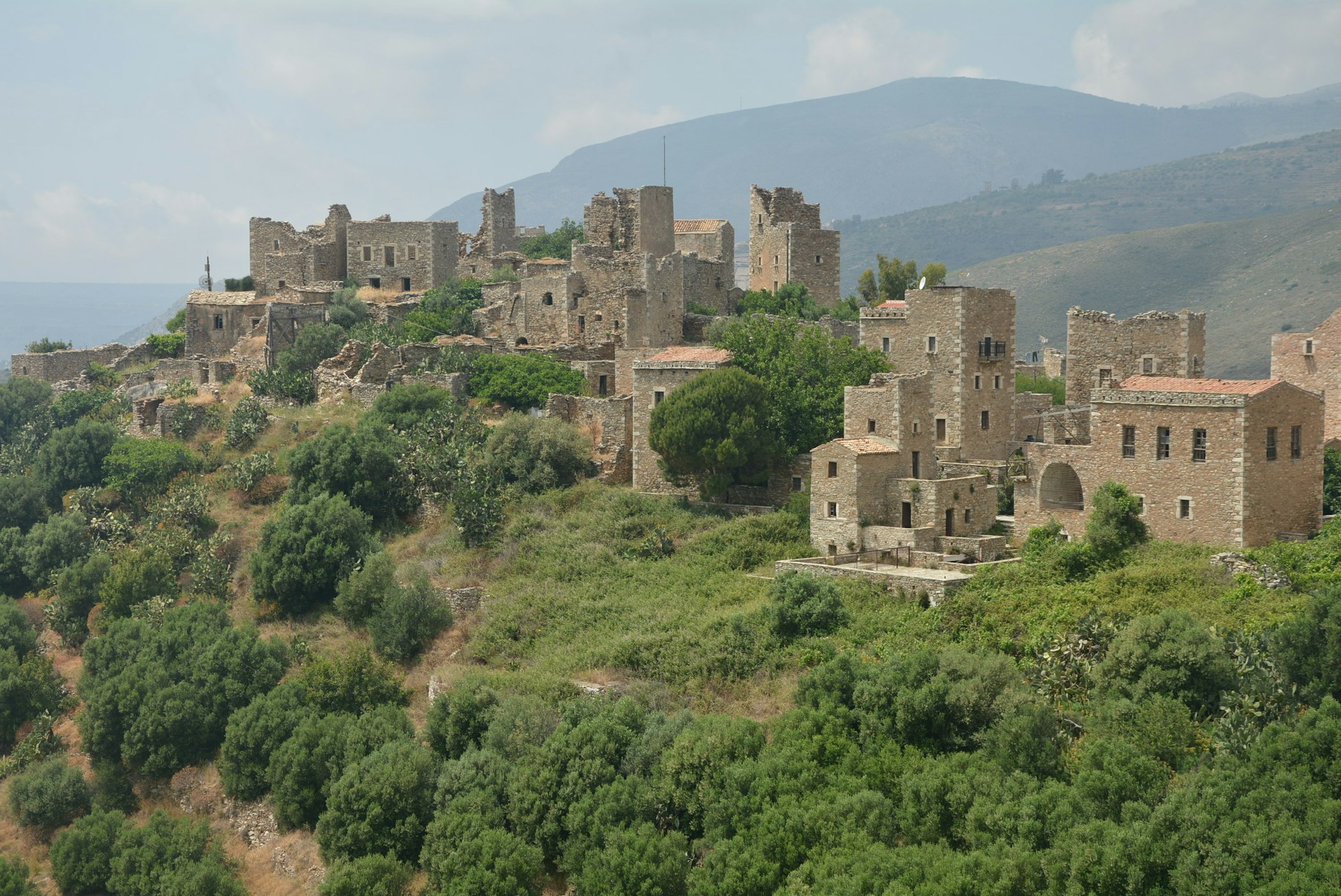
Explore historic Mani
From Tripoli the E961 speeds south, past the snow-tipped Taÿgetos mountain range and through Sparta , before cutting west across the Mani – a wild, rugged region whose inhabitants were known for their fierce independence and murderous feuds for centuries. Take the serpentine road south of Areopoli, and you pass by the foothills of barren, forbidding-looking mountains and through silent villages bristling with stone towers – each a fortified family residence.
The most impressive towers stand in Kita and Nomia on the west coast, in Vathia, perched on a rocky spur, and in Mountanistika, reachable via an impossibly narrow road with a sheer drop to one side that requires nerves of steel to drive. At the tip of the peninsula, at Kokinogia, leave the car and have a dip in the aquamarine waters, or take the coast-hugging footpath to the remote lighthouse – the southernmost point of mainland Greece.
A number of historic stone towers have been converted into unique, luxurious lodgings. Just south of Areopoli, Antares is a lovingly restored family home with centuries-old vaulted ceilings and breakfast ingredients hand-picked from local suppliers. Citta dei Nicliani in Kita has engravings on its stone walls, heavy wooden beams and sumptuous beds. Tainaron Blue , a lonesome stone tower en route from Gerolimenas to Porto Kagio, is a luxurious retreat with clifftop views from its infinity pool, three unadorned stone rooms and gourmet Maniot cuisine.
Detour: Mystras
Before taking the E961 from Sparta south to the Mani, turn off towards Mystras, once a stronghold of the Byzantine Empire, spread over a steep mountainside. Spend half a day ducking into ruined palaces and intact churches, hiking to the mountaintop fortress and visiting a working convent. Stay the night at the gorgeous Mazaraki Guesthouse in the village of Pikoulianika, where the organic breakfast is delivered to your door in a basket.
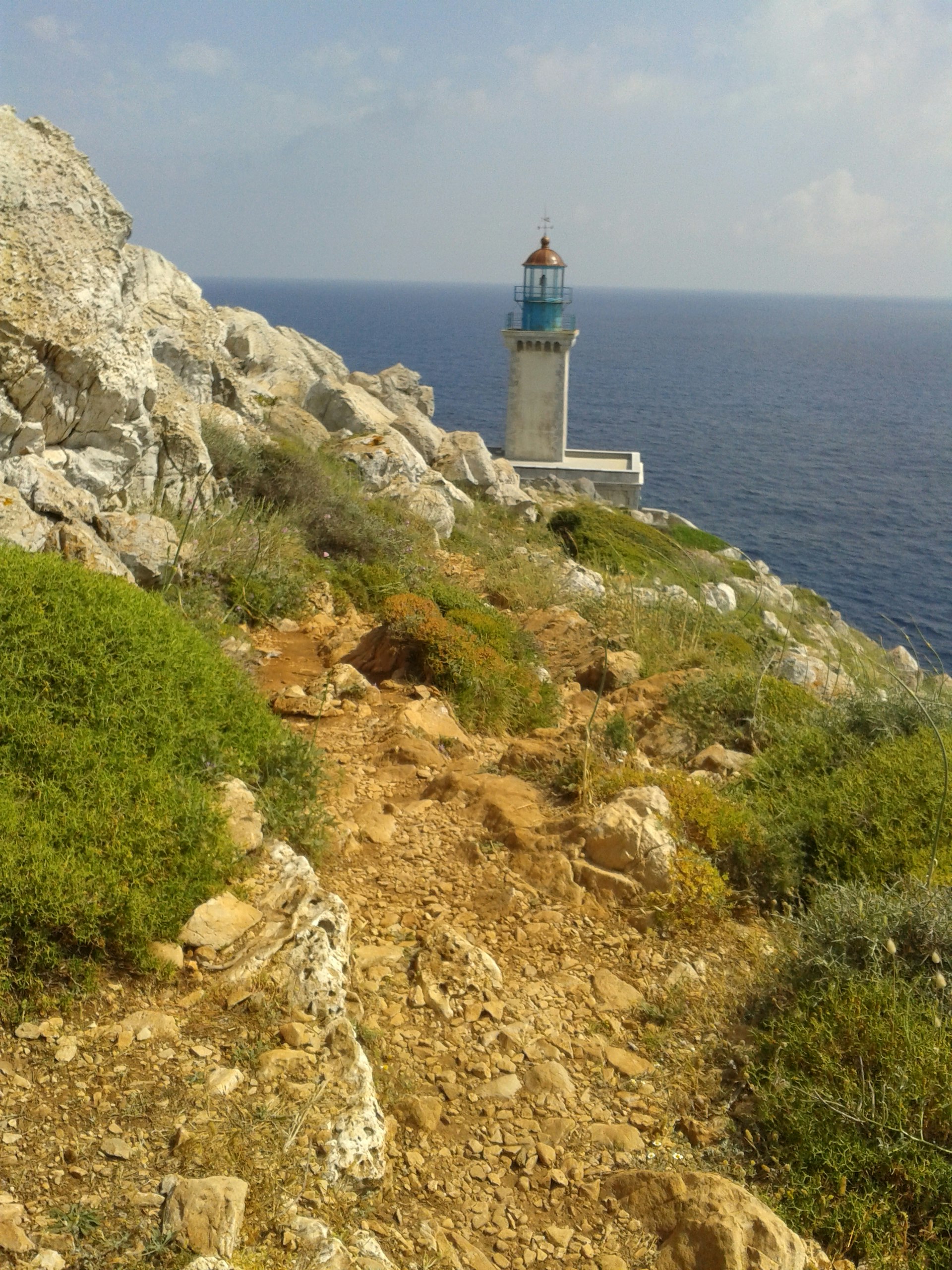
Road trip tips
A road trip in the Peloponnese is generally hassle-free: there’s signposting in English, gas is inexpensive and the roads are decent and uncrowded. However, always allow more time for driving than you think you’ll need. The only road you’ll be able to cruise along at some speed is the E65 multi-lane highway which traverses the Peloponnese en route from Athens to Kalamata via Tripoli.
Traffic is generally light, but local drivers have a tendency to tailgate at speed and underuse their indicators. Take it easy when driving the winding roads in the countryside and in the mountains. There are plenty of scenic stops where you’ll want to pull over, but watch out for locals speeding around hairpin bends and cutting across your lane.
You might also like:
Greece's stunning natural wonders 10 best beaches in Greece Dreaming of owning a home in the Mediterranean? Here's what you need to know
This article was originally published in September 2015 and updated in October 2020.
This article was first published September 2015 and updated October 2020
Explore related stories

Mar 22, 2024 • 7 min read
Explore world-class ancient ruins, bathe in island sunsets and enjoy incredible food – here are the best things to do in Greece.
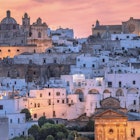
Mar 15, 2024 • 10 min read

Mar 14, 2024 • 16 min read

Mar 6, 2024 • 8 min read
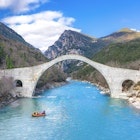
Mar 4, 2024 • 6 min read

Feb 27, 2024 • 6 min read

Feb 26, 2024 • 8 min read

Feb 19, 2024 • 7 min read

Feb 15, 2024 • 4 min read
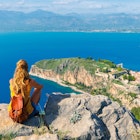
Feb 10, 2024 • 7 min read
The Ultimate 2-Week Greece Road Trip Itinerary
Experience Greece in all its glory by driving around the country in 2 weeks with this road trip itinerary. 7 stops, endless fun.
While many people think of Greece as the ultimate island destination, with Mykonos and Santorini headlining honeymoon itineraries , it’s also a fantastic road trip destination. The mainland of Greece, from Athens to Thessaloniki via Meteora, Delphi, or the Peloponnese, offers up an amazing array of unique stops.

Below is the ultimate 2-week Greece road trip itinerary, beginning with the mainland and ending on the islands. Begin your ultimate Greece road trip in Thessaloniki. You can fly into here from most cities across Europe or connect in Athens.
1. Thessaloniki

Thessaloniki, in the north, is Greece’s second-largest city and the capital of the Greek region of Macedonia. It was founded as a Roman city in the 1st century BCE by Cassander of Macedon. Under the Byzantines, the city flourished and was the second largest and wealthiest city in the empire.
Today, Thessaloniki is considered Greece’s cultural capital, with yearly art and film festivals. It also features numerous Roman and Byzantine ruins, plenty of street art, and has been named as one of the best mid-size European cities.
What to see and do in Thessaloniki
- Ano Poli: Ano Poli, or upper town, is part of the original city layout. In 1917, a large fire destroyed much of Thessaloniki, and the city was rebuilt according to a Byzantine city plan. Ano Poli was not destroyed, however, and remains the most traditional Greek and Ottoman part of the city.
- Paleochristian and Byzantine monuments: Thessaloniki has many paleochristian and Byzantine monuments, because of its importance as a Byzantine administrative center. The most well known is Hagios Demitrios, or the Church of Saint Demetrius, which was damaged by the fire in 1917 and later by World War II bombing. Hagios Demetrios is the largest basilica in Greece and has since been rebuilt.
- Street Art: Thessaloniki is a vibrant second city and is popular with street artists and street photographers. In 2017, it hosted its first street art festival, drawing many artists and musicians; since then the city has been considered the cultural capital of Greece and is one of Europe’s best mid-sized cities.
Insider’s tip: To make the most of this road trip itinerary, rent your car after exploring the city and before moving on to the next destination on this itinerary.
2. Halkidiki
From Thessaloniki, drive around Halkidiki, which comprises three peninsulas on the northeastern coast. It is the birthplace of Aristotle.

The three peninsulas of Halkidiki are known as Kassandra, Sithonia, and Agion Oros :
- Kassandra is the furthest south peninsula, closest to Thessaloniki, where you will find the largest towns and most developed infrastructure.
- Sithonia is less developed and perfect for outdoor lovers.
- And Agion Oros , the northernmost peninsula, is home to Mount Athos, a monastic state which only men are allowed to enter.

Halkidiki is also known for its beaches, thermal spas, mountain villages, and the monastery of Mount Athos.

Top 3 things to do in Halkidiki
- Halkidiki Beaches: You must visit the beaches of Halkidiki! Some are made up of rocky coves, while others are much more developed and have shops or bars along the beach. Some of the most popular beaches include Kavourotripes, Alykes on Ammouliani Island, Karydi in Vourvourou, and Possidi.
- Mount Athos: While you can’t visit Mount Athos by land unless you are an Orthodox Christian male with a special permit, anyone can see the monastery from the sea. Boat cruises depart daily from Ouranoupoli or Ormos Panagias and half-day tours take 3-4 hours.
- Visit the Thermal Spa: Halkidiki is known for its healing waters, in particular, the spa at Agia Paraskevi, on a cliff overlooking the sea. It has been said that this thermal spa can heal arthritis, skin inflammations, and other chronic disorders. They also offer hammams, hydromassage treatments, saunas, and swimming pools.
From Halkidiki, drive south to Meteora. Meteora is located in the Plains of Thessaly and is home to six Eastern Orthodox monasteries, all built on top of natural sandstone pillars.

The earliest monasteries were built around the 14th century, though there is evidence for human settlement as far back as 50,000 years ago and evidence of monks living there from the 9th century. The original access to the 24 monasteries was only by ropes or ladders that could be removed, for security.
Today, it is easier to visit the monasteries , as there are now staircases built into the rock. There are only 6 monasteries remaining.
What you cannot miss in Meteora
- Monastery of the Holy Trinity : Built in 1475, this is one of the six remaining monasteries. It is inhabited by just four monks and is located atop the cliffs.
- Old Hermitages : Many monasteries were destroyed by the Ottomans or fell into ruin. However, what many people don’t know is that prior to the monasteries there were small hermitages that housed the early monks. Some of the more well known include the Doupiani and Badovas hermitages. You can visit these with a tour guide.
- The Pindos Mountains : Explore the Pindos Mountain range, home to not just the monasteries but also small villages and flowing streams.

After leaving Meteora, drive to Delphi, home to the ancient Oracle and today an incredibly impressive set of ruins. Once considered the center of the world, and marked with a stone called the omphalos (navel), Delphi is notable for its importance to Ancient Greek city-states and there are many monuments built by the various governments. For this reason, it is a UNESCO World Heritage Site.
What is Delphi famous for
- Temple of Apollo : The Temple dedicated to Apollo at Delphi was located at the heart of the sanctuary. The ruins we can see today are actually the ruins of the third temple built in the 4th century BCE. This temple was damaged by the Romans and later destroyed by Christian zealots in an effort to stamp out paganism.
- Treasury of Athens : The Treasury of Athens was built at Delphi to commemorate their win at the Battle of Marathon in 490 BCE. It is located directly below the Temple of Apollo on the Sacred Way, meaning that all who went to the temple passed it. Its location signified the importance of the city-state of Athens. A treasury would have held votives and offerings from the city-state to the god, and there were other treasuries at Delphi and other sites around Greece.
- Archaeological Museum of Delphi : The Archaeological Museum of Delphi is one of the most visited museums in Greece. It is located outside the sanctuary. Some of the most important artifacts in the museum include the frieze of the Siphnian Treasury, the Charioteer of Delphi, and the Metopes of the Treasury of the Athenians.

Delphi is only a few hours north of Athens, which is your next stop. The capital of Greece is one of the greatest capital cities in history. Early settlement dates back to 1400 BCE, while evidence of humans dates back to between the 11th and 7th century BCE.
Today it is a sprawling city that blends the ancient and modern and is a must-see on your ultimate Greece road trip.
Insider’s tip: Return your rental car here before exploring, you can explore the city using its public transport network and on foot.
Athens highlights
- Acropolis and Acropolis Museum : the Athens Acropolis is one of the most prominent symbols of Antiquity. It sits on a rocky outcrop above the city and is home to a number of building ruins. The most important structure atop the Acropolis is the Parthenon, but there are nearly 20 other buildings. The entrance to the Acropolis is through the Propylaea, a monumental gateway that marks the end of the Sacred Way. Other buildings or structures here include the Theatre of Dionysus, the Erectheum, and the Temple of Athena Nike.
- Ancient Agora : the Ancient Agora is the best-known example of a classical agora. It is located northwest of the Acropolis. If the Acropolis was the spiritual heart of the city, the agora was considered the commercial heart of the city. It was here that the merchants met, some people lived, and where assemblies would have taken place.
- Temple of Zeus : The Temple of Zeus is a temple in the center of modern Athens. It was begun in the 6th century BCE but was not completed until the 2nd century AD. The temple almost immediately fell into disuse but while it was active it was the largest temple in the Roman Empire. Today just 16 columns remain yet it is one of the most important ruins in the city.
- Explore Plaka : walking through Plaka is surely an experience you can’t miss. This is the oldest neighborhood in Athens. The streets are narrow and the labyrinth is home to tourist shops, cafes, tavernas, galleries, and more.
- Benaki Museum : The Benaki Museum, located within a historic mansion in Athens, houses Greek works of art from prehistoric to modern time. While its focus spans Greek culture over its history, the Benaki also has an extensive Asian art collection and houses a restoration and conservation workshop.
6. Mykonos island

From Piraeus, the port of Athens, take a ferry to Mykonos. This takes around 2-5 hours depending on the ferry but can take up to 24 hours if you take a slow boat.
Mykonos is quite possibly the most famous of the Aegean islands and a paradise for everyone from celebrities to backpackers. Hora is a vibrant town where you can spend both time and money in the many designer boutiques or hip restaurants.
The island of Mykonos is well known for its sunsets and parties, but it has a quieter side too . You can rent a car or scooter to get around Mykonos, and this can be done on arrival.
Best things to do in Mykonos
- Alefkantra aka Little Venice : this 18th-century district in Hora transports you back to Italy, with its Italianate mansions and delightful balconies overlooking the sea. Mykonos’ famous windmills are just above you. Alefkantra is where the sea captains of the 18th and 19th centuries lived and the neighborhood remains a charming, quiet, residential area.
- Ano Mera : Mykonos’ second city is located in the center of the island and is much quieter than its sister Hora. Go for the beautiful 16th century Panayia Tourliani monastery, known for its wood-carved iconostasis.
- Ftelia : history buffs must visit this Neolithic settlement just north of Ano Mera. It also has a 14th century BCE Mycenaean tomb.
- Beaches of Mykonos : Mykonos has many wonderful beaches. If you have a car or scooter you can explore at your leisure. Some of the beaches are organized with umbrellas, chairs, etc while others are unorganized and you should take what you need with you.
Editor’s tip: Once you are done with the Aegean sea, why not keep exploring the Mediterranean with an Adriatic sailing adventure ? There are over a thousand Croatian islands waiting for you!
7. Santorini

Take the ferry to Santorini, one of Greece’s most well-known and popular islands. This will take around two hours. The glimmering whitewashed buildings of Fira (Thera), Oia, and Imerovigli look out over the sea and provide incredible – and very romantic – sunset views.
Spend a few days here to explore the island’s east coast, visit the many wineries, and enjoy the rich history and landscape. To get around the island, rent a car in Fira.
Before heading back, if you have extra time, consider taking an Ios day trip – easily accessible by ferry from Santorini year-round- to explore its scenic beauty
What to do and where to go in Santorini

- Hike the trail between Fira and Oia : The hiking trail between Fira and Oia is a popular one, especially around sunset (end in Oia for the best views) but it also helps you work off all that great Greek food – one of the best cuisines in the world – and wine! The trail winds along the caldera rim and has epic views of the sea.
- Take a volcano cruise : Santorini is known for its volcanic activity – after all, the eruption of Thera is the eruption that ended the Minoan civilization on Crete. The best way to experience the volcanic activity in Santorini is to take a cruise out to the smaller volcanoes in the caldera for a hike up the volcano and a swim in the hot springs.
- Visit Akrotiri : Akrotiri is a Bronze Age Minoan settlement, with evidence of habitation into the 5th millennium BCE. It was destroyed in the 16th century BCE eruption that wiped out the Minoans. Akrotiri was first excavated in 1867 although modern excavations in the late 1960s revealed the extent of the site. Akrotiri is considered the source of the Atlantis myth.
Greece is a great road trip destination, even on the islands.

- If you can include the amazing mainland sites like Delphi, Meteora, and Athens, you really get a great sense of the history and culture of Greece.
- The islands add yet another dimension – they have extensive history and influences but also showcase the beautiful modern way of life.
Using this ultimate Greek road trip itinerary, you will experience the best of both worlds. Enjoy!

Chrysoula is a travel blogger born and raised in Athens with a professional background in Tourism and Marketing. Through the pages of Athens and Beyond , she wants to help visitors make the most of their trip to Athens and show them how to navigate the city like an insider.

10 things I wish tourists knew before visiting Greece, from a local
- I'm from Athens, and I've seen plenty of tourists make mistakes while traveling to Greece .
- Pace yourself if you're planning on staying out at the bars and clubs all night.
- It's worth it to do some research on smaller islands and local cuisine before your trip.

Thanks to its ancient ruins, picturesque beaches, and incredible food, Greece is one of the top tourist destinations. In 2023, over 32 million people visited.
I was born in Athens and currently split my years living between the US and Greece , so I've spent plenty of time in the beautiful European country.
Here are 10 things I think tourists should know before visiting.
There’s so much more to see in Greece than the popular islands.
It seems like everyone visits Mykonos, Santorini, and maybe Paros, but Greece has over 220 inhabitable islands. Plus, most of them are more budget-friendly than the popular spots.
I recommend looking into places like Kimolos, Astypalaia, Paxoi (also known as Paxos and Paxi), or Folegandros.
The Greek mainland is also beautiful. There's a lot to see there, from UNESCO sites at Delphi and Meteora and the turquoise waters of the Peloponnese to the stunning mountains and villages of Epirus.
Athens is more than the Acropolis.
Athens has great nightlife , restaurants, museums, and cool neighborhoods like Plaka, Exarcheia, Psyrri, and Pangrati.
Tourists who just swing by to check the Acropolis off their list are missing out. I've always found it to be one of the liveliest cities in the world.
You don’t need to tip 20%.
Greek servers generally rely on hourly wages, so there isn't the same tipping culture as the US .
I normally just round up the bill or leave a couple of Euros on the table as a tip — unless I had exceptional service or dined at a more formal (and tourist-oriented) restaurant.
Pace yourself when drinking alcohol.
A lot of travelers take advantage of Greece's lax attitude toward alcohol restrictions. Coupled with the fact that Greek bars and clubs close pretty late (like 4 a.m. late), some tourists get sloppy.
Locals usually intersperse drinks with food and water so they can last the whole night, and I recommend tourists do the same.
Slow down and take Sundays off.
Greeks have a pretty relaxed relationship with time — people often arrive late and stores may open half an hour after they said they would.
Service in Greece can seem slow to people from more fast-paced places, especially on the quieter islands . A lot of stores and supermarkets are also closed on Sundays, even in Athens.
I know this can be annoying at times, but I recommend just enjoying the slower pace of life.
Don’t try to visit too many islands on one trip.
So many people ask me if they can fit four or five islands into a seven-day trip, and I never recommend it. Take your time and enjoy each destination for at least a couple of days.
Half the joy of the Greek islands is getting to destress. If you're hopping from ferry to ferry and running around to cover the highlights, you'll miss out on the best parts of the country.
Be sensitive about natural disasters.
I never thought I'd have to say this, but I have seen multiple tourists in the last few years posting about how "pretty" the skies or sunsets are thanks to the glow from raging wildfires .
At a time when a lot of Greek people are wondering if their houses are still standing or their loved ones have gotten to safety, it's a pretty insensitive thing to do.
Don't skip out on experiencing a traditional taverna.
Athens and other popular Greek destinations now have a lot of upscale restaurants with cuisines from all over the world. But make sure to eat in a traditional taverna at least once.
A taverna is a casual restaurant with family-style dining. Diners can spend hours in them chatting with friends while sharing food paired with some great wine or ouzo (a Greek aperitif).
Greek food is more than just gyros.
Well-known dishes like gyros and souvlaki are truly delicious, but Greek cuisine is so much more than that.
For example, a lot of Greeks start their day with a tiropita (cheese pie) and freddo coffee. Each region also has local specialties that I recommend inquiring about.
In tavernas, popular menu items include calamari, octopus, all kinds of fish, grilled and fried cheeses (like saganaki and halloumi), and side dishes like fava.
Learn a few local words.
Most younger Greek people understand English, but you may run into problems communicating with older people — especially in more rural areas.
Even if a local person can understand you, I think it's nice to learn a few simple words and phrases like "good morning," "thank you," and "how are you?"
It's nice when tourists make a little bit of an effort.
- Main content

- Living In Croatia
- Croatian Recipes
- Balkan Recipes

Home > Southwestern Balkans Road Trip Itinerary
Southwestern Balkans Road Trip Itinerary

Written by our local expert Bram
Bram was born and raised in Belgium and has traveled the Balkans & beyond. He is a professional freelance travel writer and photographer specializing in outdoor travel with an emphasis on national parks, nature, and wildlife.
One of Europe’s most diverse regions, the Balkans are home to everything from rugged mountains and pristine lakes to ancient cities and beautiful islands . On Balkan road trips, you could spend a lifetime exploring this warm and vibrant peninsula, flanked by the shimmering waters of the Adriatic, Ionian, and Black Seas .
When looking at a map, it might seem like a relatively small region, and in the grand scheme of things, it might just be. But the many countries that make up the Balkans offer fantastic road trip opportunities. Below, we’ve created a road trip itinerary around the southwestern Balkans .
Start your engines.
We’ll visit four countries—Montenegro, Albania , Greece, and North Macedonia—and several of their most incredible destinations. On the way, we explore historic towns, see large lakes and catch glimpses of the beautiful Balkan coastline.
Note, though, that this is just a suggested southwestern Balkans road trip itinerary . We’ll feature half a dozen of the top places to visit below, but you are, of course, free to add stops on the way. These are the destinations that, we think, should form the cornerstones of your road trip around the southwest part of the Balkans .
So, without wasting more words on generalities, let’s dive right into the top spots , shall we?
Skip Ahead To My Advice Here!
Podgorica, Montenegro
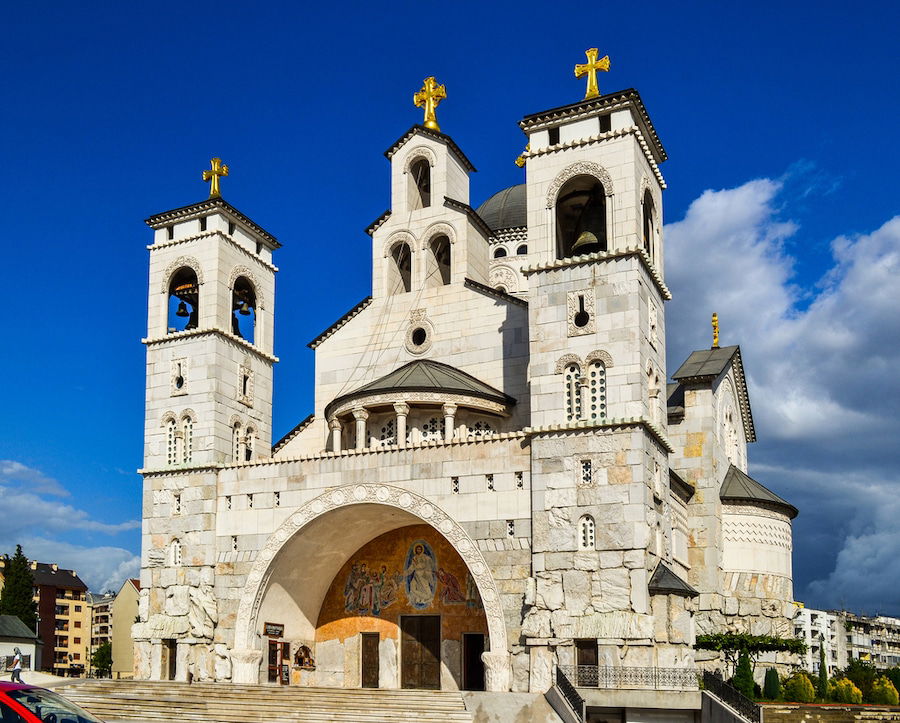
We’ll start this southwestern Balkans road trip in the Montenegrin capital of Podgorica . While the city is often overshadowed by other destinations like the Bay of Kotor , Budva, and Durmitor National Park , it’s still a great place to explore.
One of the least touristy capitals in the Balkans, Podgorica is a beautiful old city. Set at the confluence of the Ribnica and Morača Rivers, it’s home to several architectural landmarks. However, the city’s real attraction lies in its vibe—its nightlife, coffee culture, and generally pleasant atmosphere.
Additionally, it’s also a fantastic base to explore the rest of southern Montenegro . The surrounding hills offer excellent hiking and viewpoints, while the nearby river valleys are dotted with wineries.
After exploring Podgorica and its vicinity, it’s time to move on to your next road trip destination: Lake Skadar. This famous lake is literally only about 20 kilometers and less than 30 minutes from the capital of Montenegro .
Brands We Use And Trust
Lake skadar, montenegro, and albania.
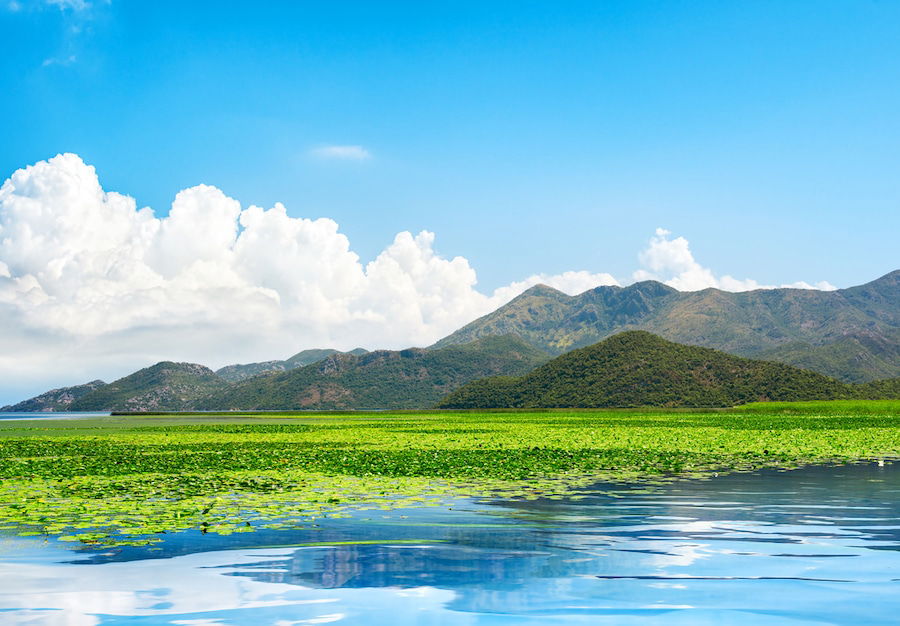
The Morača River runs from Podgorica into Lake Skadar at its northwestern end (the road basically parallels it). Simultaneously, the Bojana River drains the lake into the Adriatic Sea at its southeastern end in Albania .
Surrounded by karst mountains and lined by rocky shores, Lake Skadar is the Balkans’ largest natural lake, divided between Montenegro and Albania. The Montenegro part is protected as Lake Skadar National Park. On the other hand, the part of Albania is a nature reserve.
There’s plenty of history and culture to be found in the towns and villages around the lake. Especially Besac Fortress is really worth visiting. Foodies will undoubtedly enjoy indulging in the area’s artisan products like home-cured smoked ham, wines, goat cheese, honey, and rakija, the local liquor . Fish dominates the menus of the local restaurants.
Nature lovers, too, will find plenty of things to do at Lake Skadar on their Balkans road trip . Numerous outdoor activities are available, from bird watching to kayaking, swimming, cycling, and hiking.
We suggest exploring Montenegro’s Lake Skadar National Park first before moving on to the Albanian side.
This area is where you’ll find the town of Shkodër , the lake’s namesake. Visit-worthy landmarks include the Lead Mosque, Mes Bridge, Shkodër Cathedral, and Rozafa Castle.
Tirana, Albania
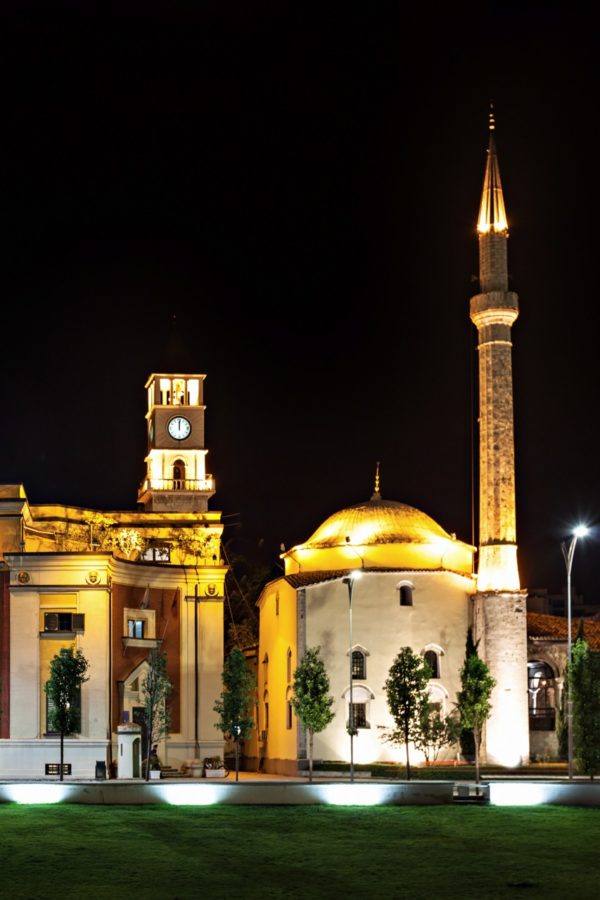
From Shkodër, it’s a pretty straightforward 100-kilometer drive south to Tirana, the vibrant capital of Albania .
We recommend spending at least two full days in this city , a place where old and new meet. The many different things to do in Tirana showcase perfectly how vibrant modern city life has swiftly replaced stagnant communist formalism in this part of Europe.
Since shaking off its communist cloak in the early 1990s, Tirana has essentially become an entirely different city. It finally became alive, if you will, and discovered its own potential and personality.
From functional architecture and other unattractive urban designs, it changed into a city filled with bustling pedestrian streets, lively festivals , colorful buildings, beautiful verdant parks, and great museums.
Tirana highlights are plentiful, ranging from Skanderbeg Square and the extraordinary Bunk’Art museums to the scenic Dajti Ekspres and the historic Tanner’s Bridge.
Lake Ohrid, Albania, And North Macedonia
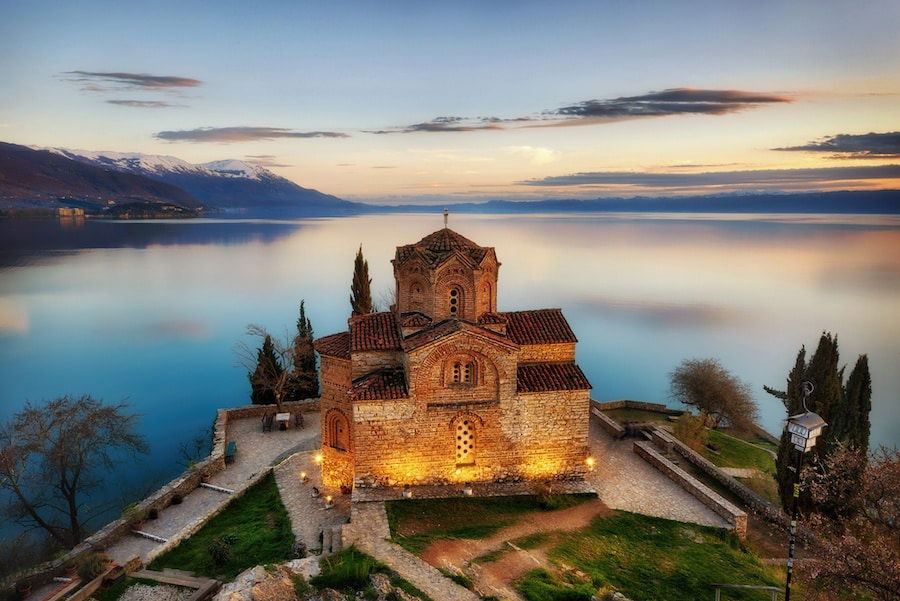
With its surrounding landscapes, Lake Ohrid is a UNESCO World Heritage Site in the Balkans that spans Albania and North Macedonia. Both sides are well worth exploring.
The region is remarkable for both its cultural and natural attractions . The Albanian side of this beautiful UNESCO site encompasses the Lin Peninsula, while Albania’s main lakeshore town is Pogradec.
Particularly the Lin Peninsula is an interesting stopping point on your southwestern Balkans road trip , home to an early-Christian 6th-century church. On top of that, three nearby sites also contain evidence of prehistoric habitation by people. This is, in other words, a very old place.
On the North Macedonian side of the lake lies the town of Ohrid. This is one of Europe’s oldest towns, home to archaeological sites spanning from the Bronze Age through the Middle Ages. In the beautiful city center of Ohrid, you’ll find many historic buildings spanning a period from the 7 th to the 19 th centuries.
Lake Ohrid also stands out in terms of natural history and beauty. It’s the deepest lake in the Balkans and one of the deepest in Europe. Additionally, this is also one of the world’s oldest lakes, its origins going back no fewer than 5 million years. (That puts it on the same scale as Lake Tanganyika and Lake Baikal regarding oldness.)
And if that’s not enough, Lake Ohrid is also a biodiversity hotspot. It’s home to about 200 endemic species, from mollusks and plankton to predatory fish. This is one of the most biodiverse “small” lakes on Earth.
Two other nearby lakes—the Prespa Lakes—and Prespa National Park make for a great road trip stop .
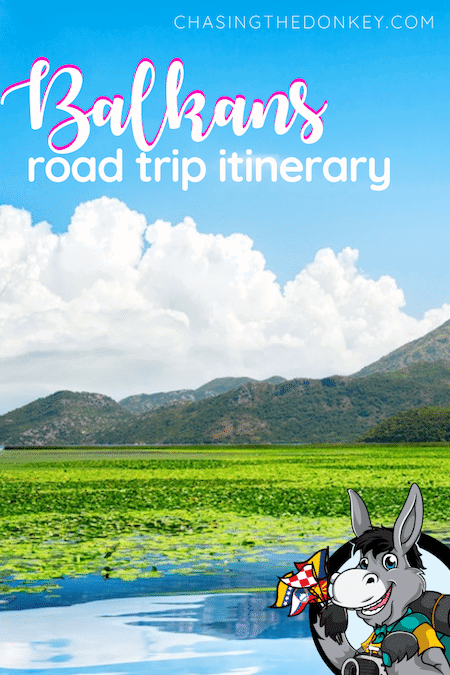
Thessaloniki, Greece
One of the longest driving stretches on this southwestern Balkans road trip itinerary is from Ohrid to Thessaloniki, Greece . This section is about 290 kilometers long, a journey that’ll take you between 3.5 and 4 hours.
The second-largest city in Greece , Thessaloniki is the most important city in the northern part of the country. It’s a modern metropolis with its roots deep in Antiquity.
Ancient landmarks include such grand monuments as the White Tower of Thessaloniki and the Arch of Galerius. Another great attraction is the so-called Paleochristian and Byzantine Monuments of Thessaloniki , a UNESCO World Heritage Site. The city’s Aristotle University is the largest in the Balkans.
Additionally, Thessaloniki also features a booming nightlife, a thriving arts community, and some excellent beaches. This combination of ancient and modern architecture and leisure is why this fantastic Greek city made our list of the greatest southwestern Balkans road trip destinations.
Move This Adventure To Your Inbox & Get An Instant Freebie

No spam. Unsubscribe at any time.
Skopje, North Macedonia
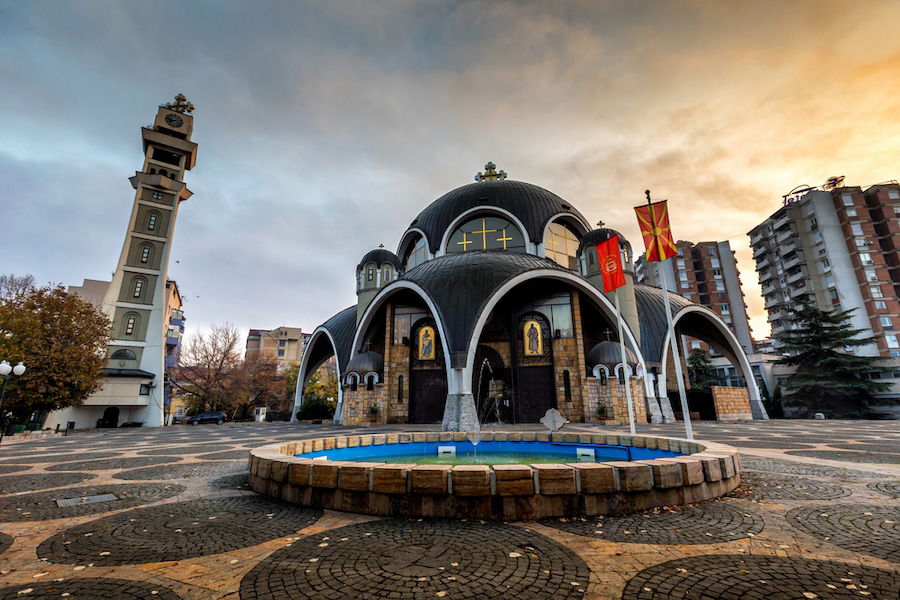
From Thessaloniki, it’s only about 3.5 hours north to Skopje, the capital of North Macedonia . This is the final destination on this specific road trip around the Balkans’ southwestern countries.
Located in the heart of the Balkan Peninsula, Skopje has been under Roman, Byzantine, and Ottoman rule, a rich history that’s visible at various locations around the city. Numerous landmarks dot Skopje , from the 15 th -century Stone Bridge and the Kale Fortress to the Old Bazaar of Skopje and the Mother Teresa Memorial House.
As North Macedonia’s capital, you can visit several excellent national museums. At the western outskirts of central Skopje, you can get to the top of Mount Vodno by cable car . A bit further outside the city, hiking trails lead to the medieval monasteries and beautiful Matka Canyon cave.
These are our six key destinations around which you can build your own southwestern Balkans road trip itinerary. Which other cities, parks, or lakes would you include?
- All About Traveling In The Balkans
- Guide To Backpacking In The Balkans
- Best Beaches In The Balkans
- Top Places To Go Hiking In The Balkans
- One Month Itinerary For Traveling Through The Balkans
- Ultimate 5-Day Balkans Travel Itinerary
- Two-Week Road Trip Itinerary Through The Balkans
- Balkan Cruises – Where You Can Cruise To In The Balkans
Comments (3)
As North Macedonia’s capital, there are also several excellent national museums you can visit. At the western outskirts of central Skopje, you can get to the top of Mount Vodno by cable car. A bit further outside the city, hiking trails lead to the medieval monasteries and beautiful Matka Canyon cave
Is it difficult to cross from Montenegro to Albania in a rental car? I keep seeing conflicting information. Thank you
You can take a rental car from abroad to Albania if you have the authorization of your car rental company. Some car rental companies don’t authorize cross border rentals.
Leave a Reply Cancel reply
Your email address will not be published. Required fields are marked *
Save my name, email, and website in this browser for the next time I comment.
This site uses Akismet to reduce spam. Learn how your comment data is processed .
Subscribe To Unlock Your FREE Customizable Travel Packing List & All Our Best Tips!
Unlock Your FREE Customizable Travel Packing List!
Subscribe Now For Instant Access To Stress-Free Packing
- Share full article
Advertisement
Supported by
Greece Announces New Plan to Protect Some of Its Pristine Beaches
The government has pledged to crack down on rapid development, and on seaside businesses seeking to take advantage of a tourist boom. But some residents and conservationists are unimpressed.

By Niki Kitsantonis
Reporting from Athens
The Greek government on Friday published a list of 198 “untrodden beaches” that it said are now off limits to bars, restaurants and large public gatherings in its latest attempt to contain development and address the backlash to the throngs of tourists that descend on the country’s coastlines each year.
The move comes amid growing frustration among residents of Greek islands and parts of the coastal mainland that are popular with foreign visitors. Protests ballooned into a nationwide “beach towel movement” last summer as disgruntled locals complained that they were being pushed off their own beaches by businesses seeking to take advantage of a tourist boom that brought more than 32 million foreign visitors to Greece last year .
On the country’s Cycladic islands, local residents joined forces with the authorities to push back against a wave of construction .
Greece’s conservative government has pledged to crack down on the development, and on seaside businesses that violate regulations. In February it passed a law aimed at regulating the use of the country’s coastline, imposing penalties of up to 60,000 euros for businesses occupying more than 50 percent of Greek beaches with umbrellas and sun beds.
Critics said the law did not go far enough to curb the problem, with some claiming that the government was perpetuating the issue by not tackling illegal land use more comprehensively.
The list of “untrodden beaches,” unveiled in a joint agreement between Greece’s finance and environment ministers, is part of a broader effort to restore balance, the government said. “The main goal is to combine environmental protection with sustainable development,” Kostis Hatzidakis, the economy and finance minister, said on Friday.
“The environment is a valuable component of the Greek tourist product,” he said.
Under the new initiative, the government was putting public assets “under a strict framework of rules, penalties and obligations,” Mr. Hatzidakis said. Inspections and transparency would be increased, as would “the enforcement of the law,” he added.
The beaches on the list are in areas included in the European Union’s Natura program, a network of vulnerable habitats across Europe that are protected under European law. Among the beaches listed on Friday are spots on popular islands such as Milos, Naxos, Lesbos, Samothrace and in the southern Peloponnese peninsula.
The islands were selected based on the advice of the country’s Natural Environment and Climate Change Agency and are all “areas of high ecological importance,” Theodoros Skylakakis, the environment and energy minister, said on Friday.
Under the new initiative, no section of those beaches can be auctioned off for commercial use, and the presence of sun-loungers and umbrellas will be prohibited, as will the organization of public events involving more than 10 people.
Another initiative being introduced by the government is a new app called “MyCoast,” on which people can report violations.
Some environmentalists in Greece were not impressed by Friday’s announcement. Eleni Andrianopoulou, a resident of Naxos and a member of a local “Save the beaches” group, said the government’s original plan had been for more than 1,000 beaches nationwide to be covered, adding that Natura areas require “real protection.”
“From the beginning we had stressed that this reform for untrodden beaches was a fraud.”
Demetre Karavellas, director of the World Wildlife Fund Greece, said the authorities were jumping the gun with their list of pristine beaches, noting that there are more than 100 marine and coastal areas in Greece that are recognized by the Natura program but have yet to be effectively managed or conserved.
“The government should start by complying with its basic legal obligations before creating new vague categories of protection,” he said.
Niki Kitsantonis is a freelance correspondent for The Times based in Athens. She has been writing about Greece for 20 years, including more than a decade of coverage for The Times. More about Niki Kitsantonis

IMAGES
VIDEO
COMMENTS
Preveza. The ruins of Nikopolis, built in 28 BC by Octavian (later Augustus), after he defeated Mark Antony and Cleopatra in the naval Battle of Actium (Aktion),…. Discover the best attractions in Northern Greece including Vergina Royal Tombs Museum, Mt Olympus, and Vikos Gorge.
Greece (Northern) Tours & Trips. Find the right tour for you through Greece (Northern). We've got 27 adventures going to Greece (Northern), starting from just one day in length, and the longest tour is 9 days. The most popular month to go is June, which has the largest number of tour departures.
Enjoy an unforgettable journey through the varied landscapes of northern Greece with this 10-day itinerary. Explore Thessaloniki with its incredible Byzantine architecture before making your way to the clifftop monasteries of Meteora. Travel to the atmospheric silver lake at Ioannina and trek through the mountain villages of Zagori. Then head to Corfu, where you'll fill up on a culinary tour ...
10. Take a Boat Trip at the Lakeside City, Kastoria. Kastoria isn't as well-known as some of the other cities in Northern Greece, but it has such a wide variety of activities to do and places to visit. It's surrounded by mountains, lakes and forests, all of which are excellent for hiking through.
This 5-day mainland tour offers a unique opportunity to explore the northern Greece and its major historical sites and cities, passing by the archaeological site of Delphi, explore the overwhelming monasteries of Meteora, visit the city of Dion at the foot of Mount Olympus, admire the vibrant city of Thessaloniki, stop at Pella - the capital of Alexander the Great's Macedonian kingdom, and ...
The second drive also takes visitors from a lakeside town, Kastoria, to the beautiful remote Prespa Lakes, on Greece's northern borders. Scenic Drives in Northern Greece 1 From Ioannina to Meteora. The region of Epirus in north-west Greece is one of the most stunningly beautiful in the whole country… indeed, in the whole of Europe.
Travel. Know Before You Go. Europe. Forget Mykonos: Sarah Souli's intel on drinking, eating, dancing (and cursing) in northern Greece. 1. It's not the south. Forget Mykonos, Santorini, or even Athens. The northern part of Greece, which shares borders with several Balkan countries and Turkey, is a distinct destination.
Visit Mount Olympus. Mount Olympus is a region in Northern Greece where mythology comes alive and transports you to ancient times ruled by ruthless yet generous gods. The mountain is the highest in Greece and was made the country's first national park in 1937. It is a UNESCO World Heritage Site and is famous for its wildflowers that bloom in ...
Zagorohoria. Epiros. Parga. Epiros. Preveza. Epiros. Igoumenitsa. For Explorers Everywhere. Where to go, best places to stay, travel tips and and best holiday destinations - inspiration from the experts at Lonely Planet.
The Cyclades islands include two of the most famous Greek Islands: Mykonos and Santorini. Visit these and some of the smaller, quieter, islands. With white washed houses, narrow cobbled streets, blue domed roofs and stunning beaches, they are what Greece is all about. view trip ⤍. 9 days / from2205 USD.
Choosing the 10 best beaches in Northern Greece is not an easy task, as the country ranks eleventh in the world on the longest coastline and 380 beaches with a Blue Flag. In this ranking you will find the best beaches in Northern Greece, perfect for an unforgettable vacation. However, keep in mind that there are dozens of other exotic and picturesque beaches, no matter which part of Greece you ...
Journey through the heart and soul of Northern and Central Greece, a region where ancient myths and modern life converge against a backdrop of captivating landscapes. This area translates into a diverse trip, as past kimkim travelers have enjoyed combining hikes in the land of the Olympian gods with exploring the archaeological wonders of Delphi and wandering through the vibrant streets of ...
Source: Link. Veria is the capital of Imathia County and is situated at the foot of Mount Vermion. This picturesque town in Greece is admired as Little Jerusalem, and this foots on the many Byzantine Churches that exists there. St. Paul the Apostle visited Veria in the 1st Century Ad. Veria stood out as an iconic city of the Byzantine Empire ...
DAY 5 | Travel to Athens via Pella. Depart for Pella, the capital of Alexander the Great. See the exquisite floor mosaics of the 4th century BC villas, in situ as well as in the new Museum. Then visit the Archaeological Park of Dion (sacred city of the Macedonians, at the foot of mountain Olympos). After the visit begin the drive south through ...
Hiking route · Epirus. Achéron river valley hike, Epiros GR. Top easy. 4. 8.1 km. 3:30 h. 220 m. 220 m. Wonderful hike in the river valley of the turquoise-green Achéron, one of the 5 rivers of the dead in antiquity, which was regarded as the entrance to the underworld.
Most travelers will find 12 to 14 days perfect for a well-paced Greece trip with stops in Athens, Naxos, Santorini, and Crete's Heraklion and Chania. It's possible to hit the highlights in 10 or 11 days if you don't mind a fast-paced itinerary. Travelers with more time can enjoy extra sights and activities at each stop or explore more of the country—some favorite itinerary extensions include ...
Τhe North Evia Festival from 18-22 of July 2022 consists of five days full of music workshops, hiking, gorge crossing, swimming under waterfalls and in the sea, during daytime, and free concerts open to everybody after the sunset. See the detailed line-up and daily schedule here.
Things to do near Visit North Greece on Tripadvisor: See 22,962 reviews and 1,415 candid photos of things to do near Visit North Greece in Thasos, Greece. Thasos Tourism; ... Private Day Trip from Kavala to Thassos via... from $972.62. More Info. See All. 18 IS Oktovirou #22 of 37 things to do in Thassos Town (Limenas)
Northern Greece, Albania & North Macedonia: Ancient Lands of Alexander the Great. Small groups of no more than 16 travelers, guaranteed. Traveler Reviews (219) 91% Traveler Excellence Rating. Greece: Thessaloniki, Meteora, Zagoria Albania: Gjirokaster, Tirana North Macedonia: Ohrid, Skopje.
Tour the Nemean Wine Route. The ideal place to start your Peloponnese road trip is the picturesque Venetian seaside town of Nafplio, set against the backdrop of a steep mountain topped with a fortress. An easy 45km (28mi) drive north takes you to Nemea, one of the best places in Greece to get acquainted with local grape varieties.
aworldtotravel. on November 25, 2020 at 11:00 AM. Experience Greece in all its glory by driving around the country in 2 weeks with this road trip itinerary. 7 stops, endless fun. While many people think of Greece as the ultimate island destination, with Mykonos and Santorini headlining honeymoon itineraries, it's also a fantastic road trip ...
Greece road trip ideas. Route: Ioannina - Monodendri - Oxia - Dilofo - Vitsa - Papigo - Kolymbithres. Zagorohoria is one of the most charming travel destinations in mainland Greece. This region consists of more than 60 idyllic little settlements. The roads here are not the easiest to navigate.
Thanks to its ancient ruins, picturesque beaches, and incredible food, Greece is one of the top tourist destinations. In 2023, over 32 million people visited. I was born in Athens and currently ...
One of the longest driving stretches on this southwestern Balkans road trip itinerary is from Ohrid to Thessaloniki, Greece. This section is about 290 kilometers long, a journey that'll take you between 3.5 and 4 hours. The second-largest city in Greece, Thessaloniki is the most important city in the northern part of the country.
Greece Announces New Plan to Protect Some of Its Pristine Beaches The government has pledged to crack down on rapid development, and on seaside businesses seeking to take advantage of a tourist boom.